BE IN TO WIN ONE OF THREE TRIPS TO THE CALGARY STAMPEDE 2024*










More details over the page!


BE IN TO WIN ONE OF THREE TRIPS TO THE CALGARY STAMPEDE 2024*










More details over the page!



Forage brassicas can provide high quality winter feed to carry stock numbers during winter while pasture production is at the lowest. It can also reduce your dependence on bought-in feed such as baleage and an excellent lead-in for re-grassing.
Key points when considering growing a winter brassica:

Will you require resource consent for growing a winter brassica?

Do you know the soil type and fertility status?


Do you have issues with Clubroot?
Have you considered sowing dates and crop maturity dates?





Will the brassica variety suit the stock class that will be grazing it?
Will you be following this crop with a brassica?
Have you considered suppliments for this stock while grazing the crop?





To get the most out of your forage brassica crop this season, consider using Milestone from Corteva to control a wide spectrum of broadleaf weeds, or Korvetto herbicide for more re-cropping flexibility.

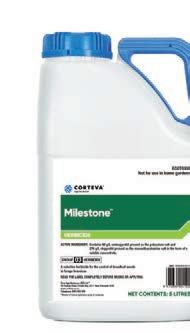


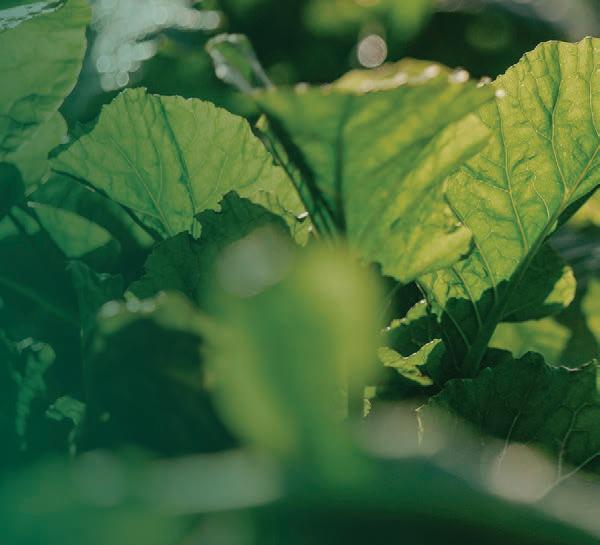
For pests, Sparta plus Transform offers outstanding control for caterpillars and aphids, while protecting beneficial insects. Remember to always check labels before use. Seed
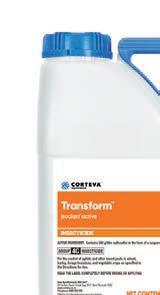
SovGold kale from Agricom is a reliable, high yielding variety. With a large Cleancrop portfolio offering, PGG Wrightson Seeds are renowned for their brassica range. Plus, Invitation swedes are now available in pelleted form, perfect for precision drilling.
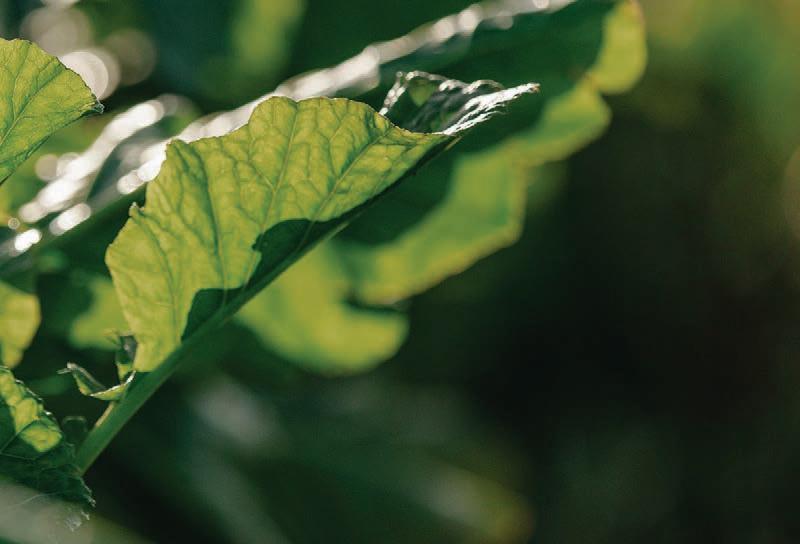


FONTERRA chief executive


Miles Hurrell says he is hopeful Chinese dairy demand may lift in the new year as the last of the New Zealand-China free trade agreement milk powder duties fall away on January 1.
Demand has been sluggish so far this season, resulting in Fonterra reducing its milk price forecast from $8/kg milk solids midpoint in May to $6.75/kg MS on August 18. However, buyers will be wanting to take advantage of the FTA with that 10% duty coming off after that date. Within contract periods one to five, it is periods four and five that will have product landing in China after January 1, Hurrell said.



“That’s why you’re also seeing a situation where there are not too many Chinese buyers looking to buy in contract periods one, two and three because they would be lumped in with that higher duty –that’s another piece that’s in play here.”
This is giving him confidence that demand will lift, confidence will rise and there may be an improvement in the milk price in the new year.
Hurrell said the Chinese economy had come off its peak from its pre-covid highs and went through a severe lockdown, which did impact on dairy demand last year, particularly in the food service sector.
“As they came out of covid in the early part of 2023, we saw demand rebound and come back relatively strong as people started going out and about and consumers were doing their thing.”
At the same time, there was significant growth in Chinese domestic milk production.
Hurrell said a lot of the milk that was produced during that growth/lockdown phase was dried because it was surplus to requirements.
“That started to bleed out into the Chinese market at a time when we were seeing demand rebounding.








“So, you had a hit of surplus milk
Continued page 3
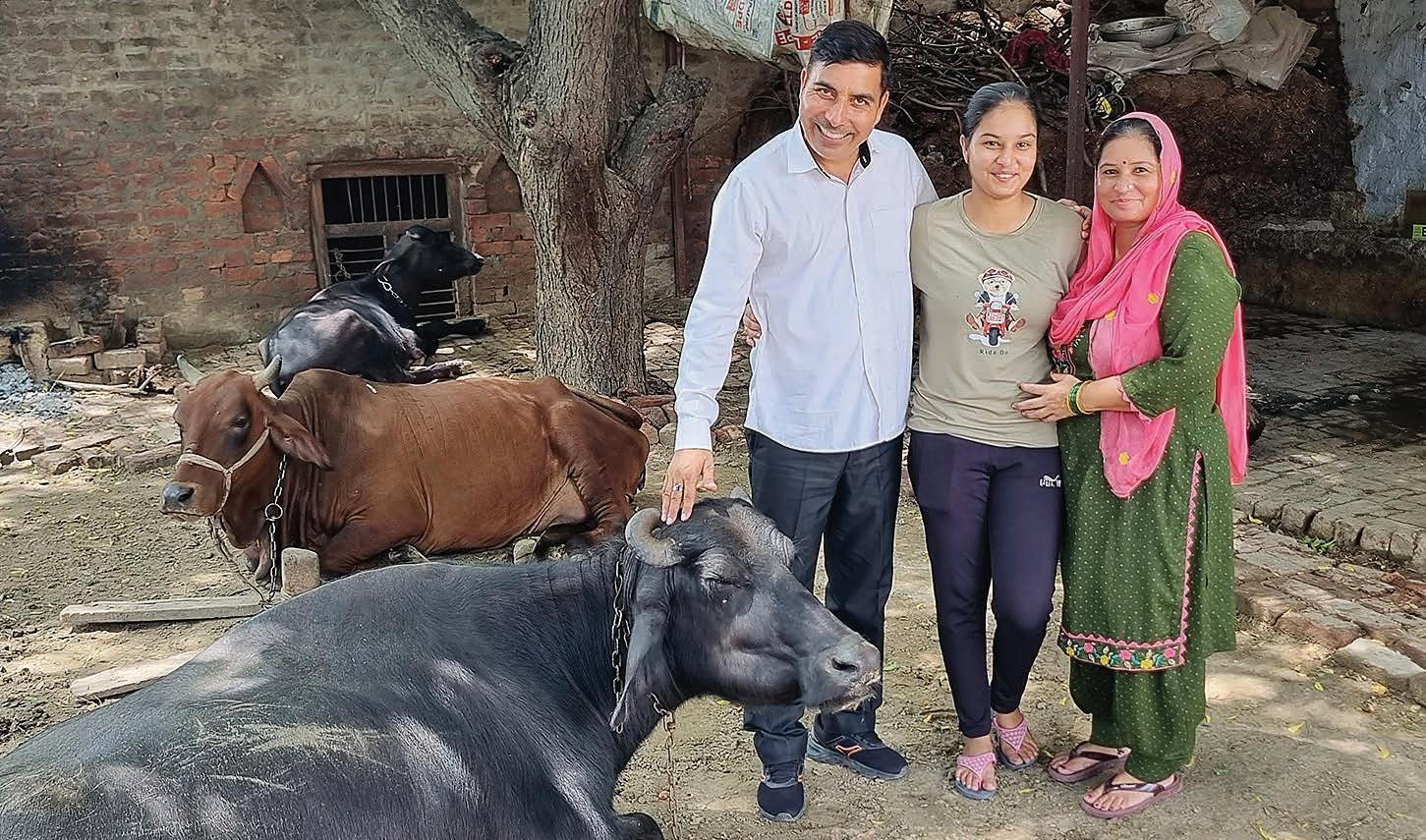


An hour from the choking sprawl of central New Delhi is a world of villager-farmers and landowners, the backbone of India.
NEWS 10



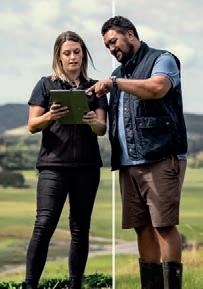
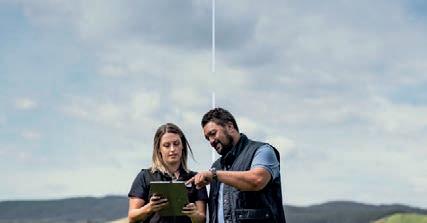
Miraka chair Kingi Smiler left a glittering career in corporate NZ to use his skills to build up his whānau and the wider whenua.
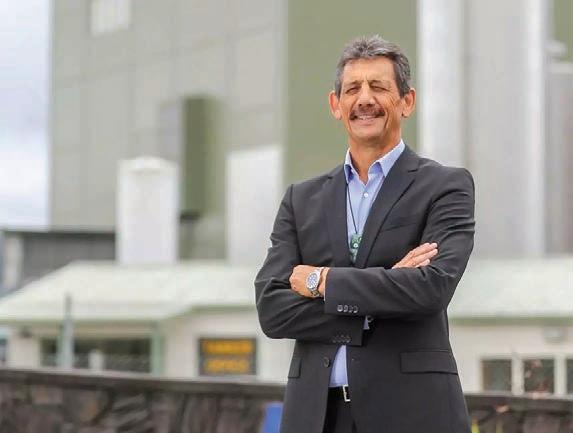
PEOPLE 20

Consolidation is a must if the strong-wool industry is to thrive again, Feds wool chair says.

NEWS 9
Exports will suffer if NZ fails to meet Paris targets – and it can’t do so by mitigation alone.
NEWS 12
Sheep farmers have endured a year of depressed prices and they’re not out of the woods yet.
MARKETS 36
EDITORIAL
Bryan Gibson | 06 323 1519
Managing Editor bryan.gibson@agrihq.co.nz
Craig Page | 03 470 2469
Deputy Editor craig.page@agrihq.co.nz
Claire Robertson
Sub-Editor claire.robertson@agrihq.co.nz
Neal Wallace | 03 474 9240
Journalist neal.wallace@agrihq.co.nz
Gerald Piddock | 027 486 8346
Journalist gerald.piddock@agrihq.co.nz
Annette Scott | 021 908 400

Journalist annette.scott@agrihq.co.nz
Hugh Stringleman | 09 432 8594
Journalist hugh.stringleman@agrihq.co.nz
Richard Rennie | 027 475 4256
Journalist richard.rennie@agrihq.co.nz
Nigel Stirling | 021 136 5570
Journalist nigel.g.stirling@gmail.com
PRODUCTION
Lana Kieselbach | 027 739 4295 production@agrihq.co.nz
ADVERTISING MATERIAL
Supply to: adcopy@agrihq.co.nz

SUBSCRIPTIONS 0800 85 25 80 subs@agrihq.co.nz
PRINTER
Printed by Stuff Ltd
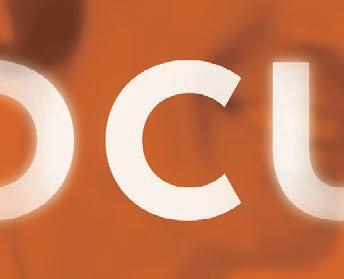
Delivered by Reach Media Ltd
Andy Whitson | 027 626 2269 Sales & Marketing Manager andy.whitson@agrihq.co.nz

Steve McLaren | 027 205 1456 Auckland/Northland Partnership Manager steve.mclaren@agrihq.co.nz


Jody Anderson | 027 474 6094 Waikato/Bay of Plenty Partnership Manager jody.anderson@agrihq.co.nz
Palak Arora | 027 474 6095 Lower North Island Partnership Manager palak.arora@agrihq.co.nz
Omid Rafyee | 027 474 6091 South Island Partnership Manager omid.rafyee@agrihq.co.nz
Debbie Brown | 06 323 0765 Marketplace Partnership Manager classifieds@agrihq.co.nz

Andrea Mansfield | 027 602 4925 National Livestock Manager livestock@agrihq.co.nz
Real Estate | 0800 85 25 80 realestate@agrihq.co.nz
Word Only Advertising | 0800 85 25 80 Marketplace wordads@agrihq.co.nz
Dean and Cushla Williamson Phone: 027 323 9407 dean.williamson@agrihq.co.nz cushla.williamson@agrihq.co.nz
Farmers Weekly is Published by AgriHQ PO Box 529, Feilding 4740, New Zealand Phone: 0800 85 25 80 Website: www.farmersweekly.co.nz
ISSN 2463-6002 (Print)
ISSN 2463-6010 (Online)


Beef + Lamb New Zealand is calling on farmers to take part in a groundbreaking Facial Eczema research project by collecting sheep dung.
The three-year study will help BLNZ understand how widespread Facial Eczema is in New Zealand.
Those participating in the study will be required to collect samples 16 times, roughly every two weeks, from their mob of sheep each year of the study.
Dr Liz Shackleton has been appointed chief executive of Animal and Plant Health New Zealand. Shackleton has been leading the DairyNZ Biosecurity team, including the Mycoplasma bovis programme team, since 2018, and held leadership roles in the pharmaceutical sector after starting her career as a rural veterinarian.
She is a chartered member of the NZ Institute of Directors and a board member of the NZ Veterinary Council.

The ASB Commodities Index in United States dollar terms has fallen to its lowest level in three and a half years, dragged down by the latest drop in world dairy prices.
The recent fall in the value of the New Zealand dollar to US59c has only partially cushioned the decline in commodity prices, as the index in a is now the lowest in two and a half years. The indexes for sheep, beef, forestry and fruit fell about 1% each.
Cropping farmers have ticked the Yes box, giving the green light for the continuation of the Foundation for Arable Research. The results show strong support for continued investment in research and extension for the arable industry.
FAR received the declaration of result on Monday August 28, following its sixth referendum of growers.
DESPITE a tough year, Tairāwhiti farmers pulled together to once again support the Gisborne-East Coast Cancer Society stock drive, as they have done for 25 years.
Held at the Matawhero saleyards each year, the stock drive attracts support from a wide breadth of people.
The principal sponsor is ANZ and relationship associate Michelle Hawea does the mahi to organise the event, following in the footsteps of founder Andy Woolfield. But Hawea said the success of the event lies with the absolute generosity of the farmers, auctioneers and purchasers.
“I want to relay gratitude and thanks to not only the area co-ordinators and donors in our community, who have had such a rough year, but also
Continued from page 1
enter the market at a time when people were starting to come back from their covid restrictions.”
Overlaying all of this are economic indicators that suggest the economy is slowing down faster than many anticipated.
“There are a few things in play and what you see in a Chinese context is that when there is a little bit of uncertainty as we see now in that economy, people are starting to save more so their consumption drops and their saving patterns go up.”
It has seen the saving rates of Chinese consumers lift significantly.

“All of those things have put a damper on the industry that we play in.”
Within the market itself, the slowdown in demand is mostly affecting Fonterra’s ingredients business because of the stockpiling of China’s domestic supply.

However, the food service and consumer brands business are










to the incredible support of PGG Wrightson manager Jamie Hayward, stock agents, auctioneers
Chris Hurlstone, Neville and Cody Clarke, and the many generous purchasers who often pay above

continuing to go from strength to strength, he said.
“There’s still a large portion of the population out there spending and doing their thing and we have a very strong position in out-ofhome consumption.”
Fonterra’s consumer brands business is also faring well, though it has small presence in that market.
When it was sending as much product into those markets as it could, Fonterra’s products sat at the top end of that market and it would not be possible to convert all of its products from ingredients to food service, he said.
Other markets are also starting to pick up some of that slack, but not to the same degree.
“We are seeing the Middle East and Africa emerge as an important market for us and East Asia is still going strong and other parts of Asia, like Japan and Korea, are going very strong.
“But it wasn’t enough to pick up the slack in what is an important market for our key ingredients business.”
market prices to support the day,” she said.
“They really contribute to the success seen year on year. The rural community we have here is unreal – they are generous and
Those markets are faring well in the midst of talk of a global economic slowdown, but demand is not strong enough to pull prices up.
It is too early to tell what it will mean in the short term with the peak milk period fast approaching as farmers look to cut costs because of the low milk price, he said.
“How we see that play out in terms of supply is yet to be determined.

“It’s a bit too early in the season for us to have any sort of gauge. Clearly it’s been wet through the back end of winter and it’s looking like it’s continuing to be wet for a period.
“We are not seeing the milk growth we anticipated and whatever farmers do between now and Christmas will have a huge bearing on what happens in the new calendar year.”
Hurrell said he recognises that the situation inside the farmgate is extremely tough with the current midpoint well below what is considered a break-even milk price for most farmers.
humble beyond words.”
The stock drive was held on August 25 and 313 sheep were donated by local farmers on the day. Subsequent sales will also sell lines donated to the Cancer Society.
The 313 was made up of 105 prime sheep, 218 lambs and seven store sheep.

A total of $33,583 (excluding GST) was raised with one line of 53 lambs from one annual donor selling for $215 per head, the highest commercial lamb price nationwide this season.
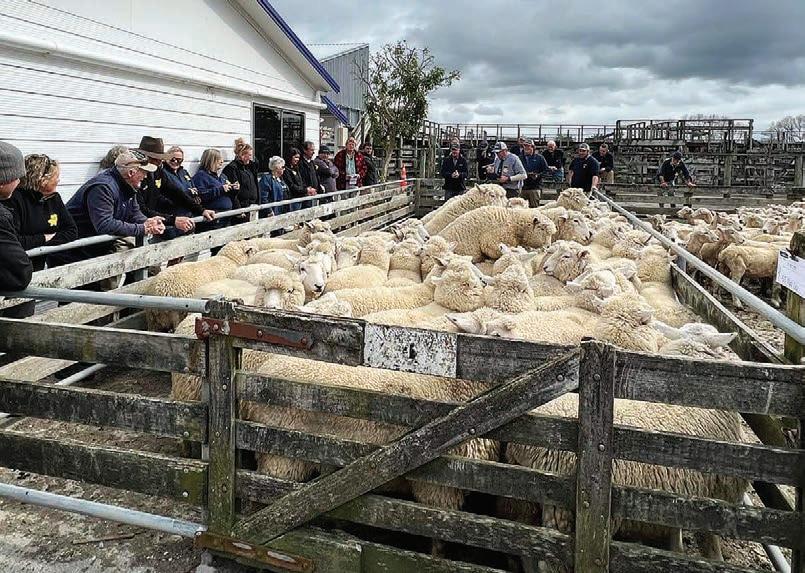
PGG Wrightson regional livestock manager Jamie Hayward said this year was always going
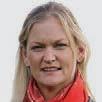
to be harder, but the results were fantastic.
“All buyers were generous with their bids in what is a tough market environment.”




Lines sold above market value, but all money raised at the stock drive stays local, which gives added incentive to support the cause.

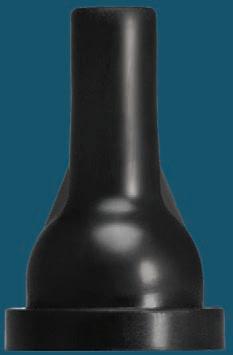
Over the past 25 years, more than 8000 sheep have been donated and around $1.1 million raised.
Shay Podjursky from the Cancer Society echoed Hawea and Hayward’s comments.
“We are very grateful to those people that contribute to this event. Twenty-five years of donations makes a real tangible difference to our local community and we are so appreciative of the ongoing support, especially given how rough the year has been.”
The money raised most often goes to supporting cancer patients through counselling, therapy and transportation.

 Gerald
Gerald
MILES Hurrell has defended the cooperative’s decision to put its new season opening forecast at a $8/kg MS midpoint, only to slash it three months later.
The Fonterra CEO said the cooperative made the decision with the best information it had at the time and is operating in a volatile commodity market.
“Our job is to try look through that the best we can and recognise that we are in a market and the markets will move accordingly.”
He said Fonterra’s job is to find the most accurate forecast it can.
Demand was still strong when it set its new season forecast and while some indicators were starting to show that the Chinese economy was starting to weaken, it was

“certainly not to the extent that we’re seeing now”, he said. “Hindsight is wonderful, but at the same time we have to put our best foot forward.
“We do get asked sometimes why don’t we go more conservative at the start and ramp it up later, but that’s not how we are operating – we’re operating to give the best forecast that we can.”
Hurrell said Fonterra is dealing in a commodity market that is subject to huge volatility and that dairy prices have been relatively stable for the past three to four years. “You can try and predict the future, but at the same time, we are dealing in a market and buyers and sellers will make their own decisions based on their own economic position on the day.”
MORE: See Letters to the editor, page 16
‘We’re giving the best forecast we
Piddock MARKETS Dairy
All buyers were generous with their bids in what is a tough market environment.
Jamie Hayward PGG Wrightson
GREEN Party coleader James Shaw does not support the government’s new agricultural emissions pricing policy, but as climate change minister will work to implement it, he says.
Farming groups also appear to have hardened their attitude to the policy, using terms such as “tone deaf”, “thoughtless” and “dismay”, a far cry from last December when they stood alongside then prime minister Jacinda Ardern to announce the proposals as part of the He Waka Eke Noa (HWEN) climate action partnership.
The change is due in part to the timing of the policy announcement. Farming groups were given details less than 24 hours before they were publicly released.
There is also unhappiness about the lack of detail about pricing and the decision to not include a review of targets or the methodology for measuring methane.
Shaw told Farmers Weekly he does not support the policy, but as climate change minister he is bound by Cabinet responsibility and will work to implement it.
The government’s policy includes farm-based emissions pricing, development of systems to measure and report emissions, retaining a split gas approach and delays to reporting on emissions until the fourth quarter of 2024 with pricing starting in the fourth quarter of 2025.
HWEN has not yet responded to the policy announcement. Last December it was receptive to the policy direction.
“This is a high-level, directionsetting [set of proposals] and does not have all the detail farmers and growers will need, but it is


an important milestone,” HWEN independent chair Sarah Paterson said at the time.
“It confirms that HWEN has been successful in putting the case for a farm-level split gas levy instead of including agriculture in the New Zealand Emissions Trading Scheme.
“It shows the government is listening to sector and Māori views and is taking action to address concerns.
“This shows the value of working together.”
HWEN programme director Kelly Forster told the Carbon Forestry conference this week that pricing remains the most contentious element of the policy.
She welcomed work to combine 11 greenhouse gas emission calculators into one and the greater recognition of sequestration.
DairyNZ chair Jim van der Poel said in an interview last week that the government’s focus on pricing agricultural emissions ignores the fact they are falling.
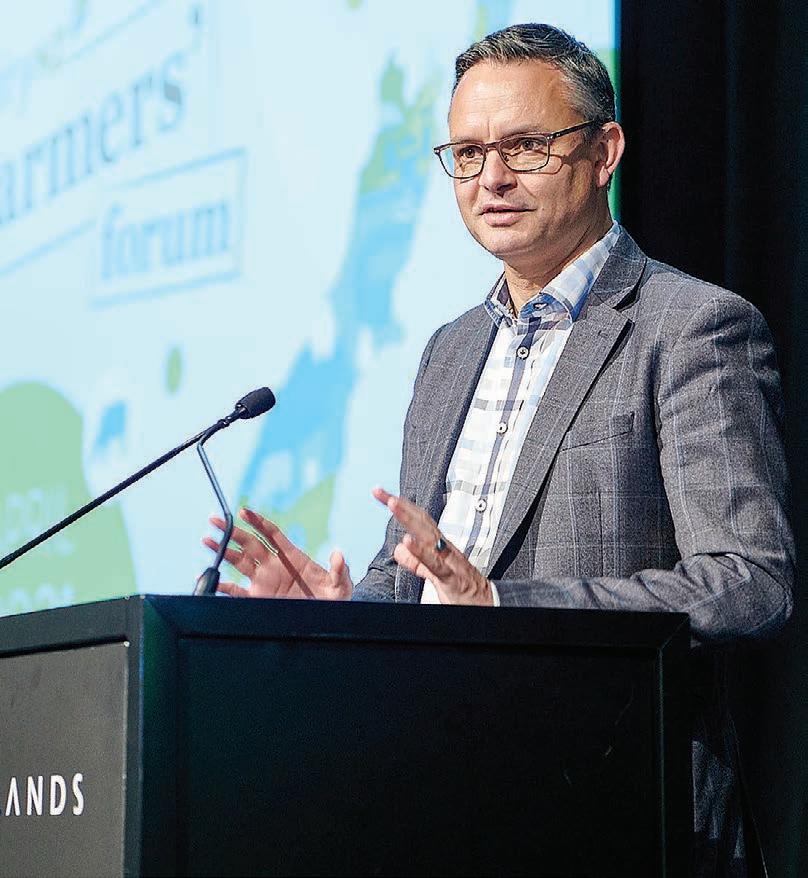

Without first settling on a standardised system to measure emissions, Van der Poel said, there is no way of knowing the scale of reduction required or whether that requires an emissions price.

“Once we know our number we can then see how we are tracking to meet our targets and what is left to be done.”
There are only two reasons to ever impose a levy, he said: to fund research and development, which the primary sector is doing, or to incentivise the adoption of new technology.
As Green Party co-leader, Shaw has reservations about the policy, saying it is overly bureaucratic and based on what he called “heroic modelling assumptions”.
With sheep and beef farmers having narrow profit margins, he said, prices ensure viability while also reducing emissions.
The price should not be left for ministers to set.
“Ministers setting a price generally has not worked out well in the past.
“My view is that the pricing mechanism proposed will not be effective and we need a much more market-oriented, less bureaucratic approach to the whole thing, and as Green Party co-leader I want to build such a system.”
He is proposing a tradeable quota system for methane and nitrous oxide emissions, whereby those who reduce emissions more than required can trade rights to their surplus emissions to those who cannot.
He gave the example of a farmer who has to reduce emissions from 100t to 99t, but actually reduces them to 98t.
That would give the farmer a tonne to trade with another farmer.
Such a system would be market-
MISGIVINGS: Climate Change Minister and Green Party co-leader James Shaw says the government’s proposed pricing mechanism ‘will not be e ective’.
led and encourage innovative thinking, he said. It is a proposal that was supported by some in the industry but not by government officials or HWEN.
Shaw said the concept is not foreign to Fonterra shareholders, who trade shares on the NZ Stock Exchange through the Fonterra Shareholders’ Market.
THE ASB Commodities Index in United States dollar terms has fallen to its lowest level in three and a half years, dragged down by the latest drop in world dairy prices.
The recent fall in the value of the New Zealand dollar to US59c has only partially cushioned the decline in


commodity prices, as the index in NZD is now the lowest in two and a half years.
ASB reports the dairy index fell 6.5% after the latest Global Dairy Trade auction, and that component help pull the USD Index down 3.5%.
The indexes for sheep, beef, forestry and fruit fell about 1% each.
“Last week’s dip in dairy prices might have been the most dramatic illustration of

softer demand for NZ’s key export commodities, but prices remain weak across the board,” ASB economist Nat Keall said. “The common theme remains the soft Chinese outlook.
“Chinese consumer confidence is still very weak, with no major stimulus measures yet to be unveiled.
“This remains a major headwind for NZ’s exports and broader commodity prices more generally.”
Once we know our number we can then see how we are tracking to meet our targets and what is left to be done.
Jim van der Poel DairyNZ
Farmers Weekly rst saw the light of day on September 3 2003. Over the 20 years since then we have appeared regularly in the mailbox of every New Zealand farm, carrying essential market data, holding sectoral leaders and agribusinesses to account and keeping farmers, growers, investors and regulators informed. Charlie Williamson reports.





TWENTY years ago this week the first edition of New Zealand Farmers Weekly landed in the mailbox of every farmer in the country.

Since that first edition the primary sector has experienced transformation in almost every respect, from the technology we use to the way we farm and the organisations that connect Kiwi farmers with the world.
Veteran agricultural journalist Hugh Stringleman MNZM, who reported on not only the past 20 years in agribusiness but the 20 before that as well, said it has been a tale of gradual improvement.



“There have been the ups and downs of farmers’ incomes, especially with the major downturns, the Global Financial Crisis in 2008 and then the dairy price collapse in 2013/14.
“But in between that farmgate prices have gradually increased and profit margins have improved, and the industry has consolidated.



“We also have some excellent agricultural science inputs into farming and horticulture. So it’s been a gradual improvement in the whole sector from my perspective.”


Stringleman said an important feature of the past 20 years has been the rise of co-operatives like Fonterra, which were being formed around the same time Farmers Weekly began.
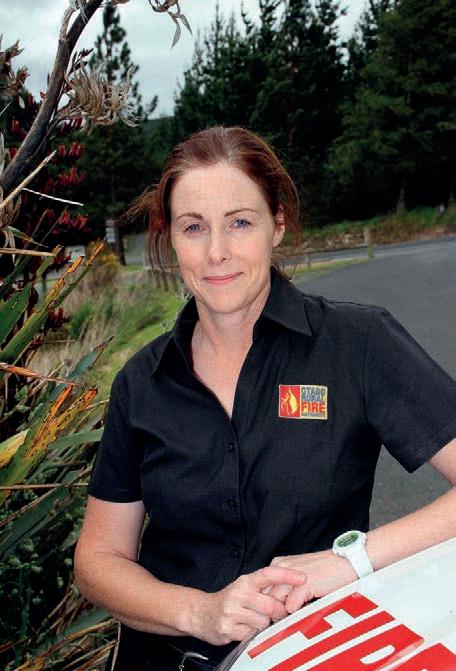
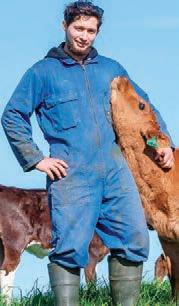
“NZ is unusual in that we have all these primary sector co-ops that are not quite as much a


































































feature in Australia or the US or the UK.

“Farmers are both shareholders and users of those services, so they like to have independent reporting on what those co-ops are doing and how well they are doing it.
“And I think we have a very good track record in the Farmers Weekly of doing just that.” Stringleman has been a contributor to the paper since the beginning, when Dean Williamson and Tony Leggett, co-owners of what was then Country-Wide Publications, launched it in September 2003.


Nigel Stirling was working as a journalist on another publication when he was appointed to lead the editorial team on the new weekly.


“Dean and Tony saw a gap where farmers were getting their news, which in some cases was two weeks old, and when you’re competing with online media you just can’t really sustain that,” Stirling said.
“Then I felt, too, that there was a bit more of a role for a businessfocused paper, and I was quite strong on that. Because when you think about it, agribusinesses – these are some of the biggest businesses in New Zealand.
“And they weren’t perhaps being scrutinised as well as they should have been with a business reporter’s eyes.”





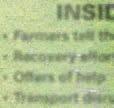
The agribusiness-focused paper took shape immediately when two top-level business reporters, Alan Williams and Andrea Fox, were brought on board alongside
experienced writers such as Hugh Stringleman and Richard Rennie.



“It was just about finding our own niche, and that was our focus early on. Being a weekly paper you’re going to get a lot more scrutiny of the current issues, as you can keep the heat on a bit better than the fortnightlies which were going around at the time,” Stirling said.
“So we all built it together, and it became a very good offering that we had.”
NZX bought Farmers Weekly in 2009, and in 2018 original cofounder Dean Williamson and his wife Cushla bought it back from the stock exchange.

The Williamsons also purchased the AgriHQ market insights business from the stock exchange, and it has become a crucial component of the weekly paper, providing in-depth analysis and key data from its team of analysts and data collectors.




Over the past two decades the paper has grown to become an industry mainstay, but Dean Williamson said it wasn’t smooth sailing in that first year of operations.

“There were many weeks where we lost $15k-$20k in a week over the first few months,” he said. “We borrowed, and borrowed some more, against our farm, and then from my father. However, by “March 2004 it started to turn a profit. The rest is history.”
Williamson said he is proud of

the effort that goes into every edition, and, given the current dissension in the sector, hopes the paper can play a part in connecting the farming community rather than dividing it.
“My hope is that Farmers Weekly can play a big part in creating a framework where our community is connected, informed and engaged in the decisions that matter to their farming businesses,” he said.
“Right now our sector is divided
and sometimes looks and feels dysfunctional. We’re struggling to have the conversations together we need to be having, and our leadership is struggling to futureproof us.
“Every conference I’ve been to for the last 20 years has talked about us needing to collaborate more and tell our story better. Well, we can, but only with good communication.”
MORE: See page 16







FROM the start Farmers Weekly has had an online presence as well, and this year our website, farmersweekly.co.nz, received a perfect credibility score from a top international news rating system.



NewsGuard awards the High Credibility 100% score to sites whose reporting is credible and transparent, based on nine apolitical criteria.



These include “Does not repeatedly publish false content”, “Gathers and presents information responsibly” and “Handles the difference between news and opinion responsibly”.
Farmers Weekly digital editor Carmelita MentorFredericks said that in an age when “it’s getting harder and harder for the public to differentiate between fake news and credible sources, having an








organisation like NewsGuard hold the media accountable provides the public with a tool to separate the wheat from the chaff”.


“Farmers Weekly will always endeavour to uphold these standards,” she said.
















Farmers Weekly managing editor Bryan Gibson said the newspaper’s goal “is to provide farmers with the best information we can, so they can make the best decisions for their businesses. Media is a rough and tumble game sometimes but at Farmers Weekly we focus on the simple things – verifying claims and facts, holding power to account and advocating for our audience.”

– Staff reporter

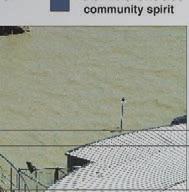










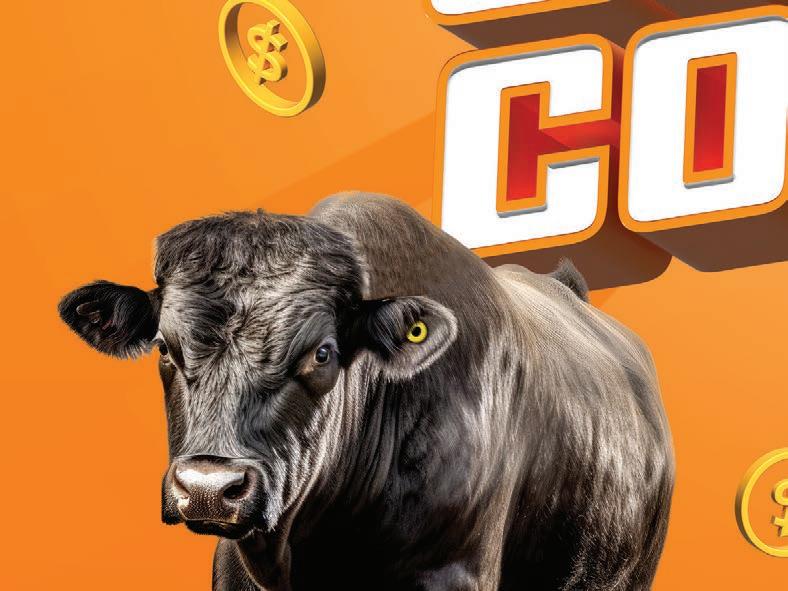


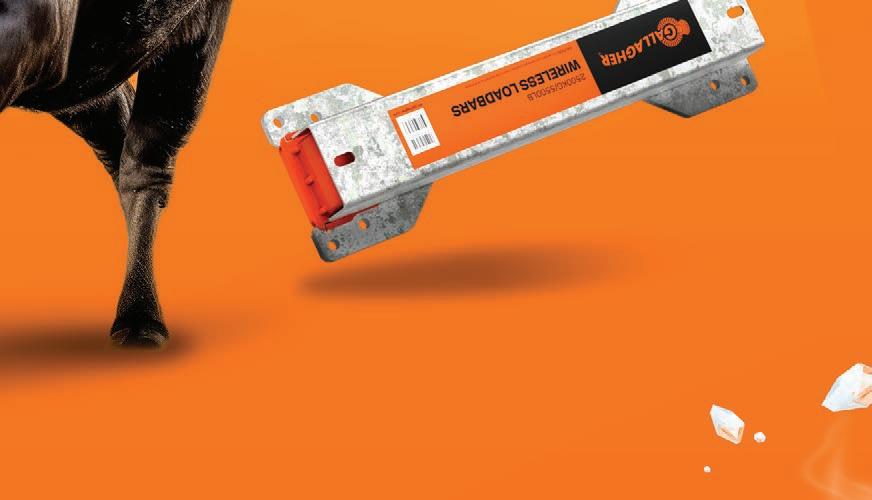
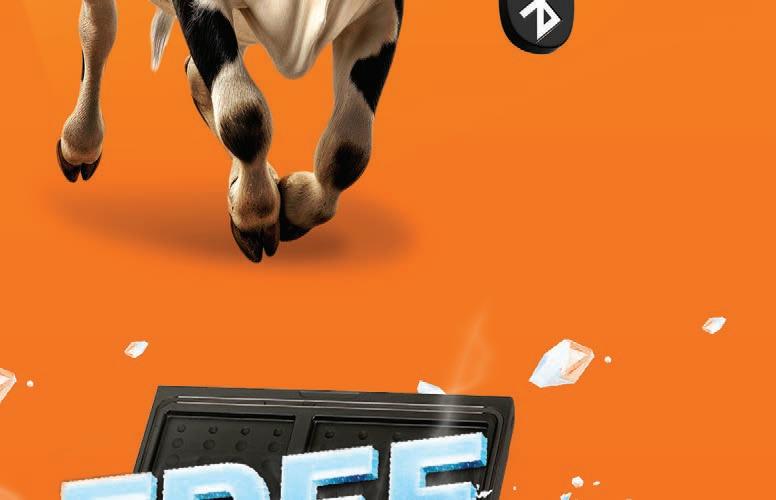






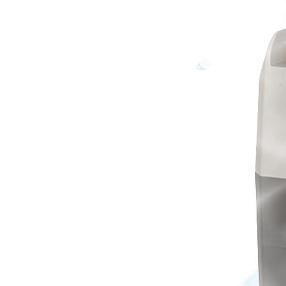
NEW Zealand has acknowledged that it needs a new approach to relations with India, with a long-term relationship built on stronger mutual benefits likely to deliver greater returns than any a quick free trade agreement.
Agriculture and Trade Minister

Damien O’Connor underscored his lessons on NZ-Indian diplomacy on his fourth visit to the subcontinent last week, and provided a four-point plan for a greater co-operation between the two countries.

“If we have learnt anything about the last 10 years, it is that a short-term narrow approach will not work,” he said. The four priority areas he outlined are based heavily on
a recent India-NZ Business Council report that confirmed NZ has significant work to do in its relations with the fast-developing, populous country.
“We can learn from our Aussie mates. Sustained contact between ministers at all levels has been the key,” O’Connor said. Australia this year secured a free trade agreement with India that has 85% of Australian exports there now tariff free.

The first of the four priority areas involves building better relationships through greater diplomatic and business level contact, which could involve an annual NZ-India business summit, similar to the one held with China every year.
“This will galvanise government action and attract senior leaders.”
Better air connections are another high priority area, and O’Connor intended to meet with the CEO of Air India while in New Delhi.
Having a direct link between Auckland and Delhi would put the sub-continent on an equal footing with the rest of NZ’s vital Asian trading partners.
The third priority area is in building capability, and O’Connor said work planned between Zespri and India’s kiwifruit growers may provide a good template for others to follow.

Education and investment by NZ institutions to help India build its own education sector in partnership arrangements are also seen as vital.
Meanwhile, as India ramps up preparations for hosting the G20 summit in September, a free trade deal between it and United Kingdom appears imminent. The timing marks a quick turnaround on a deal that has been in negotiations only since January 2021.
The India-based Economic Times is reporting this week that the 12th round of negotiations between the


two countries is entering its final phase, coinciding with the subcontinent chairing the G20 for the first time.
Trade officials are reported as saying they are “laser focused” on goods, services and investment in the deal.
Estimates are bilateral trade between the two countries was worth about £36 billion (about $77bn) in 2022.
Expectations had been for an FTA between the two countries to be signed last year, but UK political turmoil disrupted plans.


THREE days of negotiations and meetings between New Zealand officials and exporters and their Indian counterparts have delivered some useful building blocks for greater trade between the two countries, trade consultant Stephen Jacobi says. A joint statement issued by Trade and Export Growth Minister Damien O’Connor and his counterpart Shri Piyush Goyal outlines the positive progress made in establishing direct air links between NZ and the subcontinent. It also proposes restating the lucrative log trade to India, and opens the door for horticultural and agricultural collaboration.
“We are at least starting to see
a few building blocks come into place,” Jacobi said.
“However, we would like to see a more comprehensive response on how the government will continue to develop this from here.”
He cautioned that despite the solid business support from the 50-strong delegation, the government is operating under tight fiscal conditions, likely to further stretch already sparse resources across the region.
He pointed out that the Ministry of Foreign Affairs and Trade “has had $35 million cut from its budget, so it is difficult to see how they will achieve all they wish. Money is tight, so what investment will the government be able to make to expand relationships?”
Delegates pointed to Australian investment in its diplomatic presence throughout India, with the states of New South Wales and Queensland having more staff in
India than NZ’s entire diplomatic team across the India-Asia region. The log trade with India, valued at $250m at its peak, collapsed when NZ banned the use of methyl bromide, India’s only approved treatment.
Money is tight, so what investment will the government be able to make to expand relationships?
Stephen Jacobi Trade consultantMinisters have confirmed efforts are afoot to find a feasible alternative to enable trade to resume in this area.
There are plans for horticultural collaboration that could include Zespri working with Indian
kiwifruit growers. A regular CEO forum between business leaders of both countries was also mooted, along with the annual joint trade committee meeting.
“It is a good idea, but they [CEO summits] are not simple, cost a lot, and take time to arrange. I would like to see a truly joined up effort with the government,” Jacobi said.
The reality of a direct air link between Auckland and New Delhi holds strong appeal, with estimates of a 40-50% increase in people travelling between the two countries.
O’Connor was positive about his meeting with Air India’s CEO during the visit. The two signed a memorandum of understanding to liberalise the route.
In June Air India confirmed orders for almost 500 new planes valued at US$70 billion ($117bn). However, NZ delegates were also aware that jet allocation is a
numbers game, and the NZ-India route is tiny against high-volume continental connections.
The delegation has established valuable momentum in the relationship, something Jacobi is confident will be carried over, regardless of who forms a government after the election.
“And it is good to see five business organisations all working together, something that is quite unusual.”

Jacobi also said he was surprised at India’s level of receptiveness to NZ, and particularly welcomed support from Tapan Mazumder, the director-general of foreign trade.
“He has been extremely positive towards us.
“When everything is added up, they do not amount to a comprehensive FTA of course, but they have impact, and give confidence.”


THE first stage of Wool Impact’s environmental impact work is complete and the entity charged with rejuvenating the strong-wool industry is confident it is on track to assure consumers of environmentally friendly practices in the wool industry.
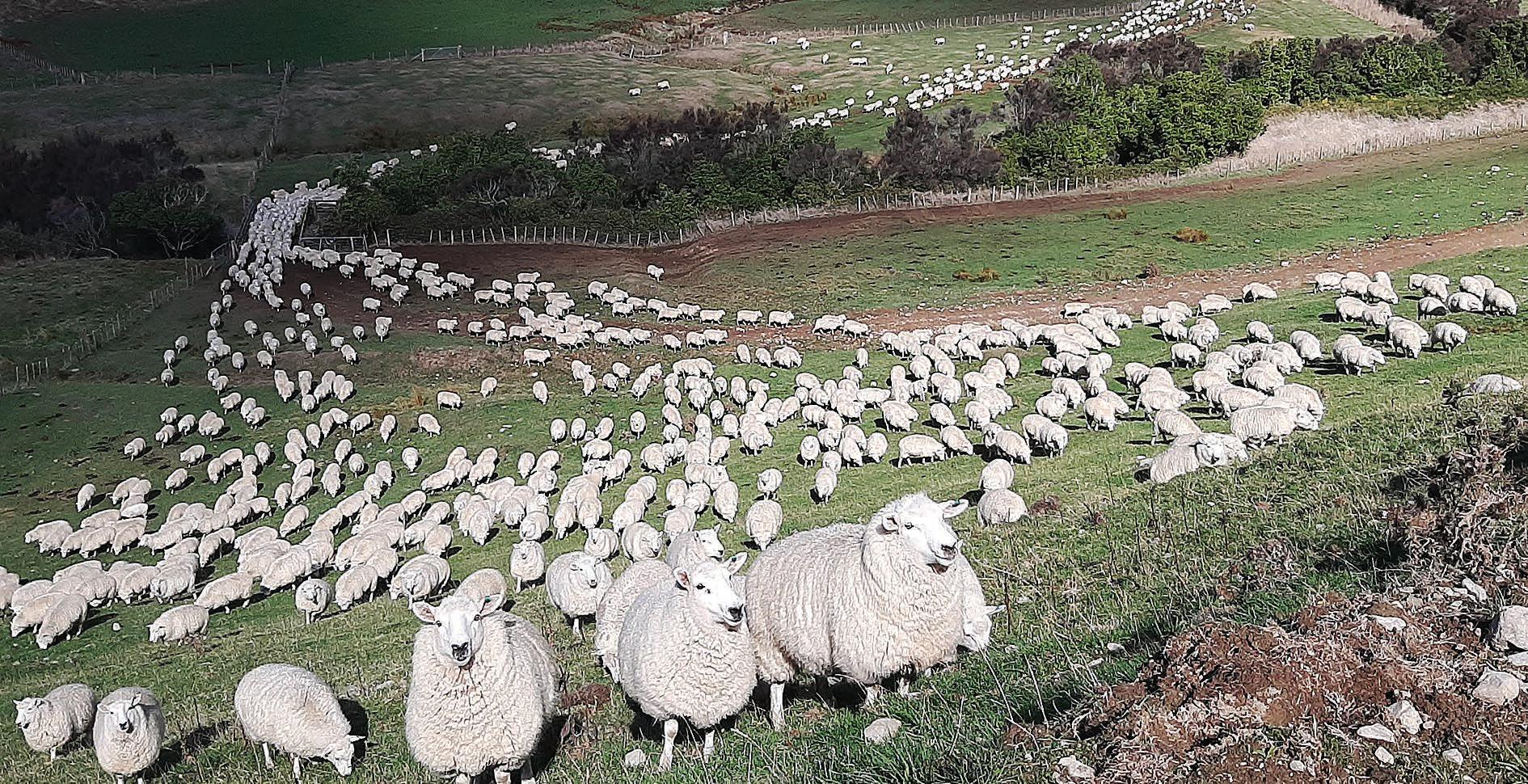
Chief executive Andy Caughey said demand is increasing from global consumers, brands, stakeholders, architects, designers and specifiers seeking transparent information about products and materials to inform their decisions.

“To make it easier for people to say ‘Yes’ to wool products, the many great natural qualities of wool need to be well supported with evidence of wool’s contributions to and impacts on the wellbeing of people and the environment.”
Commercial fit-outs and tenders from the likes of the Ministry of Education increasingly need declarations of a product’s environmental impact.
“We did work with Wools of New Zealand on the [recent conroversial] schools contract but at that stage we weren’t quite there with the required declaration,” he said.
Caughey said Wool Impact is supporting brands by understanding the on-farm environmental footprint of producing NZ strong wool.
Working with AgResearch, Wool Impact has completed the first phase in this area,
measuring the carbon footprint for 1kg of greasy NZ strong wool.
“This was to undertake an initial carbon footprint while carefully considering the different ways of measuring emissions and removals on farm through sequestration and allocation between meat and wool to accurately assess the environmental impact of strong wool.”
The findings contribute to ongoing
discussions regarding carbon footprint methodology and efforts towards environmentally friendly practices in the wool industry.
“The work has given us confidence that to date, LCA [life-cycle assessment] databases have overstated wool’s impact relative to actual data collected from NZ farms.”
One of the key insights from a recent trip to the United States is that specifiers recognise carbon is only one metric and the wellbeing of the climate, land, water, animals and people need to be accounted for.
Future research will further analyse the impact of different methodologies, furnish the carbon work with information on other impacts such as water and take the work through to the wool scour.
Alongside measurement, Wool Impact is building tools to communicate the existing high standards of care evident in growing NZ strong wool.
“We are aware farmers are increasingly being asked to do more.

“We acknowledge farmers are doing good things now but we need to package all that good stuff up to be used effectively in marketing and by the brands.”
Caughey and Wool Impact marketing executive Gretchen Foster recently spent time in the US with a focus on wool’s relevance in global architecture and design.
Wool is not widely recognised for flooring in the US, but Caughey said the visit was met with enthusiasm from potential partners.
Insights shared by brands suggest the building and design industry knows it needs to change and that architects and designers play a critical leadership role in orchestrating this change, designing for both planetary and human health.
“The US manufactures 50% of the world’s carpet and of the total volume only 1% of that carpet is in natural fibre.
“While NZ strong wool is not about the volume, there is great opportunity in the boutique, niche and luxury space, away from the massive volume market, to premium.
“We can romance the story at retail level and capture consumers.”
Wool Impact is building partnerships with global brands of influence that are able to design a well-evidenced wool story into buildings for the future.
“While the greatest call to environmental action remains a reduction in the embodied materials and operational carbon in buildings, one of our key insights was
Andy Caughey Wool Impactthat specifiers recognise carbon is only one metric and there are other factors in environmental and human resilience that need to be considered.
“It makes sense to us, now it’s time for action.
“Wool brands need to understand how decades of research into wool’s performance translates into healthy interiors today, where the gaps of knowledge are and how they can be filled.”
Caughey said it’s been a challenging first 12 months for Wool Impact.
“It’s been foundational but now we have substantial evidence our projects are going to materialise and given time, make a difference.
“We are well aware of the urgency with farmers having no appetite to be mucked around.
“It takes time, projects are coming into operational mode and we are confident now to engage with the grower community,” Caughey said.
make a di erence.
We are well aware of the urgency with farmers having no appetite to be mucked around.UNDERWAY: Wool Impact chief executive Andy Caughey says there’s substantial evidence that projects are going to materialise and given time,
Williams does not necessarily believe a return of the wool levy is the answer, but it could contribute.
CONSOLIDATION is a must if New Zealand’s strong-wool industry is to thrive again, Federated Farmers Meat and Wool chair Toby Williams says.
“What we have got is silos and none are bringing returns to the farmer. We need contracts,” he said.
Contracts could build farmer confidence.

“I’m not saying $10, that’s pie in the sky, but even $4 a kilogram for your wool meeting required specification – growers get a guaranteed price and the buyer and the end user get guaranteed quality of product.



“My biggest concern at the moment is the commercial interests are there but will pay just enough for farmers to keep growing wool, but we need to make money.”
Farmers’ frustration levels are such they are walking away.
“We are losing farmers from the industry and we will lose more. It’s too hard and they can’t be bothered any more, so they walk.”
A decision by farmers in 2004 to rule out the wool levy led to the dissolution of the Wool Board and left the sector without a wellresourced body promoting wool. Without a governing body for almost 20 years, there have been a lot of factions.
“We have Wool Impact but we have not gone anywhere and while a wool levy is not going to make the change needed, it could be one way of funding a new leadership structure and it provides a market budget.”
Williams alluded to a wool levy when he addressed the August meeting of Parliament’s Primary Production Select Committee.
“I did throw it in as maybe deserving debate but we have got to be very careful about this.
“Levies have failed in the past and organisations that rely on them continue to be under threat.

“The people who control the levies, the boards and management around them don’t always listen to what the levypayers want them to do, or fail to deliver.
“Farmers abandoned the Wool Board because they didn’t like the leadership, now we still have the same leadership but under different umbrellas in different silos.

“We need change and we need it urgently. Twelve months is too late.
“We want to be a Zespri, or a Fonterra.


“Nothing has changed in that respect and it won’t until we get a whole new level of new leadership. Just bringing in the same ones over again is taking us nowhere.
“Look at Wools of NZ: we had $9 million invested in funds equity. In the latest report that has turned into $2m; $7m lost less than a year ago.
“They followed the wrong things. We are not going to make


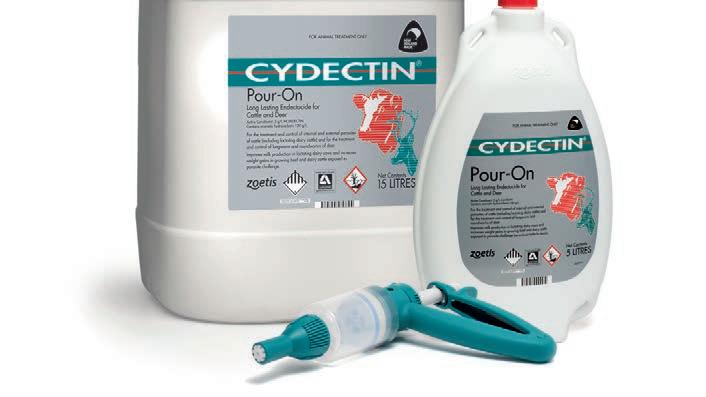
money out of flooring, that’s fairly obvious and they are going to run out of money.
“It’s been too much about each silo protecting its own patch. Well, unfortunately that patch is disappearing.”
Williams said it is 10 years since he last made money off wool.
“It costs me $40,000 to shear my sheep every six months, so that’s $80,000 for 6000 sheep.
“Our return this year on the last
shear was $30,000, a 25% loss.” Williams doesn’t expect the government to rescue the industry.
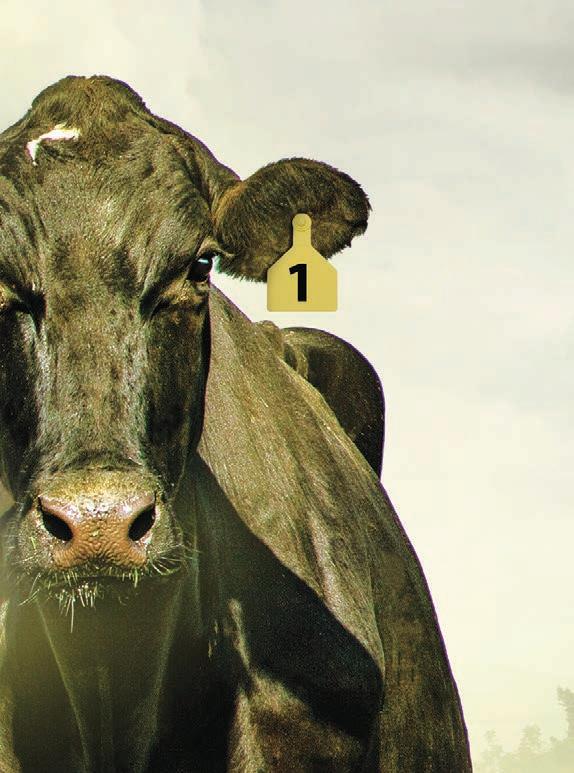
“The sector’s responsibility is to get its own house in order in terms of a workable single body and leadership structure before it looks to government for more investment.
“Federated Farmers, as an organisation batting for growers’ interests, can take a lead bringing people together on that mission.”
While a wool levy is not going to make the change needed it could be one way of funding a new leadership structure.Toby Williams Federated Farmers

FARMING on the edge of New Delhi’s 32 million sprawl of people, Gulab Singh feels at times that he and his fellow farming villagers are under inexorable urban siege.
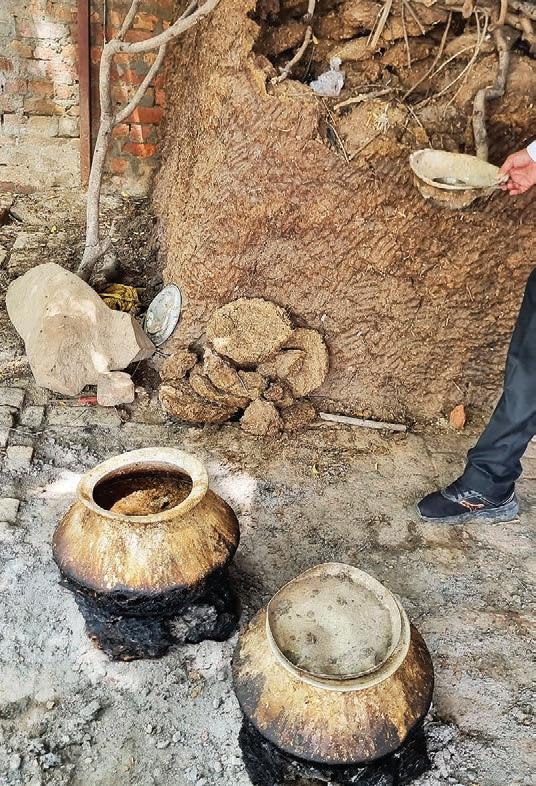
With a surging growth rate of over 2% a year for the past decade, the city is rapidly consuming the countryside it depends upon to feed it as it becomes the planet’s largest urban mass.
It is also rapidly consuming itself within its own boundaries, with Delhi’s forested city area having declined by half to 5800ha in the 20 years to 2018.
Gulab, with wife Shalu and three daughters, Geetila, Charu and Mansi, live in the small village of Bazidpur Saboli only an hour, give or take in the city’s chaotic traffic, from the city centre.
They are typical of India’s smallholding farmers, who combined amount to 85% of the country’s landowners, despite only owning 45% of the farmed land area.
To New Zealand eyes their halfhectare block may seem closer to a smallish lifestyle section than a farm, but for the Singh family and millions like them it’s food on the table and the opportunity to help
the next generation fulfil their aspirations.
“For us, we have had three generations farming here. But I have often been offered quite a lot of money by land buyers to buy the property, and we see this happening more and more,” Gulab said.
He said he has no intention of selling, with the ties that bind him to the land and the village he grew up in proving stronger than the lure of a lump of capital, and family agreement is also required before it could happen.
too have the opportunities for Gulab to build another business. In the past couple of years he started Incredible India by Car, offering guiding services to westerners and compatriots around Delhi and the northern states.
His daughters, all aged in their teens, have mastered the family motor scooter, with the two eldest busy studying in the city, one in public affairs and the other to become a cardiologist.
“To become any larger, that is something I really do not wish to do. With the size of the farm it is, Shalu and I can still run it, and I can also run my other business,” Gulab said.
The Singh property has a spectrum of feed crops growing, some to feed the family’s Sahiwal cow, milking buffalo and two heifers.
The incentive to keep the land in farming is helped somewhat by a tax on land sales that varies, depending upon what it is to be used for when sold, with no tax paid if it remains farmland.
But the proximity to the sprawling city also holds some prospects for farmers like Gulab wanting to hold fast against its creep.
As the city has crept closer, so
Persists graze after graze... after graze... after graze...
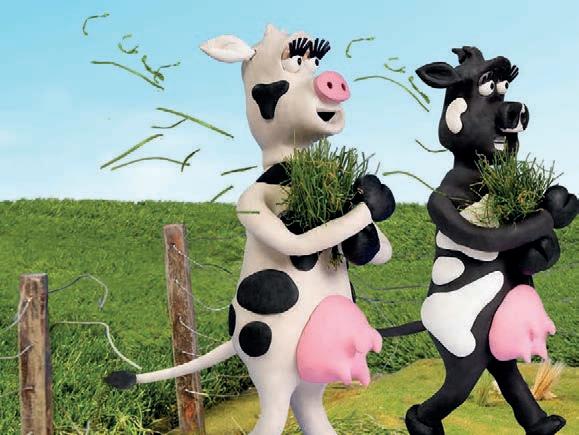
On the boundary a maize type of grass grows high; it is cut daily to be fed to the cattle who also enjoy a high-energy seasonal rye-type grass that springs up over the monsoon season that finishes next month.
Their diet is further supplemented by a stew of lentils and chickpeas Shalu cooks up every day. She has cranky livestock if they miss out on their daily brew.
A small crop of rice is coming along well after the good monsoon rains, growing about 20t and due
for harvest in October. Gulab also looks to turn the remaining land over for wheat in the coming season.
While trying to be as organic as possible, he supplements the dried cattle muck fertiliser they spread with light applications of urea and DAP, both subject to significant government subsidies in India.
“For urea and DAP the prices farmers pay are fixed by the

government. For urea that is 300 rupees [about $6] for a 45kg bag, for DAP it is about 1500 rupees for a 50kg bag.”
It is a rate that would gobsmack most kiwi farmers, equating to about $130/t for urea and $600/t on DAP.
While Gulab’s use is sparing, India’s policy of subsidising urea to the tune of 200% has resulted in excessive consumption, with nitrogen pollution a major problem in his state of Haryana. In the past 50 years it has surged to account for 80% of Indian farmers’ total fertiliser use, up from 10%.
The Singhs’ property is also bedecked with abundant crops of lauki, a type of cucumber used in cooking, and ladyfinger or bindi, similar to okra.
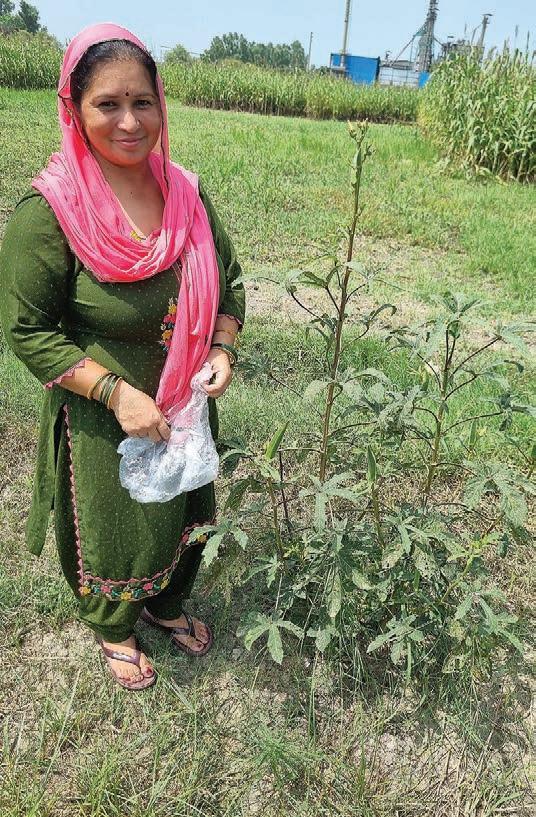
Being Hindu and vegetarian, all their dietary needs are met from their farm, with the cow and buffalo generating abundant milk for lassis, yoghurts, cheeses and cooking.
For Gulab and his family, greater scale is far from the goal; rather it is preservation of the family plot as his key motivation for continuing to farm and live where he does.

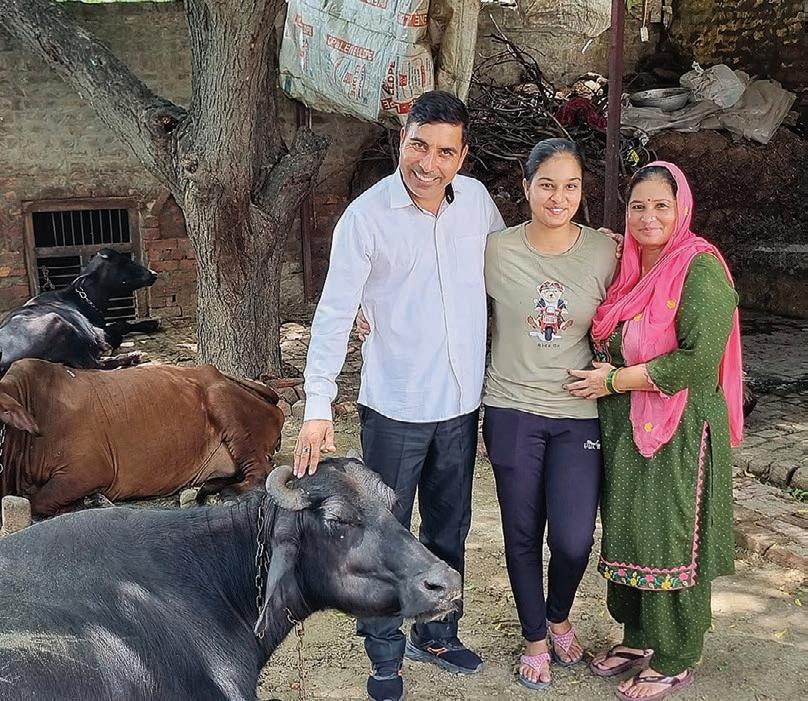
“I have a pretty simple life, I enjoy my family, my friends and my land.”
PERENNIAL RYEGRASS
Hustle is one of New Zealand’s best performing perennial ryegrasses; purpose-bred to deliver high quality feed that persists. ORDER RAGT’S HUSTLE PERENNIAL RYEGRASS


I have often been offered quite a lot of money by land buyers to buy the property, and we see this happening more and more.Gulab Singh Farmer
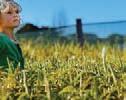

The Nichol family have been farming their land at Clark’s Junction, Otago, since 1871. With a strong connection to the land, Steven and Kellie consider guardianship a priority. Together with farm manager Grant Bezett, this award-winning team has the drive to move their business forward through the highs and lows.

These Future Farming Conversations are proudly brought to you by Ballance Agri-Nutrients through the Farmers Weekly In Focus podcast. Ballance is committed to helping you farm productively and sustainably, with the future in mind.


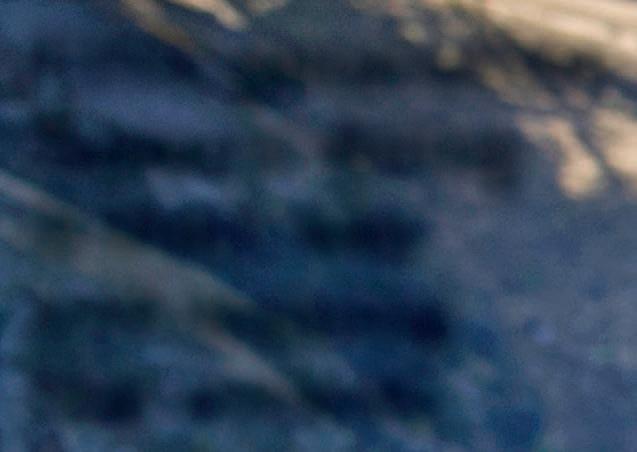

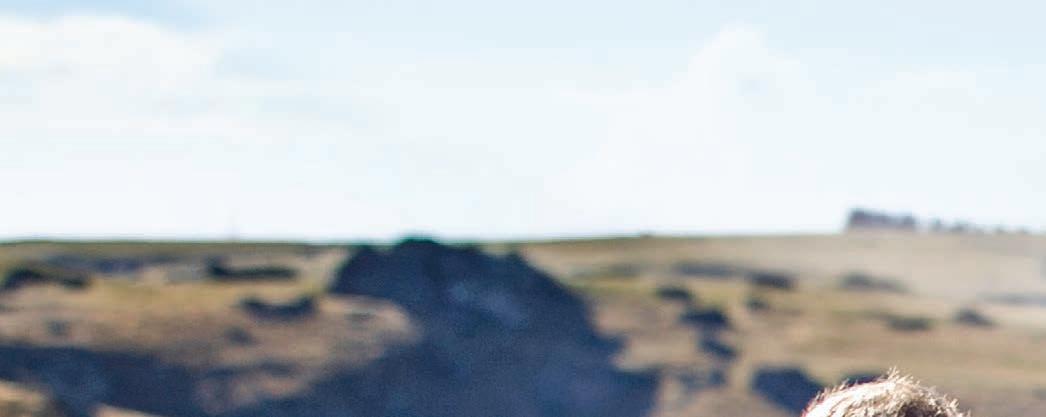
Meet our podcast guests
We’re well positioned in terms of our sustainability story and to capture the market’s expectations to be more proactive in this space. Sheep and beef farms hold a lot of New Zealand’s remaining biodiversity, and farmers are already making a great effort to protect and maintain these areas. In my opinion, our discerning and affluent customers are willing to pay more for this.
| 0800 222 090


One of the key things we want to achieve is to celebrate... taking the time to pause and reflect on your journey and what you’ve achieved over the last few years, or in many cases decades of farming and growing.
 Steven Nichol BFEA 2023 National Ambassador. Sheep & Beef Farmer, Central Otago
Warwick Catto Ballance Science Strategy Manager & BFEA judge
Steven Nichol BFEA 2023 National Ambassador. Sheep & Beef Farmer, Central Otago
Warwick Catto Ballance Science Strategy Manager & BFEA judge
NEW Zealand could be in the international market for millions of tonnes of carbon offset credits to meet its obligations as a signatory to the Paris Agreement on climate change.
That was the sobering message from Nigel Brunel, the head of commodities at Jarden, who told the Carbon Forestry conference last week that NZ is never going to meet the carbon reduction targets committed to at the 2015 Paris conference by relying solely on domestic measures.
On current projections the Treasury estimates NZ needs to buy 99 million metric tonnes of carbon units at a current cost estimated by Brunel at about $8 billion over about eight years.
He estimated that equated to 1% of government spending over that period.
Ignoring the agreement is not an option, as to do so would run the risk of violating newly signed free trade agreements and exposing NZ’s exporters to tariff-type taxes.
Brunel said NZ should use its expertise to help developing countries decarbonise – initiatives that can be used to offset our own emissions, and are allowed under
the Paris agreement.
He told the conference he cannot find what – if any – such projects NZ is currently involved in.
Free trade agreements such as that recently signed with Europe include a requirement to adopt acceptable climate change reduction measures, and Carbon Border Adjustment Mechanisms (CBAMs), effectively a tariff on imports, can also be imposed.
“If you don’t have decent carbon policy, you are likely to be hit by
CARBON




CASH: Jarden commodities head Nigel Brunel says that on current projections NZ will have to spend $1 billion a year for the next eight years buying carbon units.



CBAMs if you want to have free trade policies,” Brunel said.
He suspects this is a reason Australia has in three years shifted from being a country that wasn’t doing much internationally to a country that is doing more than NZ.
Brunel said in seven weeks the price of NZ Units traded on the Emissions Trading Scheme (ETS) fell from $88/tonne before collapsing to $34/t, but in recent weeks it has recovered to $68/t.
CARBON foresters have called for a moratorium on consultation and government policy reviews related to the sector.
Andrew Cushen, the chief executive of the Climate Forestry Association, told the Carbon Forestry conference that in the past year the sector has had to make multiple submissions on proposed changes to legislation.

The list included the introduction of fees for the Emissions Trading Scheme and a review of that scheme, changes to the Resource Management Act and a review on the status of
permanent forestry category.
“Over the last six to 12 months we have not been having a policy conversation, but we have seen an ideological crusade about something that offers a perfect climate outcome,” he said.
“You may have gathered I am a bit angry about that.”
Cushen told the conference that this constant policy tinkering runs counter to the benefits carbon forestry provides.
These, he said, include financial returns for some classes of land and a greater number of jobs than agriculture provides, giving Māori landowners a return on their land, a pathway to re-establishing permanent native forestry at no cost to taxpayers and carbon sequestration at pace and scale.
“They are outcomes for which I think we should all pat ourselves on the back.”
But instead, he said, members are constantly under the scrutiny of policymakers.
In addition to a policy moratorium, Cushen called for an

He said NZ will not decarbonise at $68/t and international studies estimate real change will happen at about $175/t.
The government is establishing what he called guardrails for the ETS to ease such fluctuations.
Brunel said from next year the government will not sell units when the price hits $64/t, and at $180/t it will release more units onto the market to ease pricing pressure.
NZ’s largest carbon farmer told the conference the country does not have an oversupply of carbon credits as has been claimed by government officials.
NZ Carbon Farming business manager Scott Pollard told the conference that too few trees have been planted to offset our emissions, meaning the taxpayer will need to buy international credits.
He put some of the blame on nimbyism (not in my backyard) when it comes to forestry, when in reality productive farmland can be balanced with areas of commercial or permanent forestry, helping landowners economically and with their lifestyle and land use.
The company’s manager, Peter Casey, said it has 67,000ha of commercial and permanent forestry, mostly in the North Island.
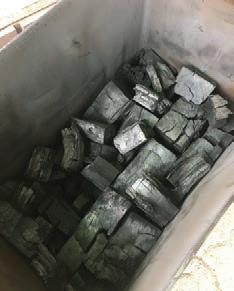
Land in permanent forestry is in
the process of regenerating from exotic to native forestry, a process that can take 75 years.
At age 30, exotic species sequester carbon at five to 10 times the rate of natives, which provides annual income to fund further projects and the regenerative process, which he said is expensive.
If you don’t have a decent carbon policy, you are likely to be hit by a Carbon Border Adjustment Mechanism if you want to have free trade policies.
Nigel Brunel JardenCasey said the regenerative process followed depends on the climate, topography, altitude and soil of each forest.
It requires thinning of exotic trees to improve sunlight, nurturing the native under-storey regrowth through weed, pest and fire control, and helping regrowth by introducing native plants, an annual cost of about $200/ha.

Casey said NZ Carbon Farming plants 120,000 native trees a year to effectively push the regeneration process.
OUTCOMES: Andrew Cushen, chief executive of the Climate Forestry Association, says there are carbon forestry outcomes ‘we should all pat ourselves on the back’ for.
end to the ETS review, which he said could be damaging, does not make sense and could make the scheme unaffordable.
He called on the sector to collectively stand up and promote about what the industry does and what it has achieved.
We have not been having a policy conversation, but we have seen an ideological crusade about something that offers a perfect climate outcome.
Andrew Cushen Climate Forestry Association
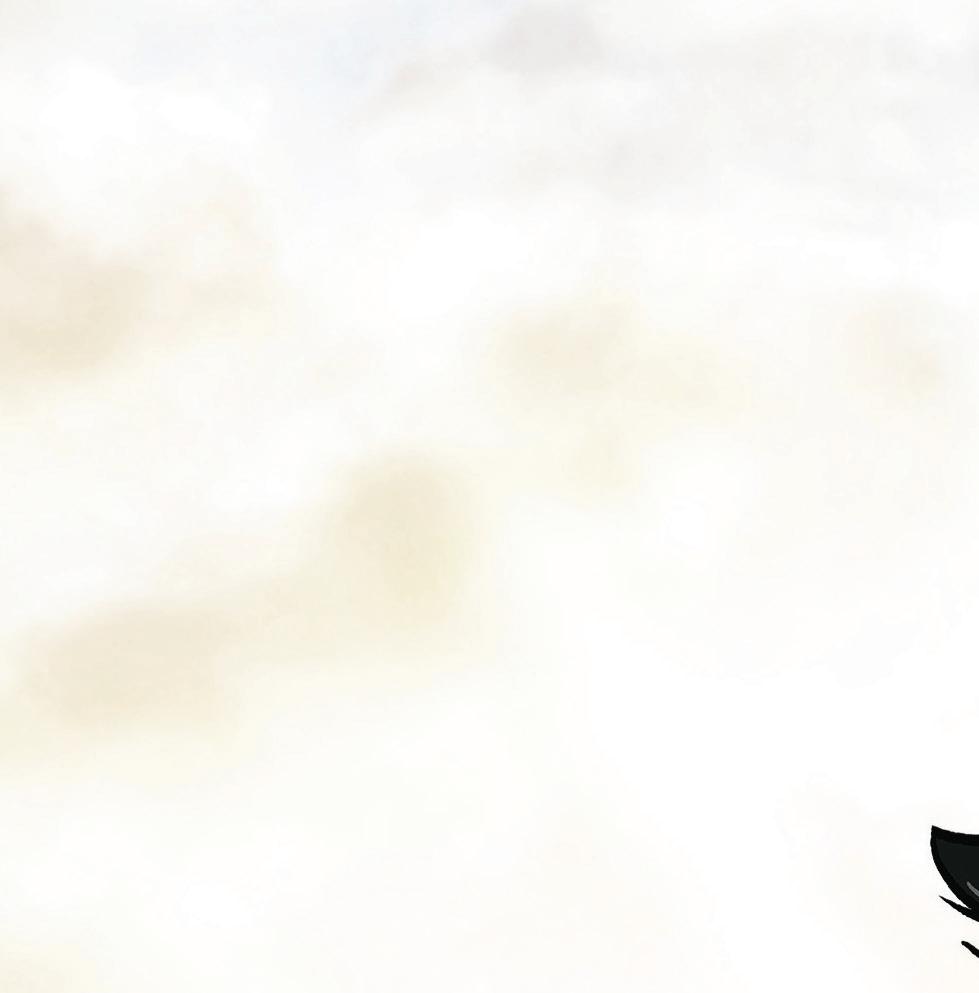


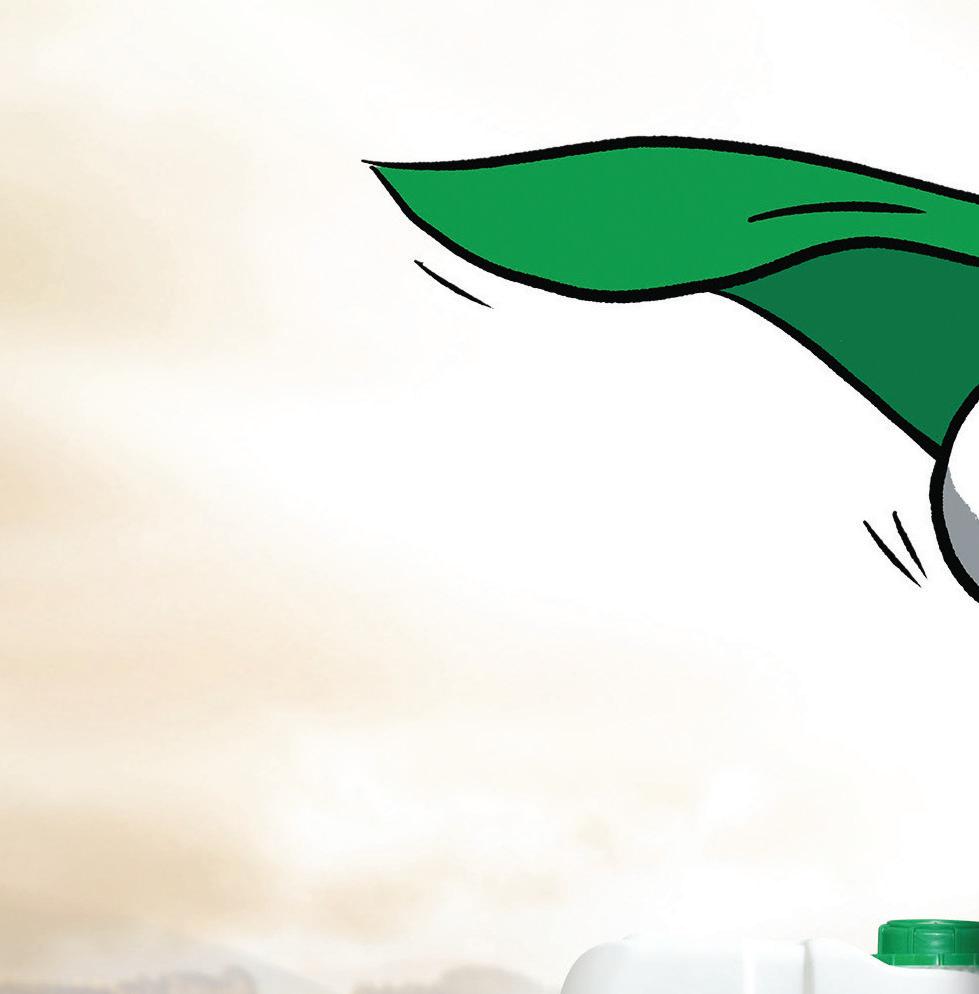
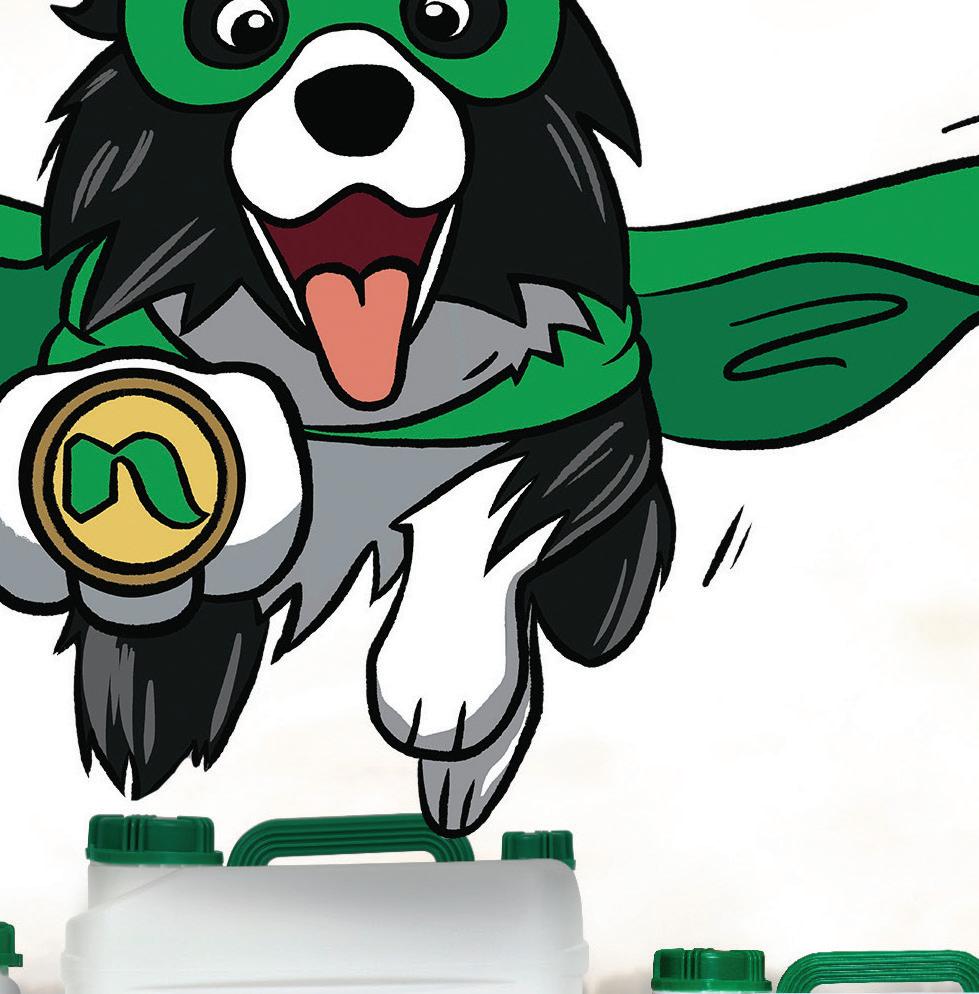




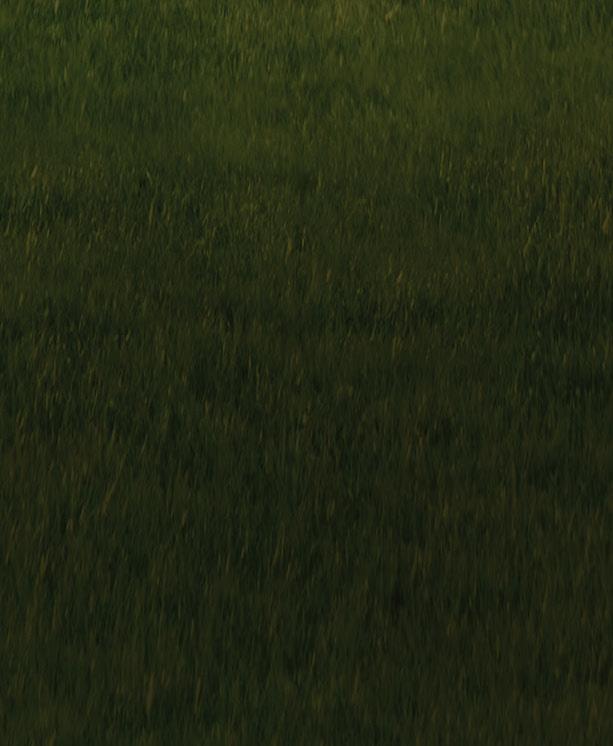



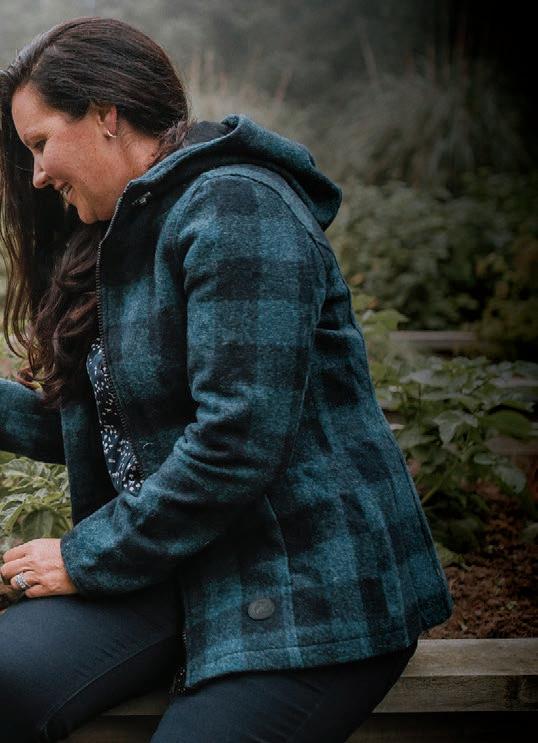






















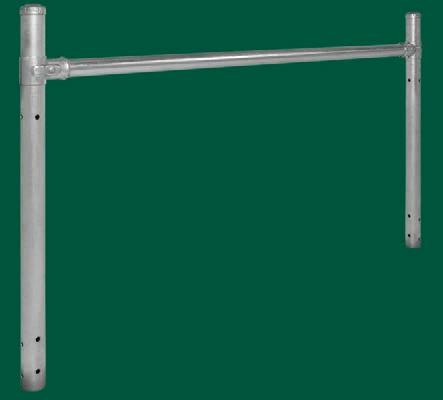


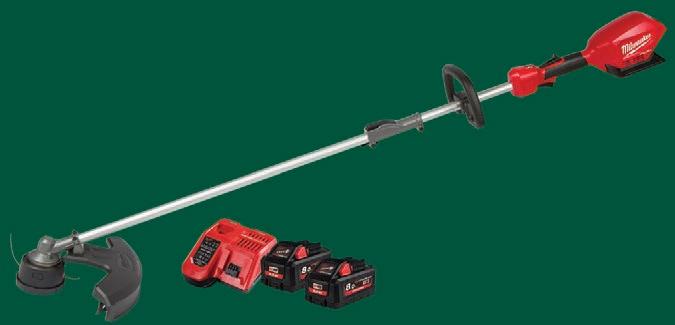







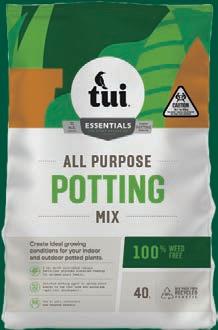
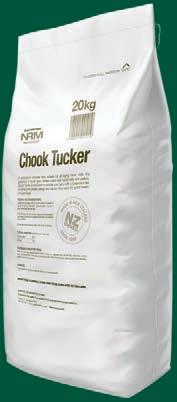
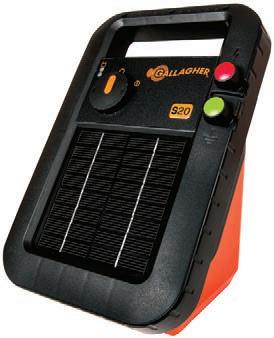






A2 MILK increased its net profit by 26% to $144.8 million in the 2023 financial year – as the Chinese infant formula market declined because of fewer babies and lower product prices.
China accounts for 70% of a2 Milk’s sales and revenue, which was up 10% to $1.592 billion.
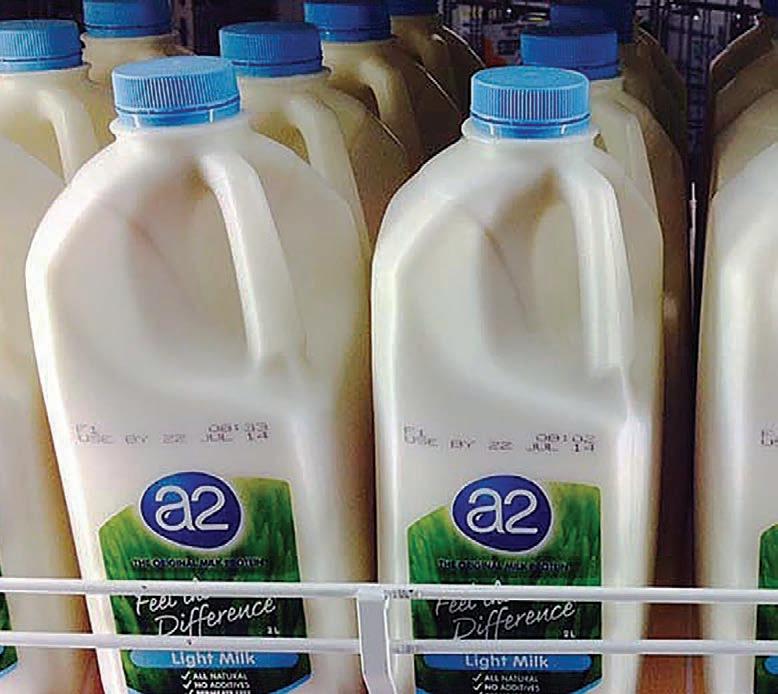
The outlook for FY2024 is a double-digit decline in the China
infant formula (IMF) market but a2 Milk expects to deliver a low singledigit revenue growth and a gross margin similar to last year.
The alternative dairy company is still recovering from the covid lockdowns between 2021 and 2023 when IMF sales slumped and the parcel-post “daigou” sales channel from Australia and New Zealand to China collapsed.
Managing director and chief executive David Bortolussi said he is proud of the team effort behind 10% sales growth when the core market, IMF in China, declined by 14%.
China-label sales exceeded English-label sales for the first time and total IMF sales were $1.1bn.
The daigou sales of English-label IMF fell by 40% and a2 Milk has turned to channels over which it has more control.
as a result of lower birth rates and increased competitive intensity.
“Notwithstanding, we are well positioned to continue to invest and grow share in FY24 to emerge in a stronger position when the market recovers.”
The Mataura Valley Milk processing subsidiary made a larger earnings loss of $26.5m, compared with $18.8m in FY22, with revenue of $114m.
The a2 share price dropped nearly 50c after the results were published, now down in the range $4.80 to $4.90, the lowest level since early 2022, when the full covid impacts first became apparent.
In recent times the price peak has been around $7.40, so clearly the share market is not yet convinced that the a2 pathway to profitability is sustainable.
David Bortolussi A2 Milk“The China IMF market has become increasingly challenging
Pre-covid a2 Milk had peak revenue of $1.7bn and peak profit of $386m.
MĀNUKA honey company
Comvita has reported record revenue of $234 million in the financial year ended June 30, including more than $100m from China for the first time.
Sales income rose by 12% and net profit after tax was up 2.8% to $13.1m.
Comvita will pay a fully imputed final dividend of 3c a share, in addition to 2.5c interim earlier in the year.
Sales through ecommerce accounted for 42% of the total, up 19% on the previous year.
Comvita chair Brett Hewlett said the record revenue performance was achieved despite material disruption including covid reopening delays in China
Comvita will pay a fully imputed final dividend of 3c a share, in addition to 2.5c interim earlier in the year.
and terrible weather during summer for the apiary division. The apiary division broke even despite the major loss of honey extraction along the east coast from Cyclone Gabrielle.
The listed company’s share price is currently $3.30, steady on its position 12 months ago, and there was no change following the results release.
Equities analyst Christian Bell, of Jarden, said the results were confirmation of the company’s path of transformation and he nominated a target price of $4.65 with a buy recommendation.
LISTED leading wine company Delegat Group sold 9% more cases in the 2023 financial year to reach record sales of 3,676,000 cases, of which 97% were exported.
Operating net profit after tax (Npat) was $59.3 million, up 2% on the year before.
Reported NPAT was $64.8m, up 3%, and revenue was up 15% to $376m.
The company will pay a fully imputed dividend of 20c a share on September 13. It did not pay an interim dividend back in February.
Chief executive Steve Carden said Delegat Group is aiming to increase case sales by 4% in the current financial year and increase operating profit to between $62m and $67m.
The biggest market is the United States and Canada, where 1.747 million cases were sold, followed by the United Kingdom, Ireland and Europe with 1.237 million cases.
In the premium US market the company’s No 1 brand, Oyster Bay, outperformed industry growth with four varietals: sauvignon blanc (up 16%), chardonnay (up
EARNINGS and profits for two large listed horticultural companies, Scales and Seeka, were cut in half by adverse weather –and the ongoing rebuilding efforts and costs are significant, too.
Interim financial results for the first half of FY2023 for both companies disclosed impacts on numbers ranging from 20% to 60% below the previous corresponding period.
For Scales it was the diversified worldwide Global Proteins division, making petfood ingredients, that rescued its financial performance. It contributed 75% of the $41.5 million earnings before interest, tax, amortisation and depreciation (EBITDA), while the horticultural division struggled to contribute $11.4m.
Scales said the Mr Apple crop was down to 2.9 million tray carton equivalents (TCEs) compared with 3.3 million in 2022. Only 26% of the crop has been sold so far.
As most revenue is gained in the first half, full-year net profit before tax is forecast by Seeka to show a loss between $20m and $25m. Scales is forecasting a small profit within the range of $14m to $19m.
Neither company will pay interim dividends.
The Seeka share price is steady on $2.60, down from $4 at this time last year.
The Scales share price is $3.26, down 25% over the past 12 months.
Growers and fruit handlers across all sectors are contending with a large drop in yields, which is impacting revenues and profitability.
Michael Franks Seeka14%), pinot noir (up 8%) and pinot grigio (up 26%).
Adding in two other varietals, merlot and rosé, Oyster Bay is ranked No 1 NZ premium wine in 16 out of 28 categories – four or six wines in five export markets.

It is ranked No 2 or 3 in a further 11 categories.
Pinot grigio and rosé are not ranked in Ireland.
Chair Graeme Lord said the results are strong in an international market showing flat wine sales, global inflationary pressures and severe weather events in New Zealand.
“We are well positioned for
The company will pay a fully imputed dividend of 20c a share on September 13. It did not pay an interim dividend back in February.
substantial future sales growth and are confident our continued investment programme will create additional value for shareholders.”
The share price is around $8.36, having fallen 30% over the past year. Two years ago the share price was up at $14.
During Cyclone Gabrielle, three orchards in Hawke’s Bay were extensively damaged, and one moderately so, and 165ha had to be cleared of silt and debris before replanting.
Produce packer Seeka suffered 14% drop in revenue that led to a 55% reduction in first-half net profit, to $13.6 million.
“The warm winter of 2022, followed by a wet summer, cyclones Hale and Gabrielle and autumn hail, all had a major impact on the horticultural industry,” Seeka chief executive Michael Franks said.
“Growers and fruit handlers across all sectors are contending with a large drop in yields, which is impacting revenues and profitability.”
SETBACKS: Seeka chief executive Michael Franks says a wet summer, cyclones Hale and Gabrielle and autumn hail, all had a major impact on the horticultural industry.
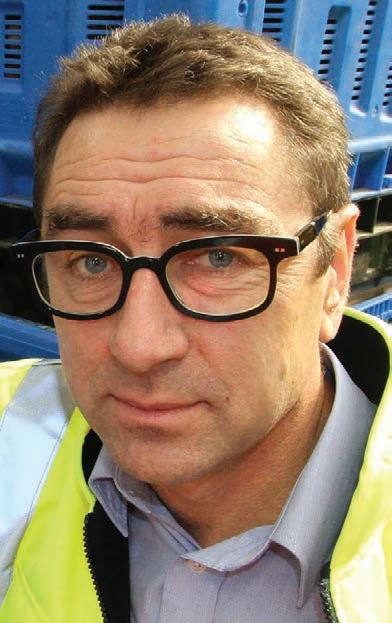
We are well positioned to emerge in a stronger position when the market recovers.TOP-UP: The group is aiming to increase case sales by 4% in the current nancial year.
MY WIFE and I have been farmer shareholders of Fonterra Co-operative since the start, so have ridden a few highs and lots of lows.
This issue of Fonterra dropping the payout by $1.25 in two weeks has surprised me. What is going on at board and senior management level?
I was aware in February of the problems starting to unfold in China as one of its largest property development companies defaulted on a bond option.
I took it upon myself to investigate what was happening to one of our largest trading partners.
First was a shrinking population in China by 80-100 million people, projected to keep falling.
I found 22% youth unemployment in China and now this has grown, though not confirmed, to 40%.
During and after covid-19, major manufacturing companies shifted back to their home countries from China.
The raw milk market within China has grown and it is believed to be self-sufficient from all our exported heifers and some of the farms Fonterra set up.
TWENTY years ago I was at journalism school, a wide-eyed apprentice despite being one of the older students at 29.
The Rugby World Cup was being held in Australia and I had a week’s placement in the sports department at what was then the Dominion Post.
Jim Kayes was at the Cup so I sat at his desk, being schooled in the craft by Peter Bidwell, Toby Robson and Jonathan Millmow.
It was a great learning experience and over the past two decades so much has changed for me.
While Australia was breaking Kiwi hearts at the RWC, something else was happening.
Farmers Weekly was launched as a rural publication in September of 2003 by Dean Williamson and Tony Leggett.
Looking back on the launch, it seems that while some things change, others remain the same.
The Farmers Weekly ethos was to provide farmers with clear, balanced news about the agribusiness world so that they might have the information needed to make sound business decisions.
That’s still the mantra will live by today.
I’ve been lucky enough to lead the Farmers Weekly editorial team for almost half of its life.
I was fortunate to inherit an experienced team that helped me learn the ropes and grow as a person and a journalist.
There have been many changes along the way, of mastheads, ownership, content delivery channels – but one thing has never changed.

We will always hold power to account, seek out the stories that matter to readers and advocate for them.
Sometimes that work can be a challenging read, because we always look at a specific issue with a wide-angle lens. We don’t just ask what something means to our rural communities but also what it might mean for the rest of New Zealand and the global markets we depend upon.
What never wavers is our commitment to tackling issues with curiosity and without anger or preconceived ideas.
Farmers Weekly is what it is because of the people.
Dean and Cushla Williamson’s circleback to the company after leaving it for a time seems like something from a story, but in some ways they never left because the spirit of what they started never left. Since 2018, thankfully, they’ve been back to inspire us to do even better work.
The news team that includes Hugh Stringleman, Richard Rennie, Gerald Piddock, Neal Wallace, Annette Scott and Craig Page is the most experienced and respected in our industry.

The wider team that makes the Farmers Weekly engine run each day is inspiring in its dedication.
Looking back over some old editions recently it was interesting to see that, while farming has changed a lot in the past 20 years, many things are just the same.
There’s another Rugby World Cup to enjoy soon, this time in France.
New Zealand has won two more titles since that 2003 edition of the contest.
But while the All Blacks have a proud tradition and ethos to drive them, they know success is about turning up to do the work every day.
It’s the same here at Farmers Weekly. Each week we say goodbye to one edition and turn our attention to the next.
To our readers, advertisers, contributors and supporters – thank you for taking an interest in what we do.
Because at the end of the day, we do it for you, the farmers of New Zealand.
The property market now has crashed and the Chinese hold a lot of their wealth in property.
The housing debt in China is US$5 trillion. Compare that with the United States, which has $800 billion – to put it into perspective, it looks like a major Ponzi scheme.
Fonterra has offices in Shanghai, Beijing and Chengdu with senior managers on salaries that as farm owners we only dream about.
The point is, if Fonterra didn’t know all these issues and there was surplus of product not sold and demand had fallen off, somebody needs to put their hand up to take responsibility for setting the forecast payout for 2023-24 and getting it so wrong.
Responsibility needs to be taken for such poor decision-making and lack of understanding of this business and the drivers that impact the bottom dollar.
Farmers are suffering now from increased costs, and contracted feed for the whole season

Send your letter to the Editor at Farmers Weekly P.0. Box 529, Feilding or email us at farmers.weekly@agrihq.co.nz
Continued next page farmersweekly.co.nz
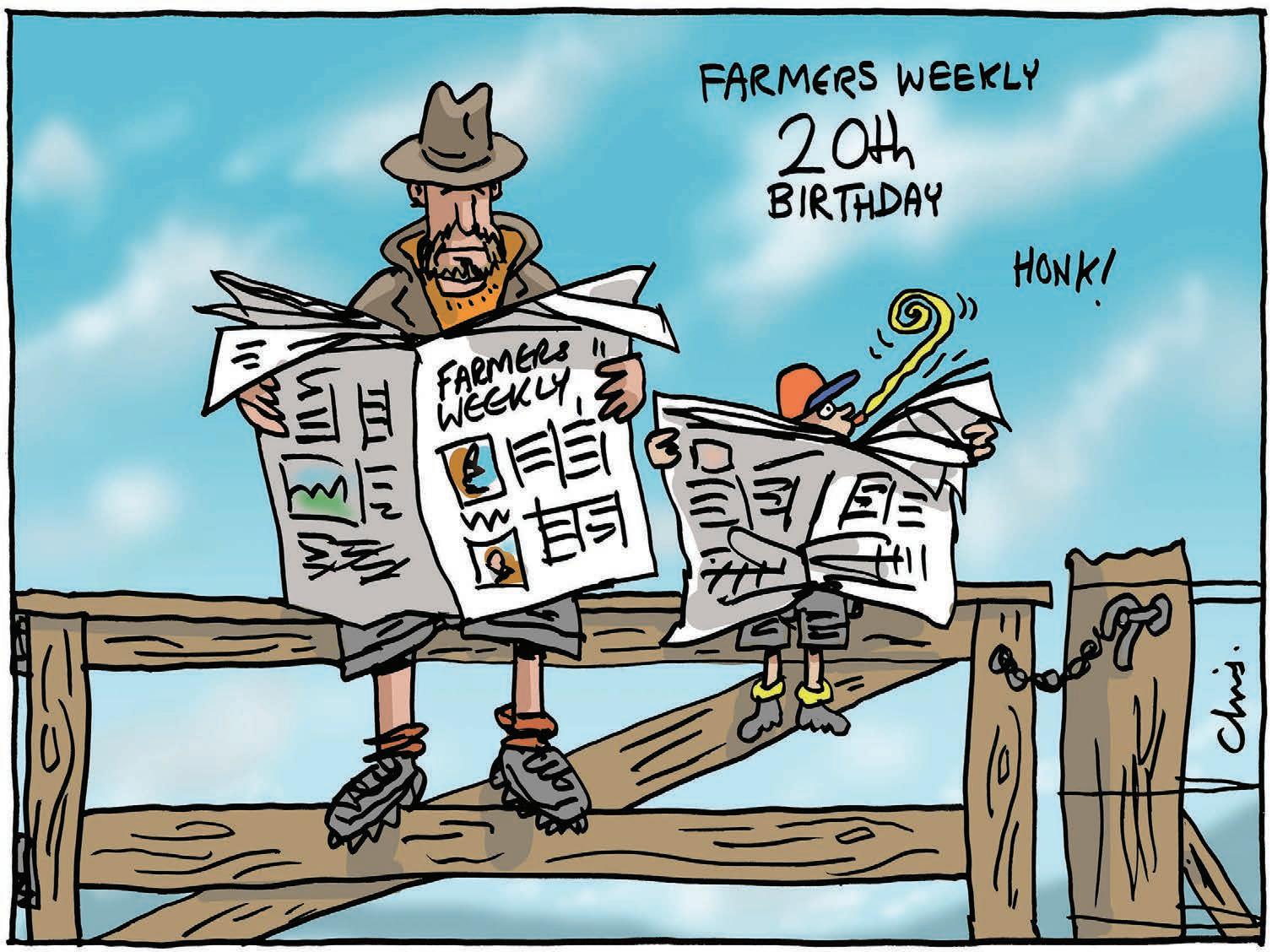
Forbes Elworthy
Elworthy is co-founder of agricultural investment company Craigmore Sustainables, and founder and chair of global agricultural data platform Map of Ag
SUSTAINABILITY and ethical investing trends are throwing up a number of opportunities for farmers.
Around 20 years ago, private sector-sponsored farm sustainability programmes began to emerge in many food markets. Companies like Whole Foods sprang up in the United States. Customer demand pushed food producers to introduce organic, gluten-free and other health foods or sustainably grown products.
Food brands marketed by BirdsEye, General Foods, Unilever, Nestlé, along with food retailers and distributors, began to enhance their offering with food marketed as more responsibly or sustainably grown.
More recently the intensity of farm GHG emissions has become a focus of agri-food firms. In 2021, Craigmore committed to developing a net-zero dairy farm by 2035. Fonterra and Nestlé announced they will develop a
Continued from previous page
has been locked in based on the first payout advice from Fonterra.
I knew the problems in China, so I assumed Fonterra had this covered with our Co-operative Difference long-term contracts and therefore had diverted to new markets.
How can these factors not have been understood by the senior management?
These poor decisions seem to be continually occurring and in such a large business that is, frankly, unacceptable.
We cannot keep surviving with poor decision-making within Fonterra and the lack of awareness of international affairs impacting our business.
The CEO and board work for us, the co-op owners, and with poor leadership and inadequate foresight they are driving people out of the industry.
A well run co-operative adds wealth and prosperity to all shareholders.
Is a change of guard required?
There is a huge lack of confidence going forward in our industry and we require strong, well-informed leaders to take us forward.
It all starts at the top.
commercially viable net-zero carbon emissions dairy farm by 2032.
We expect that biodiversity will be the next major theme alongside carbon. This is emerging already in the financial markets with the launch of the Taskforce on Nature-related Financial Disclosures this year.
It is not easy farming in the face of these waves of supply chain requirements partly because, when adding a new focus area, food brands do not allow growers to give up earlier gains. As soon as water and carbon outcomes improve, a new wave of requirements, like biodiversity, emerge. Operators like Craigmore cannot rest on our laurels.
The United Kingdom’s sustainable food journey began 30 years ago when boutique high-end grocers Waitrose and M&S incorporated human and environmental health values into their brands. The larger UK grocers began losing market share to these disruptors and had to adopt their own sustainability strategies.
Other countries with food markets shaped by the tastes of middle-class households are following the same path. Leading grocers and food brands
POSITIVE GROWTH: Society is increasingly demanding new and positive services from a finite amount of land, Craigmore cofounder Forbes Elworthy says.

in Western Europe, North America and Australasia began to incorporate claims around welfare, human health, environmental health and emissions into their brands.
A list of net-zero commitments by leading agri-foods illustrates how widespread this has become.
The investment industry came later to the same trends.
Ethical investing takes a number of forms, the most widespread being scoring the environmental, social and governance (ESG) merits of investments – often by external agencies. Closely related are responsible investment policies, which prohibit investors from providing capital to sensitive sectors such as tobacco companies or coal miners.
Impact investment strategies, which seek to make a positive
difference, are rarer. Impact strategies such as those undertaken by Craigmore involve planting trees and protecting biodiversity as core aspects of the investment thesis.
Other such ventures build social infrastructure such as social housing or schools, or invest in renewable technologies, green steel and other low carbon/ climate-positive products.
Despite starting late, ethical investing has come a long way. These days 30% of European savers have selected savings products with ESG criteria.
Farmers in western countries experiencing these trends have been challenged and, in some cases, bruised. Farmers rightly see themselves as hard-working guardians of nature and of the nutrition of society. They are suspicious of changes that they often see as having been unfairly imposed on them, while the rest of society continues to enjoy the benefits – for example widespread fossil fuel usage.
Farmers’ fears are understandable. As an active farmer and landowner myself, however, I’m confident that the greening of agriculture will be of net benefit to the farming community. Society is increasingly demanding new and positive services from a finite amount of land. New industries are springing up, such as planting trees on former marginal grazing land. In the hills of the North Island and in Scotland this has already doubled the price of the least productive farmland.
One positive result is that environmental demands for land use change may help us farmers rein in our habit of industry over-production.
The best land will continue to be used to produce food. On this
farmland, regenerative techniques are now steadily expanding. These use lower synthetic nitrogen, cover and multi-species crops, zero-till and precision machinery to enable less environmental damage per unit of farm output.
In particular, technologies that reduce methane and nitrous oxide emissions per kilogram of produce are beginning to make progress. For example, Craigmore has invested in a tool under development by Ruminant Biotech that will significantly reduce emissions of biogenic methane from livestock.
In arable farming, regenerative tools and techniques are being used to reverse a century of carbon depletion and to capture carbon back to the soil. Some growers are seeking to sell these gains as offsets – or to inset other on-farm emissions.
Service businesses are springing up to drive these agendas and to help farmers. At Map of Ag, a sister business to Craigmore, data integration helps farms measure and improve animal welfare, to reduce on-farm chemical usage, and to help deliver on retailer netzero commitments.
One of our animal welfare programmes has helped Sainsbury’s reduce the incidence of mastitis in its dairy supply herd by 50% over 10 years. We also help national livestock industries to measure and reduce the use of antibiotics and other antimicrobials in farm animals. These changes will not occur overnight – farming is a large super-tanker to turn around. However, this sustainability journey is now well underway. Farmers who can adjust their farming systems may, in many cases, reap financial rewards as well as enhancing the land in our care.
THE genetically modified ryegrass project is a costly miscalculation and has not improved the quality and resilience of the agricultural system for farmers. After 17 years of promises, the benefits remain to be seen.
In “Genetically modified ryegrass research ‘promising’” (July 17) and other articles, AgResearch science team leader Dr Richard Scott says that HME ryegrass looks highly promising compared to other forages.
Please can he be more specific about what forages he is comparing HME ryegrass to?
Please can he provide a link to the studies on increased animal nutrition and methane reduction – or is the “highly promising” only hopeful possibilities?
He says possible nitrogen reduction in nitrous oxide comes from improving animal nutrition –but this will only be known when we do animal feeding trials. This statement is not scientifically confirmed. The reduction is only potential.
Scott says the five years of trials
were intended only to assess the shift of traits from containment to field. This is in direct contradiction to a statement made to DairyNZ, which gave funds to support a trial that is costing $25 million of farmers’ money. In 2018 we were led to understand by Dr Greg Bryan, speaking to journalists covering the AgResearch trial in the United States, that it was to look at growing enough fodder to conduct “realistic rather than simulated animal nutrition studies”.
The trial was also to evaluate the possible potential environmental benefits, such as reduced methane emissions and nitrogen excretion. This would be conducted on 26 cows.
The grass did not perform to the expectation and so the animal feeding trials were not conducted.
It was hoped that the Australian application would go ahead. However, the application was withdrawn due to insufficient data on allergies from the sesame gene.
The greenhouse in Palmerston North will hopefully grow enough grass to feed to small ruminants.
In other words, to say that GE ryegrass will reduce greenhouse
gases when fed to cows has no scientific basis.
It was claimed that HME ryegrass will influence the composition of soil microbes to benefit the nitrogen cycle. As studies were not conducted, there is no science to support the claim.
Scott rejected GE Free New Zealand’s comment that GE ryegrass changes the composition of milk. Yet he goes on to say it might have an influence on fat composition and that lactating cows are influenced by seasonal changes in forage. This supports GE Free NZ’s statement that milk composition is altered.
“HME ryegrass did struggle in extreme hot, dry summer conditions,” the article reads. This contradicts reports that the threeyear trial’s average maximum temperature was 28.9degC and the average daily temperature was 23degC. The summers go well above these temperatures in Canterbury and east coast farms, so this shows that performance is impaired in hot weather and the grass is not suitable for NZ summers.
The article reads: “Scott said that GE Free NZ claims that HME
ryegrass has genes from sesame seed and nasturtium containing para influenza and E coli vectors, are dated.” The trials GE Free NZ referred to were the trials conducted in the US. The data given to the permitting US body, Aphis, the BRS interstate/release permits and notifications state clearly that the HME GE ryegrass plants contained these molecules.
It is a problem if AgResearch tells the public and regulators that their GE plants contain certain genes and vectors when they don’t. It is misleading and a gross falsification if data given to regulators to assess is different to the GE plant that is being grown. We need to know how these genes have disappeared, integrated and changed the plant.
NZ has spent valuable research money on GE when we are struggling to keep farmers farming.
If NZ wants to be a scientific world leader in plant science, the sector should be supporting valuable conventional research into existing forage cultivars instead of wasting money on costly, poor-outcome genetic engineering biotechnologies.
and would ask why, especially as National voted for the current, repressive firearms laws.
National has regularly changed its agricultural spokesperson and I’m unaware of any of them achieving much.
With Labour, I don’t agree with the taking of GST off fruit and vegetables as it seems an administrative nightmare. I’m no fan of co-governance or of taxing belching ruminants. I also believe the so-called reform of the Resource Management Act is a shower.
I don’t agree with the roading/ transport policies of either National or Labour.
What will be interesting is what comes out of any coalition agreements.
I’M NOT looking forward to the upcoming election with the claims, counterclaims and general bluff and bluster. I’m going to vote on policy, not on personalities or debating points.
I wasn’t ragingly smitten with the National Party’s recently announced agriculture policy. Yes, everyone wants a trade agreement with India, but National couldn’t achieve anything when it was in government.
I’d also politely suggest that Damien O’Connor’s success as trade minister has been considerable.
I’d love to see less regulation, but cutting two old regs for every new one reminded me of Sir Geoffrey Palmer’s great Quango hunt of times past. Lots of talk and headlines, and that was it.
Yes, I want live animal shipments to resume, but ACT’s Mark Cameron already has a Private Members Bill seeking just that. Banning foreigners buying farmland to plant trees for carbon farming won’t achieve much. It’s not foreigners who are buying all the land for carbon farming.
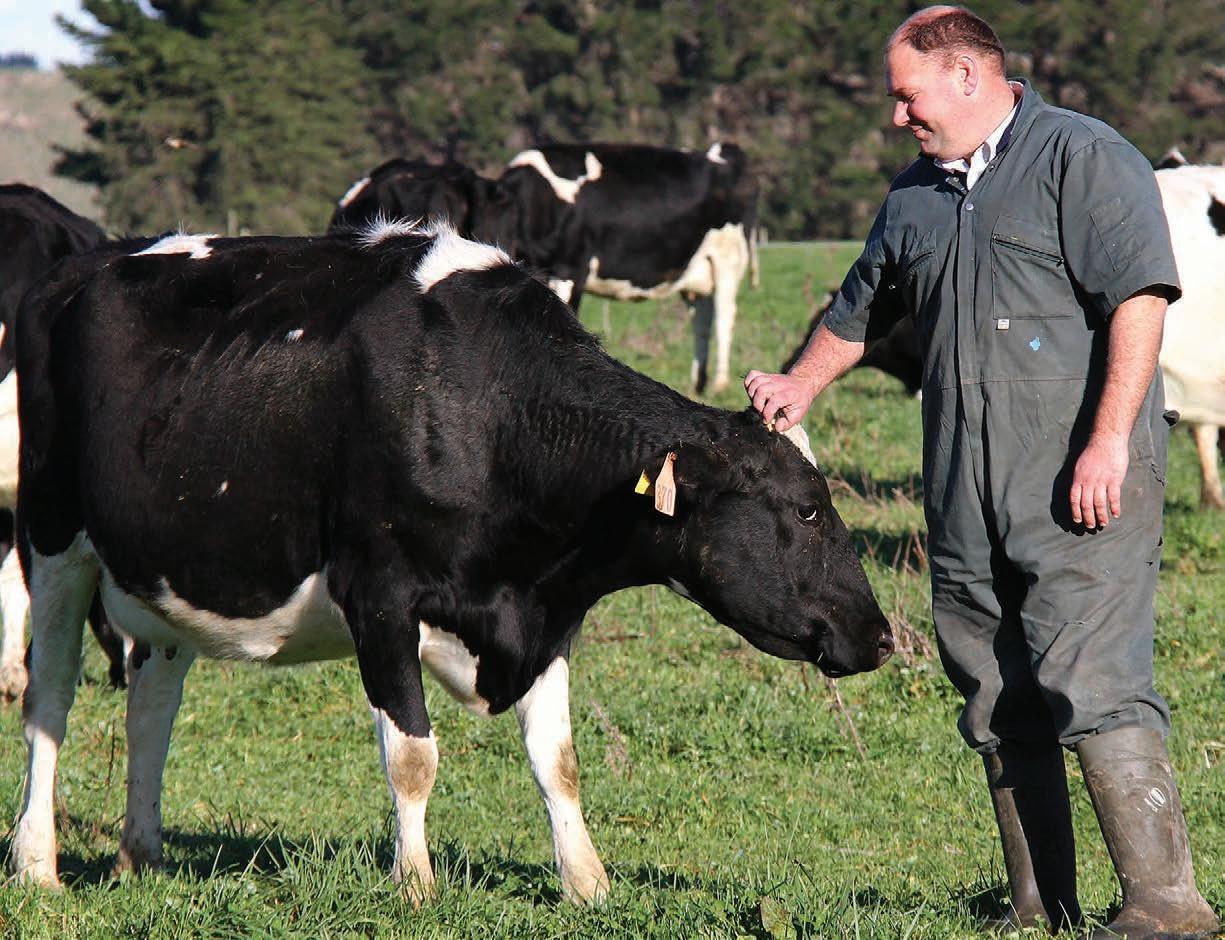
I do agree with National’s Significant Natural Areas policy. I also totally agree with Judith Collins’ policy on genetic engineering.
I’m surprised at plans for a minister of hunting and fishing
National is a party of the centre, as is Labour. At the end of the day I’d argue there’s not a lot of difference between the two.
Correspondingly, National’s likely coalition partner is ACT, which will make life interesting as ACT is unashamedly on the liberal right.
For example, National voted with Labour for the zero-carbon legislation. ACT didn’t. National voted with Labour over gun control. ACT didn’t.
ACT’s primary industry policy is enlightened and supportive. ACT’s firearms policy is workable, whereas I’d argue that the current Labour-National policy isn’t.
Labour’s likely coalition partner is the Greens, and their agricultural policy is totally unworkable in my view.
That leaves New Zealand First, the Opportunities Party and the Māori Party somewhere in the middle of the scrum. NZ First has a track record of supporting agriculture, the Māori Party I find difficult to take seriously, and I was pleasantly surprised by the policies of the Opportunities Party.
There are two other issues, and they are the agricultural expertise in our political parties and the threat that is Auckland.
That threat is real but, judging by their local government, Auckland is largely dysfunctional.
Our main political parties will have a strong agricultural presence after the election no matter who forms the government. To me that is extremely positive and long overdue.
Almost one in three voters live in the Auckland area, which is incredibly significant as if you win Auckland, odds on you win the election and that is a real problem for the provinces. As we can’t do anything about the foibles of the Queen City, I believe we should be reminding our major parties about the relevance of the provinces to NZ’s wellbeing.
That involves promoting and working with those in the established parties who understand
agriculture and the importance of the provinces.
For a start, I wouldn’t argue about the passion Agriculture Minister O’Connor has for the primary sector, and his efforts over Mycoplasma bovis demonstrate that. While I don’t agree with everything he does, I would never argue his commitment or that of the other rural MPs, Local Government Minister Kieran McAnulty and Customs Minister Jo Luxton.
National has retired Feds board member Miles Anderson as a candidate; I rate him extremely highly. Hopefully he will bring a greater provincial focus to that party.
He is joined by farmers Suze Redmayne and Mike Butterick.
ACT has Mark Cameron, who has been the one effective opposition voice supporting the rural sector. Go to the ACT website. He is solid, energetic and focused. Cameron

now has Andrew Hoggard in the ACT camp. They will be an effective team. ACT leader David Seymour is also a passionate supporter of the provinces, as is Nicole McKee. Mark Patterson was NZ First’s agricultural spokesperson and is solid and knows the sector well. He is standing for NZ First again and has done a great job chairing Otago Feds.
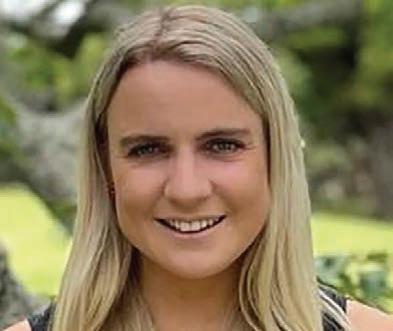
My point is that our main political parties will have a strong agricultural presence after the election no matter who forms the government. To me that is extremely positive and long overdue.
Finally, I have no idea what the composition of Parliament will be after the election. I think it’s far too early to tell and the coalition options are, well, mind-blowing. It’s also important to remember that the pre-election posturing and the post-election reality could be quite different.
‘
IF YOU do what you’ve always done, you’ll get what you’ve always got.”
It’s the age-old saying, but never has it rung truer than in our current farming climate (no pun intended).
The world is changing, and it’s calling on farming to change with it.
The resistance narrative that has been able to hold strong in farming is becoming untenable and it is time to look to what the future of farming will be. Future Farmers is just one of many voices looking to help lead the way with this change.
For many years, as farmers, we have been able to sit in the comfort of the fact that ultimately people will always need us, as
without us they’d be naked, hungry and sober. The reality is now, though, that the world has come up with alternative options and more and more you hear people asking for oat milk in their coffee rather than dairy milk.
The voice for the future doesn’t need to be negative, however. We don’t have to subscribe to the anti-change narrative that we have seen come through from the Groundswells of the world.
Nor do we have to take a Greenpeace approach and be anti the traditional farming system that has been so successful, for so many, for so long.
We can respect and be grateful for the past, while being ambitious for the future.
The voice for the future needs
to be farmer led, one where we acknowledge the nuances from farm to farm and work with farmers to change.
We can respect and be grateful for the past, while being ambitious for the future.
However, if farmers don’t take up this opportunity it will in the end come from Wellington. The key is taking people with you, not dragging them kicking and screaming.
People are intrigued by us as a group and the leadership we bring to the sector because we see food and fibre as being more than just
something that you eat and wear. By connecting people to where the produce has come from and giving it a deeper meaning, the attraction for milk that is squeezed from an almond grown in California suddenly fades away.
An important way we can start this connection is through educating young people about agriculture in schools.
We can then grow this connection through the backstory of the way in which our products are made – you only have to look to the most successful participants on X Factor to know how much people love a good backstory. There is no reason the same will not be true for agriculture.
Phil Weir took the perspective of the lowest cost producer model catering to the broad commodity market and Dan Eb covered the margin seeker who strives to outpace competition.
The third model, that of the moat builder, involves constructing enduring value through safeguarding market share and long-term profitability.
From my perspective, Koppert Cress, the microgreens company we were visiting, exemplified this moat-building approach.
David EadeDavid Eade is a Whanganui sheep and beef farmer with a finance background, specialising in investments within the primary sector. eating.the.elephant.nz@gmail.com

IT WAS visit No 47 and mental fatigue was kicking in. We were halfway through the fourth week of visiting top food producers across five countries – the global-experience leg of my Nuffield scholarship.
The journey had been nothing short of extraordinary, a true once-in-a-lifetime experience, but I wasn’t particularly keen on our next visit – to a microgreens farm in the Netherlands that supplied restaurants.
The prospect conjured images of hipsters in a greenhouse, cultivating what appeared to be mere side dishes, contributing to potential food waste. But my assumptions were off. Visit No 47 provided valuable insights into what it takes to build enduring business value, often known as creating an economic moat.
Throughout this four-part series, we’ve explored various models of operation for food producers.
Continued from previous page
However, what is not a good backstory is un-swimmable rivers, dying native bush and increasing emissions.
The reality is that, more and more, wealthier consumers want to know how their food is being made and how many emissions it takes to make it.
Leadership is about proactively painting the picture of how you want an industry to look, rather than reacting to all the inevitable challenges.
By setting a plan for the next 10, 20, 50 years, farmers can see how their future will look, as opposed to continuously resisting the changes and then being hit with the inevitable all at once. Future Farmers are only just getting started on this, so join us and come along for the ride.
As producers of New Zealand’s grass-fed lamb and beef, we often receive advice to reshape our storytelling to catch lasting premiums. While this advice holds a certain truth, storytelling can only do so much. Our visit to Koppert Cress left me with three actionable lessons in moat building.

Firstly, lasting value emerges from scarcity. It’s easy to charge more when you offer unique products to niche audiences. This exclusive approach contrasts with the fiercely competitive world of commodity markets in which many of us operate.
Koppert Cress illustrates this by sourcing and cultivating unique microgreens, such as a red-leafed plant bursting with beetroot flavour or an intriguing edible flower coated in natural-looking crystals and packed with an aftertaste that numbs the palate.
This uniqueness has innovative chefs navigating a conventional supply chain to access their product.
Secondly, lasting value often hinges on intangible factors.
Many food producers focus on raw production metrics – kilograms of beef, litres of milk – and ignore the importance of intangible assets like relationships.
Koppert Cress builds genuine
connections with chefs by inviting them to an on-site testing kitchen, fostering collaboration and experimentation. Lastly, innovation must be a continuous endeavour. The core of building enduring value is the willingness to invest resources and time in pursuing early-stage ideas, knowing that they may not yield results for a decade, or maybe ever.
Koppert Cress’s journey began over 30 years ago with a basic innovation – delivering microgreens promptly to chefs, a service no one had offered before.

This culture of innovation continues, with the commercialisation of one new microgreen annually, a
semi-automated greenhouse, establishing a geothermal energy project and using drones to control moths.
The scale of these projects is very different from the original innovation of prompt delivery, yet their philosophy remains the same – to stay a decade ahead of competitors without risking the house.
A misconception often held by NZ’s food and fibre producers is that a moat surrounds all products originating from New Zealand Inc – a moat that will bring additional value to all producers. Reality opposes this idea.
Many of our raw materials are supplied to highly competitive markets that are extremely sensitive to price.
We are not a single-market entity, and our product range is too diverse.
As food producers, we are presented with three choices: accept the status quo and be content with a marginal return on capital; collaborate with companies striving to establish
lasting value and accept a modest share of the success; or embark on a 10-plus year journey to create enduring value ourselves.
Personally, the lessons learnt from visit No 47 have helped reframe where we should focus our efforts on our farm, and when we can expect to see a return from these actions.
It will be at least five years before we see any return from our current investments in functional trees, improved genetics and partnerships producing beef with a low environmental footprint. Long-term value will come from how well we can build relationships across the supply chain and with our end consumer. In the short term, we are grateful for NZ’s developed commodity market that we can access while we continue our quest to add lasting value.
Our industry was built by those before us taking significant risks. We must celebrate the success stories of those currently taking risks required to build lasting value, from which we all gain.
A PLAN: By setting a plan, farmers can see what their future will look like, as opposed to continuously resisting change and then being hit with the inevitable all at once, Eve McCallum says.
A misconception is that a moat surrounds all products originating from New Zealand Inc – a moat that will bring additional value to all producers.
Kingi Smiler was soaring in the Pākehā corporate world when his mother suggested he offer his skills to his whānau – and the wider whenau.
THE chair of Miraka, the first Māori dairy manufacturer, says education is the secret to his business success.
As a middle child growing up in Naenae with three older siblings and four younger ones, Kingi Smiler was encouraged to learn from a young age. His parents – who were high school teachers – had high expectations of academic achievement.
“When I was brought up, the people of my era used to talk about being able to walk in both worlds,” Smiler says – te ao Māori and Pākehā society.
He says education opens opportunities to those capable of taking advantage of them.
“Even so, you need to be able to read and write, and it’s always good to be able to do your numbers,” the former chartered accountant says.
Smiler has always been good with numbers – and the numbers stack up for Miraka.
The Māori dairy business is one of New Zealand’s largest export businesses, with more than $300 million of exported goods.
It’s said to be the first dairy business to use renewable geothermal energy, and has one of the world’s lowest manufacturing carbon emissions footprints.
Miraka’s plant uses geothermal steam, emitting 92% fewer carbon emissions than comparable businesses. It describes its annual carbon emissions savings as equivalent to taking 7000 cars off the road.
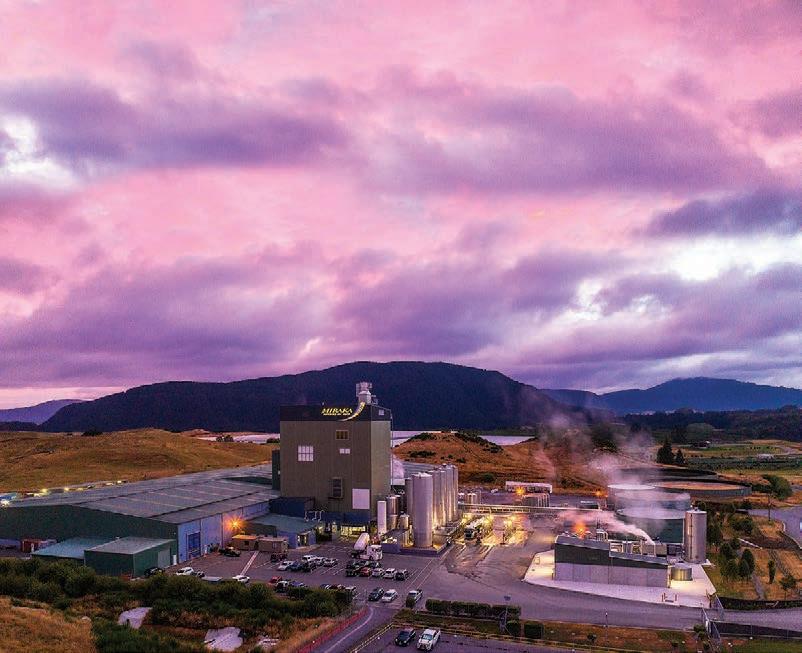
Miraka was established 13 years ago by Māori trusts and incorporations. Smiler is also the chair of Wairarapa Moana Incorporation, a founding shareholder in Miraka.
He has been in the agribusiness industry for several decades, applying his technical skills to enable Māori economic development on Māori land.
Smiler was recently inducted into the NZ Business Hall of Fame alongside other pioneers of NZ business Kelly Tarlton, Wally Stone, Theresa Gattung, Ted Manson, Michael Barnett and Sir Paul Adams.
The awards have run for over 30 years and are organised by the Young Enterprise Trust, a not-forprofit organisation that promotes enterprise for youth to contribute towards transforming NZ’s future economic and social prosperity.
Smiler has been mentoring Ngāpuhi Krause, one of the aspiring entrepreneurs involved with Young Enterprise, and she introduced him when he was inducted. On the night, Krause said Smiler was a quiet but significant contributor to Aotearoa.
“Kingi has worked tirelessly
to encourage and contribute to initiatives that grow the commercial, social, economic and environmental wealth for his whānau, hapū and his community.”
Smiler says growing up, he had rather played sports with his mates, particularly rugby and cricket. His entire whānau were young athletes; his siblings were swimming champions, and he played for the rugby first XV.
“We were brought up in a competitive environment, and we were always keen on our sports, with our dad coaching us, who was a fantastic sportsman himself.”
He did just enough to pass his papers.
Smiler says his father was very academic; he had completed a BA at Auckland University and gone on to Victoria University and did an MA in English and maths.
In 1966, when Smiler was 10 years old, his beloved dad passed away, and his mum decided to send young Kingi to Scots College in Wellington, not the local school in Lower Hutt.
At Scots College, he made strong connections. While he was later studying accounting at Victoria University those ties helped secure him a job at a firm, and that led to an offer to work overseas.
Smiler spent about eight years in Canada working for Ernst & Young (now EY) as an auditor and then in business restructuring.
“I had to do the Canadian examinations to get the Canadian CA [now called the Chartered Professional Accountant certification programme], and they had a much wider perspective and high standards,” he says.
He returned to NZ, and in 1990 Smiler was made a partner at Ernst & Young in Wellington. He left the firm in 1997 to strike out in a bold new direction and support his whānau and hapū, at his mother’s insistence.
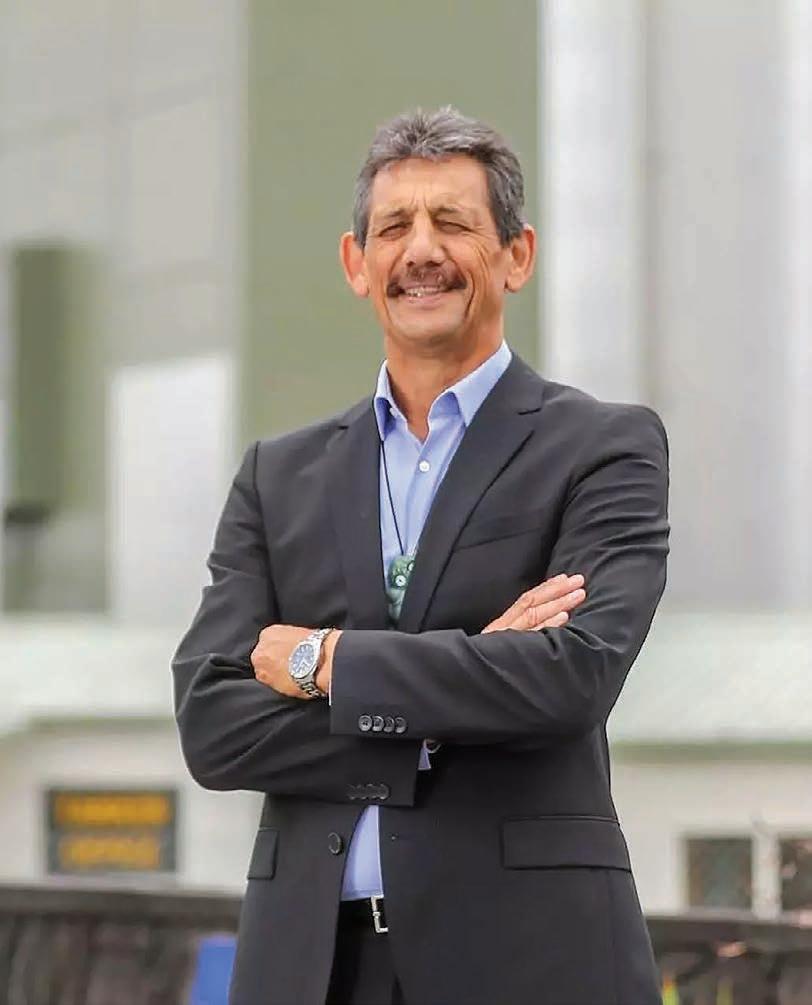
“My mother would always volunteer me to get involved
with our whānau land interest, nominating me to be a trustee when I was in Canada,” he says. Her vision and determination paid off as Smiler became more heavily involved in trust matters, and that contribution continues 25 years later.
He was also part of the Federation of Maori Authorities that fought to enact changes to Māori land leases held in perpetuity, particularly in Taranaki and Wellington.
“We were part of a group that got all those rules changed to make it more commercial for those particular leases.”
Not only did he become a trustee, but he soon chaired the trust that decided to pool land interests and use them to build Miraka.
Three organisations combined assets worth about $750 million.
Smiler says this has given the whānau more opportunities by growing their assets through Miraka.
“The returns for the whānau over the last 20 years ... [with] many, many times, very significant growth, has been very high.”
Our generational thinking is that we’re the kaitiaki for the next generation. That’s how we farm, and that’s how we tend the business and look after it.
He’s proud to have been a part of the reinvigoration of the Ahuwhenua Trophy – a competition for Māori sheep, beef and dairy farmers – 20 years ago.
It was launched in 1933 by Māori leader Tā Apirana Ngata and the governor-general at the time, Lord Bledisloe, but interest
waned, and the last of the original competitions was held in 1990.
The competition was relaunched in 2003 and three years ago horticulture was included, bringing even more life to the competition.
“Well, Lord Bledisloe donated these calves for the Ahuwhenua Trophy competition, and that’s the legacy of the history that we were developing. It was good to take it to the next level and now be recognised as the premier competition of Māori farming,” Smiler says.
He wanted to highlight and profile the great work Māori farmers are doing to “demonstrate to the rest of NZ that they’re now right out there leading the way”.
Smiler says Māori farm differently, with the value of kaitiakitanga (guardianship) at the forefront.
“Our generational thinking is that we’re the kaitiaki [guardians] for the next generation.
“That’s how we farm, and that’s how we tend the business and look after it, which is normally not typical for the Pākehā competition, right? And we absolutely have a different view of the world.
“I mean, we call it kaitiakitanga, they call it stewardship, and others call it governance.
“Māori farmers are kaitiaki taonga [guardians of treasure], building that sustainability and resilience because we know we want to pass it on to the next generation. That is a big driving force for how all that growth occurs, which you don’t typically see now.
“When the others want to exit or retire, they sell the farm, which is different to us; we know we’re passing on to the whānau to take over the farm.
“So, we build for the next generation, who are then building for the next generation.”
Smiler says the Pākehā dairy farmers who supply Miraka
have adopted Māori values, “the Miraka Way”, and they’ve seen the benefits on their farms.
He says it is about blending values and skills to build a bicultural family.
Smiler was chair of Kāhui Wai Māori, a group brought together in 2018, and worked alongside the likes of Dover Samuels and Annette Sykes to influence the Essential Freshwater policy.
He says it was a huge achievement to get the legislation changed three years ago because the new law recognises tikanga Māori. Mahinga kai (the value of food resources and their ecosystems) is now compulsory, affecting how targets are evaluated and how limits are set in the regions.
“Those new rule changes are now really starting to underpin how they operate the Environment Court with a Māori worldview now, about how they view wai [water] – it is all now part of the regulations.”
Smiler says he’s enjoyed the challenges he’s faced throughout his life and embraces stress.
“I enjoy the stress. I just see that in the challenges, there’s lots to do and lots of problems to solve. I just approach those in a positive light and focus on resolving them. I tend to just absorb all of that without letting it overwhelm me.
“For the most part, I don’t lose any sleep over it.”
He’s still a keen sportsman. Smiler competes in Ironman and has been actively competing in national and international competitions for 20 years.
Training for the Ironman in Wellington is a breeze for Smiler as he lives at the top of Brooklyn; its high viewpoint has beautiful scenery of the south coast. “Windy Wellington, we’re used to that; we always love coming back to Wellington.”
Efficiencies across the board, new projects and heavy investment in EIDs and genetics have built a sheep and beef operation that punches well above its weight. Charlie Williamson reports.
WHILE nailing down efficiencies in almost every aspect of their 2400ha farming business and growing their output, Matt and Lynley Wyeth are still producing net-carbon zero beef and have recently established more than 30,000 natives and 8km of riparian fencing.
Spring Valley Enterprises, located in the Kaituna Valley in Wairarapa, is “where farming ‘meats’ efficiency”, Matt says, noting that his and Lynley’s focus has always been “converting grass into a top-quality product that’s been sustainably grown and sustainably produced”.
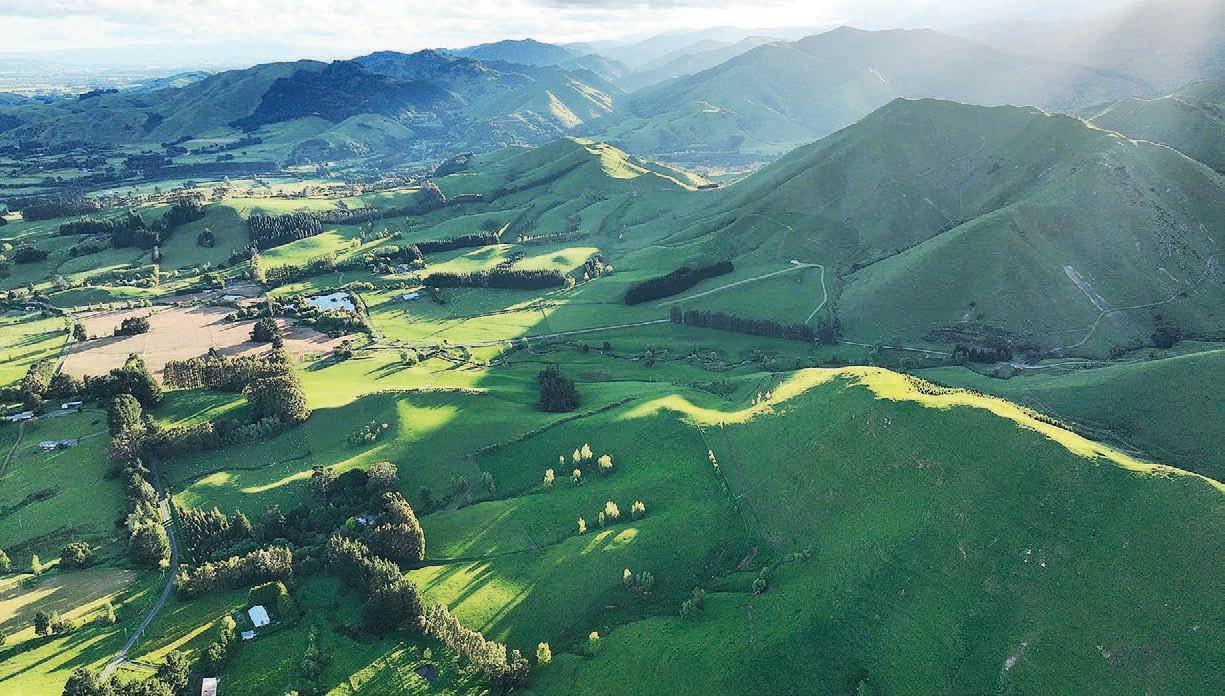
Both Matt and Lynley come from long lines of Wairarapa sheep and beef farmers, with Lynley’s farming history spanning six generations, and Matt’s four.
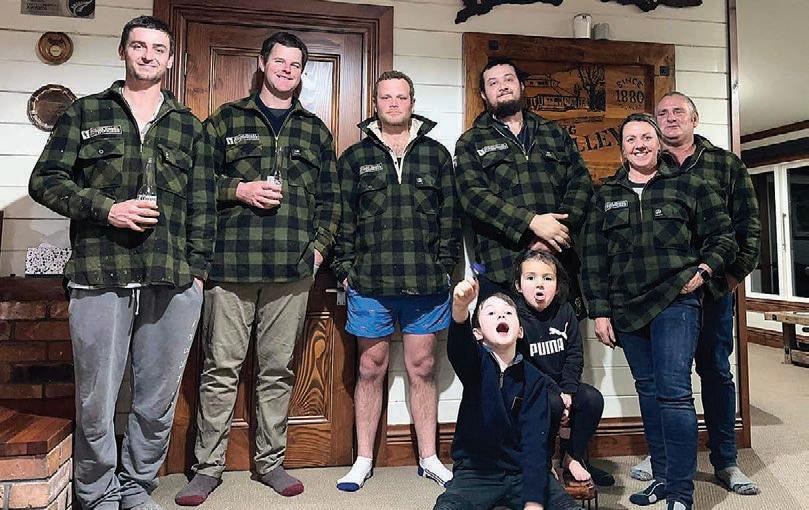
Their farming business comprises both their families’ properties, along with newly purchased land and lease blocks – an important reason they see themselves as no more than caretakers of the land.
“It’s something that we want to leave behind, and we want to know that we’re leaving a bit of the country better than we found it,” Matt says.
“We’re more or less just caretakers of the land, whether that’s for 30, 40, 50 years, you know, and then it’ll go on to someone else. But we just want to leave a legacy behind that we’ve left the farm better than we found it.”
This environmental focus has proven to have no impact on the quantity of produce that leaves Spring Valley, with efficiencies across the board and new projects translating into an operation punching well above its weight.
One of these projects began almost 20 years ago when Matt and Lynley were first starting out, and involved the introduction of a new sheep breed, the Highlander, which they farm alongside their 1000 head of Angus beef cattle.
The Highlander sheep breeding programme was being established in New Zealand at the time, with the breed originating from the UK. The breed is marketed as highly fertile, and able to deliver more kilograms of lamb with the same or less input, and that could not have been truer for the Wyeths in the years to follow.
“With our Highlander ewes, that’s our main business driver basically. So we’ve got 8100 ewes, and then we’ve got 3200 hoggets,” says Matt.
“What we’ve found is that they really are a highly fertile breed. So when we first took over we had some Perendale-Romney crosses, and we just weren’t getting the conversion rates that we wanted. We weren’t getting the scanning numbers and lambs on the ground.”
“So we decided to go in with the Highlander. Then, within a breeding season, that just took our existing production levels and escalated them.”
Scanning numbers skyrocketed within a season, with Matt saying “2002 numbers were sitting around the 130-40% mark, then in 2002, 2004 and 2005 they spiked to around the mid-to-late hundreds.”
More than two decades and a rigorous breeding programme later, the Spring Valley scanning numbers are now at 215%.
As well as the scanning numbers, the Wyeths are impressed by the efficiency of the breed, which allows them to have less input and fewer ewes per hectare while still managing an increase in production well past industry averages.
“You just can’t ignore the productivity that the Highlanders put out the gate,” Matt says.
“What we found is that we actually dropped the amount of kilos that were eaten, and increased productivity coming out the back.
I believe that farms having below a 3000-head ewe flock, they complicate their system by having a breeding programme with ewe hoggets and twotooths that could go all terminal.
“So we’re in the business of growing the most grass that we can, and converting it into a product that we can sell, and for that, Highlanders in my mind are one of the best converters.”
Matt understands that other breeds may be better suited to different farming systems, although he sees opportunity for other farms to give the breed a go.
“For our system, our country and our management, they are perfect,” he says.
“So I’m not going to get up on the podium and say they should
be throughout the country, but there are certainly areas that they should be, and at the same time I’m trying to think of somewhere they shouldn’t be.
“And where the future is going –whether you agree with He Waka Eke Noa and our livestock issues, having less stock on and producing more – the Highlander fits in that space perfectly.”
Given the success they had with the Highlanders, and noting something of a lack of diversification at Spring Valley with “98% of the property’s income coming from one company”, as Matt says, the Wyeths decided to launch a new hogget breeding programme.
“So we decided we wanted to see a bit more resilience and diversity in our business. We also really enjoy the breeding side of the operation.
“We knew we had a lot of people inquiring about chasing our ewe genetics, and to me why would we be putting some of our ewes to a terminal [ram] to sell lamb at meat value, which anyone can do.”
As part of this breeding programme, ewes are put to the terminal ram and the weaned lambs are sold to smaller scale farms, allowing these farms to simplify their operations by eliminating the need for rigorous breeding programmes.
“So we thought there was a huge opportunity for New Zealand to
actually increase their productivity by going terminal,” Matt says.
“I believe that farms having below a 3000-head ewe flock, they complicate their system by having a breeding programme with ewe hoggets and two-tooths that could go all terminal.”
“And we’ve done our numbers and they can actually increase their productivity by almost 1520% while also simplifying their system.
“So what it does is it increases their productivity by getting fat lambs gone quicker and earlier while trusting us with their breeding programme.”
Throughout this programme, the Wyeths have invested heavily in genomics and EIDs, which has given them solid numbers to back up their ewe-lambs.
“We’ve got a proven product because we’re monitoring and measuring everything through EID,” Lynley says.
“So the product we are delivering is a ewe lamb that has recorded data with their birth rank against it that has already had a 5-in-1 treatment programme completed.
“Also, we’ve had a lot of inquiries because we had a very good worm status, so people are chasing these genetics to help clean up their own flocks.”
Alongside these new projects, one that has been front of mind for Matt, Lynley and the Spring Valley team is improving biodiversity across the property.
“We’ve just done our NZ Farm Assurance Programme Plus [NZFAP Plus] certification,” Lynley says.
“So that was to just really understand what it is that we’re actually protecting on the farm, as well as what we could be doing better.
“We’re by no means a finished article, but in 2019 we started a project planting 30,000 native trees and eight and a half kilometers of river fencing up at our Ratanui farm, which is now finished.
“So that was a massive job, but we call it our legacy project, our environmental corridor. It has been absolutely amazing for us,
and it was one of those projects that we’ve just loved from the start to finish.”
Through consumer insights provided by Silver Fern Farms, Lynley says that they understand that consumers right across the world are looking at on-farm environmental practices.
“They actually want to know that we are doing the best that we can for the land, and in turn the best that we can for the product that they are purchasing,” Lynley says.
These efforts towards on-farm productivity and sustainability have been recognised throughout the industry, with a lengthy list of awards and accolades spanning the past 10 years for Spring Valley Enterprises.
Thy include the Wairarapa Hill Country Farm Business of the Year, Greater Wellington Balance Farm Environment Awards, the NZ Golden Lamb Awards, the Allflex NZ Sheep Industry Award for Innovation and Wairarapa Gate to Plate.
There is currently a team of five employed at Spring Valley Enterprises, with block managers, a junior shepherd, a head shepherd and a fencer general/project manager.
Matt stresses that they are the heroes of the day, saying “they’re out there everyday fighting a good cause and learning and developing skills along the way”.
“It’s interesting how farming evolves. I mean we didn’t set out to be a leader of a team, but we did have the aspiration to build a scalable business, and that involves taking people along on the journey with you.
“And so we can have no better satisfaction than being able to see people grow.
“So they come as a junior shepherd and they leave as a head shepherd. Or they could come as a head shepherd and leave as a block manager.
“We will never call our employees’ ‘staff’, and that’s a really big thing, they’re all part of the team. We would never give them a job or give them a task that we wouldn’t do ourselves. Everyone is equal.”
THE weather pattern known as El Niño is quickly returning to Asia, bringing with it high temperatures heralding a difficult climatic period ahead.
El Niño is a climate pattern moving to Asia from the Pacific, and brings hot and dry conditions to southeast Asia, in contrast to the wetter and cooler weather from La Niña, which has been the predominate pattern in recent years.
The increasing heat will decrease agricultural production, and likely spark forest fires and the associated haze across parts of southeast Asia.
Power and water supplies will be under pressure, also causing problems in the manufacturing sector and businesses.
Across Indonesia, farmers and landowners are bracing for the impact, with some areas already under emergency alerts as concerns over possible forest fires increase.
Seven Indonesian provinces –mostly palm oil-producing areas on Sumatra and Kalimatan islands – are on alert for the kinds of blazes that have caused significant losses in recent years.
El Niño will likely be a factor reducing harvest tonnages for export crops like palm oil in Indonesia and Malaysia, the world’s two largest producers of the commodity – although farmers in Malaysia say the reduced
harvest may not be seen for a couple of years, depending on how long El Niño stays around.
Forecasters are suggesting 2023 could be a rerun of 2019, when El Niño contributed to widespread fires across Indonesia. Losses were estimated by Indonesian authorities as being in the billions.
The haze from those fires caused significant problems for airlines across the region, especially in Singapore and Malaysia.

The other significant issue was human health – with populations in several countries dealing with the acrid smoke haze, and the respiratory problems that come with it.
Authorities in Singapore are already at work in an attempt to mitigate the risk of haze returning from Indonesia and Malaysia, advising all citizens to get organised with air-purifying devices, face masks and air conditioning.
Vietnam’s national weather agency said it is predicting a record heatwave in the country in the next few months, and coffee producers have warned of a decline in coffee production of as much as 20% in the 2023 year. Vietnam is a top global exporter of coffee beans.
In Thailand, the government said both sugar cane and rice production will decrease and farmers have been asked not to grow rice in the off season to spare
water for other crops, as well as for the industrial and tourism sectors. It’s another difficulty for the rice market in Thailand, already seeing record prices after India moved to ban rice exports, pushing prices up across the globe.
In the Philippines, initial estimates show that local rice production may fall by around 1.8% and while the economic impact could be minimal, the country’s central bank said El Niño’s impact on food and energy prices will affect the entire economy.
EARLIER this year, Singapore announced a milestone in its plan to plant a million trees by 2030.
Since the OneMillionTrees Movement was launched in April 2020, Singapore has pulled ahead of schedule with more than 540,000 trees now planted and growing.
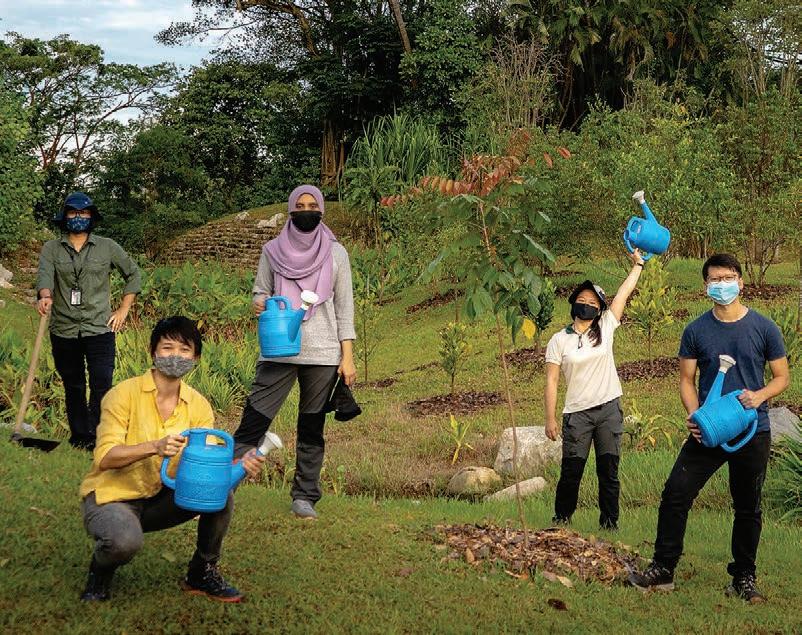
OneMillionTrees is meant to increase biodiversity and “restore nature back into our city”, officials say. Environmentalism is at the core of massive planting projects like this. Trees absorb and store CO2, making planting at a large scale “among the most effective strategies for climate change mitigation” according to research published in Science.
Alongside this, these projects have “co-benefits” – promoting biodiversity, protecting native ecosystems, regulating water cycles, and improving health and wellbeing, to mention a few.
Singapore is not alone in Asia when it comes to tree planting. India, Indonesia, Malaysia, and the Philippines have all embarked on major missions to restore land through tree planting, aiming for a combined total of 47.5 million hectares. In 2022, China announced plans to plant 70 billion trees by 2030 as a way to fight deforestation and climate change.
However, while the idea behind these projects is sound, recent reporting shows there are a number of hidden hazards on the path to creating these massive green spaces.
In a study published last year, researchers found that treeplanting projects across Asia lack seed diversity.
A limited number of species are planted – often exotic species and not native – and the tree types are often selected for how easy it is to get seeds and for how fast they
grow. This can have a negative impact on biodiversity and work out poorly in the long term, as the environment would recover better with a diversity of native species.
To make these projects work, researchers suggest looking to local communities to help with planting – building on seed networks that already exist and draw on expertise in the area to plant and curate the best possible ecosystem.
– Asia Media Centre
El Niño is also expected to impact hydropower output in Asian nations, as well as pushing up energy demand as businesses and homes crank up their air conditioning. Vietnam’s state electricity agency has declared a “national electricity-saving movement”, pleading for a cut in consumption across the country.
Meanwhile Malaysia’s National Disaster Management Agency has begun cloud-seeding in the north of the country, in an attempt to encourage rain.
Forecasters are suggesting 2023 could be a rerun of 2019, when El Niño contributed to widespread fires across Indonesia.
And Philippines President Ferdinand Marcos jnr is on a water conservation drive. “All of us can help. All of us can do something,” Marcos said.
– Asia Media Centre
THE environmental and financial benefits of carbon farming activities make farmers more drought resilient, according to a national survey conducted by Australia’s Charles Sturt University.
Nearly three quarters of farmers questioned on the impacts of carbon farming activities said they were better prepared for drought, used the extra income to meet their mortgages and were able to reinvest in their properties, reducing the severity of drought.
As a result, those engaged in carbon farming were less stressed than those who weren’t, even though most carbon farmer respondents came from more drought-impacted regions.
The survey of 120 farmers, enabled by a grant from the Federal Government’s Future Drought Fund, was conducted in late 2021 and early 2022 with most participants from New South Wales, Victoria and Queensland.
Eighty survey respondents were engaged in carbon farming or carbon farming activities, using one or more methods including soil carbon, regeneration and plantings.
Charles Sturt University’s Emily Webster, who led the research, said the results clearly show farmers and the environment are benefiting either through
projects that generate Australian Carbon Credit Units or through land management improvements from carbon farming activities.
“For those earning revenue from carbon farming, it allowed them to improve their properties, such as creating feed reserves and stock containment areas while servicing farm debt. The additional income also gave many farmers the confidence to de-stock and re-stock early,” Watson said.
“Farmers engaged in carbon farming activities also reported greater drought resilience, with better soil health, more water retention and less erosion leading to faster regrowth of ground cover once the dry was over.”
Roger Sendall, who runs a 6500ha sheep and cropping operation west of Narrabri in northwest NSW, has experienced first-hand the drought-proofing effect of carbon farming.
“During an earlier drought, we nearly went broke just from feeding sheep and the stock really suffered. We had to change. By focusing on carbon cycling practices, our property is now holding more water. We handled the drought a lot better due to carbon farming. It’s simply good agricultural practice,” he said.








 Wayne Langford
Federated Farmers President
Wayne Langford
Federated Farmers President
ON FRIDAY August 18 the government nally drew a line in the sand and announced their plan for pricing agricultural emissions.

Disappointingly, it didn’t remotely resemble anything farmers would be able to accept as a practical, pragmatic, or fair pathway forward.
Instead of embracing a plan designed in good faith and partnership with the primary sector, they have decided to break ranks and go it alone.
That’s why Federated Farmers are standing up, taking a principled approach, and saying ‘NO!’ on behalf of farmers and rural communities. This shouldn’t have been a surprise to the government.
Feds have been very clear from the outset we had three bottom lines that needed to be met before we would accept any price on agricultural emissions.
First, there needs to be a review of New Zealand’s current methane reduction targets that takes the di erent warming impact of methane into account.

Our current methane targets are unrealistic, unscienti c, and go further than is needed to stop farming’s contribution to warming.
Given the signi cant cost and e ort involved, farmers need to have con dence we are working towards the right targets.

Second, emissions pricing should only be for the purpose of
incentivising uptake of viable and cost-e ective mitigation options.
Anything else is just a tax on a productive sector.
Because Kiwi farmers are already the world’s most emissions e cient producers of milk and meat, we are going to need new tools and technology to support further reductions.
As it currently stands, we don’t have any tools that can be adopted at scale. Frustratingly, the few options we may have, like feed inhibitors and genetically modi ed ryegrass, are being held up by a lack of regulatory pathways.
Finally, emissions pricing shouldn’t be put in place if it’s just going to lead to what is called ‘emissions leakage’.
It makes absolutely no sense to reduce our production here in New Zealand, only for the gap in the market to be lled by less emission e cient producers in other countries.
That just undermines the viability of Kiwi farmers and weakens our




economy – all while increasing global emissions.
That’s not a good outcome for New Zealand or the climate.
Unfortunately, what the government has come back with falls short on all three counts and is essentially just a reheated version of what was already announced, and rmly rejected by the sector, last December.
Yes, there have been some small changes at the fringes, but they don’t go nearly far enough to address the genuine farmer concerns raised.
That’s just not good enough from my perspective and completely undermines what little trust and goodwill remained in the He Waka Eke Noa process.
The government’s plan will be a disaster for farmers and rural communities.
According to their own modelling it will lead to a 20% reduction in sheep and beef farming and a 5% reduction in dairy production.
That’s the last thing the country needs in our current economic climate, and is not something Federated Farmers – or any primary sector organisation with farmers interests at heart - would ever be willing to support.

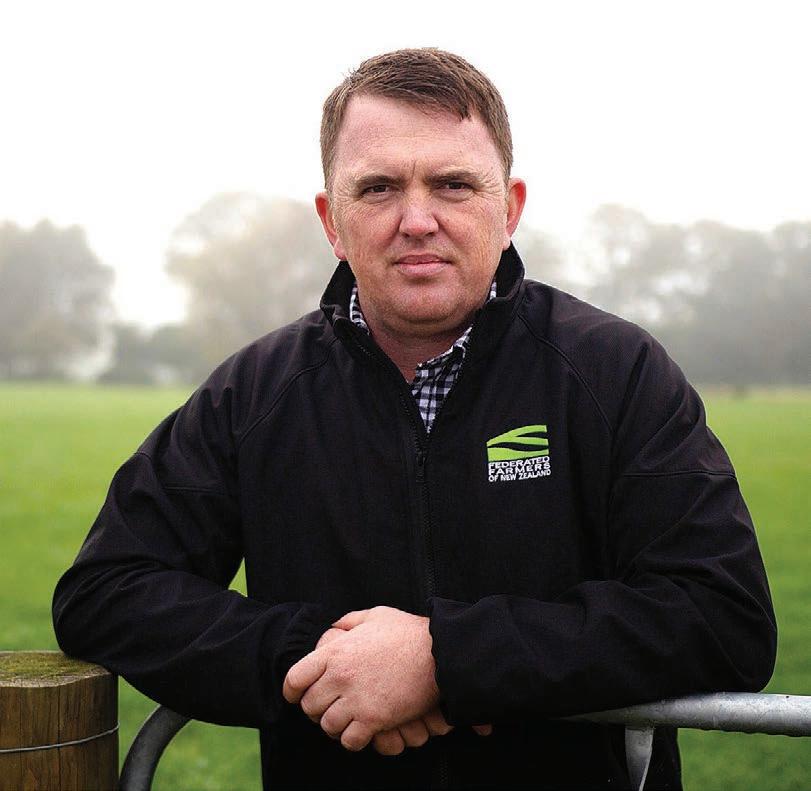


 Wayne Langford Federated
Wayne Langford Federated
The timing of the announcement was completely unbelievable and just goes to show how tone-deaf the government really are to the reality rural New Zealanders are living with. Do they not understand or care that farmer con dence is at record lows?
Lamb prices have dropped 25% in the past 12 months, and the milk price has dropped from $9.30 to a forecast of $6.75.
Farming families are already struggling to keep their heads above water with rising interest rates, rampant in ation, and falling commodity prices – my family included – and this is just going to add more uncertainty, complexity, and cost.
The one silver lining in all of this
is that Federated Farmers, Beef + Lamb New Zealand, and DairyNZ have been united in our opposition to the government announcement – even Groundswell have thrown their support in behind us and the principled stance we are taking. That’s the kind of unity we are going to need to see more of in our rural communities if we are going to get a practical and fair outcome that

Continued page 24

We all know there’s been too much division in farming circles for the past few years – we’ve seen it and we’ve felt it. Now is the time to change that so we can move forward stronger together.
FarmersKEEP TALKING: Wayne Langford says there will be some tough conversations ahead between the government and the agriculture sector.
FARMERS are by now familiar with what central government is up to on greenhouse gas emissions. The key target is a 10% reduction in methane emissions by 2030. This sits alongside a net-zero target for longlived gases and a 24-47% reduction for methane by 2050.
Federated Farmers has always supported the split-gas approach used for these targets, but never the numbers chosen. In our view, the two methane targets are neither scientific nor achievable.
Ruminant methane is almost 100% driven by feed eaten. Achieving a 10% gross reduction in methane in just six years can’t be achieved through efficiency gains only – it will mean feeding our cattle and sheep 10% less feed every year for the next six years.
The economists tell us that achieving this reduction through pricing will see sheep and beef farmers respond first, leading to a 20% fall in production by 2030.
Feds’ position is clear. We can’t accept a policy based off poor science that will devastate rural communities and increase global emissions as offshore competitors fill the supply gap.
This argument is now well known
Continued from page 23
will reduce emissions in a way that allows us to maintain viable farms.
We all know there’s been too much division in farming circles for the past few years – we’ve seen it and we’ve felt it. Now is the time to change that so we can move forward stronger together.
but farmers will be less aware of the policy currently being dreamt up at regional and district level.
For a long time, the Resource Management Act prevented regional or district councils creating rules to try and reduce greenhouse gas emissions. This was in recognition that GHGs are a global, rather than local, issue. A single national approach is far more preferable than piecemeal policy.
As it will be too hard to reduce gross emissions, will the easy option be for Wellington city’s residents to simply offset their emissions by covering the Wairarapa in pines?
This law was changed in 2020. Not only was the door opened for consideration of emissions, the law now requires that councils have regard to them.
The Wellington Regional Council is first out of the gates and is showing just how dangerous such an approach is.
The council’s climate committee, led by Green Party Councillor
Federated Farmers isn’t opposed to emissions pricing as a concept, but it has to be done right.
That’s why we’ve been ‘inside the tent’ working with partners to try and find a pragmatic way forward to measure, manage, and reduce onfarm emissions over time. Our three bottom lines we’re put in place to ensure New Zealand’s world leading
Thomas Nash, has agreed a target of a 50% reduction, across all gases, in regional GHGs by 2030.
You read that correctly:
Wellington’s Regional Council thinks that the region can reduce its greenhouse gas emissions, including agricultural methane and nitrous oxide, by 50% in the next six years. Outside of war or revolution, no country, region or territory on earth has achieved such a reduction.
Even if every new car in Wellington from now through until 2030 was electric, the fleet won’t turn over fast enough.
And while we may imagine Wellington as a fairly urban region, the majority of the land is actually east of the Remutaka range. The Council estimates that 34% of the region’s emissions come from dairy, sheep and beef farms.
While the central government has done the analysis to understand how much food production will disappear from their unscientific target, this work hasn’t been done for the regional policy. It’s simply a case of hit and hope.
It would be laughable if this was just a discussion document dreamt up in the council’s Te Aro offices, but the plan will have real consequences for both town and country.
Once an objective is written into a Regional Policy Statement, the




farmers who are already doing so much to improve environmental outcomes, often without thanks or fanfare, were protected throughout the process.
I’m not sure what all this means for the future of the He Waka Eke Noa partnership, but the government’s decision to reject a credible plan from the sector and to head in a
council must set rules or policies that aim to achieve that objective.


For farmers in Wairarapa or the Kāpiti Coast, this could mean that next time their farm comes up for a land use consent, the consent could require commitment to reduce emissions.
It could set conditions on stocking rates or fertiliser use that limit GHGs. Or, perhaps more likely, it will be flat out declined.
And good luck getting any new irrigation or land use conversions consented under such a plan.
This will be the case wherever regional greenhouse gas targets are set, regardless of how unachievable they are.
City and town folk won’t be spared. It remains unclear what any of this will mean for a new house build or
completely different direction will undoubtedly change the nature of that working relationship.

There are going to be some tough conversations that need to be had between the government and the sector, and amongst the sector partners, about what this might mean and where we go next.
I know there’s still a lot of
industrial consent in Wellington: will a condition of a consent now be that the stove must be electric? Will a resource consent be needed to use a barbeque?

And how is a place like Carterton or Masterton supposed to achieve this? Will it be light rail through the Wairarapa?
Or will the strategy go the same way as national policy? As it will be too hard to reduce gross emissions, will the easy option be for Wellington city’s residents to simply offset their emissions by covering the Wairarapa in pines?
• National board member Mark Hooper is Federated Farmers’ resource management spokesperson. Feds is opposing the Wellington Regional Plan in council hearings this month.
uncertainty, but you can trust Federated Farmers to play a constructive role in those conversations as we continue to push hard on your behalf. We won’t stop until we’re confident that we’ve achieved a fair outcome for Kiwi farmers that will protect the future of farming in New Zealand.
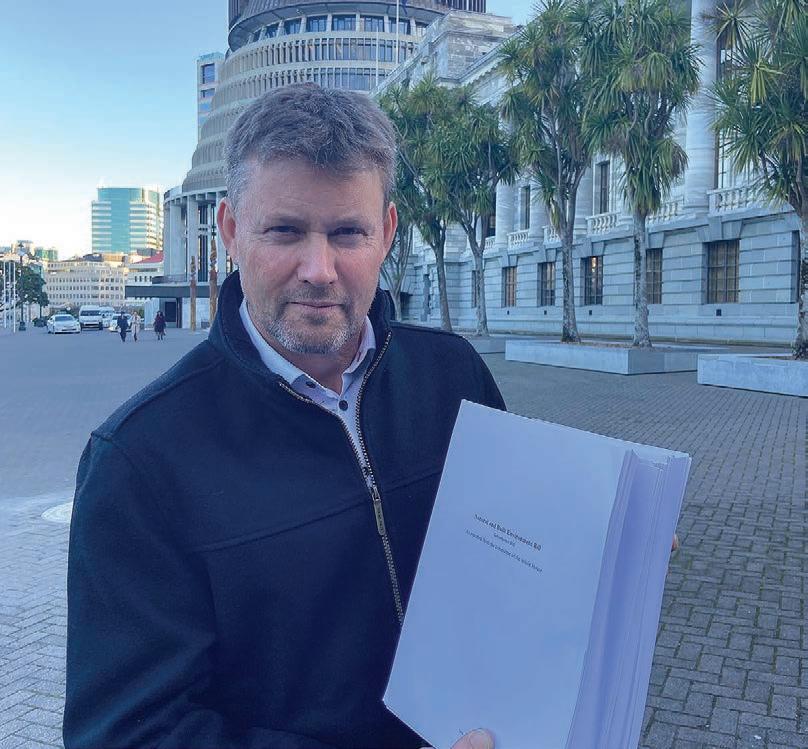
HISTORY never repeats, the great Neil Finn once sung. The full quote, often attributed to Mark Twain, finishes, “But it sometimes rhymes.”
As we rapidly move into election season, I can’t help but sing a little Split Enz. While the focus so far has been on the cost of living, it is government debt, spending and projected deficits which have me thinking about history.
New Zealand’s darkest economic time is the 10 or so years from 1984. To recap briefly, the out-going Muldoon government increased spending rapidly through its tenure, well in excess of the level of tax it took in. It lived beyond its means.

Financial Net Expenditure, which was the reporting standard at the time, increased from 24% of GDP in 1972 to 36% of GDP in 1984.
Government net-debt, again using the accounting standard of that time, increased from just 6% in 1972 to 30% in 1984.
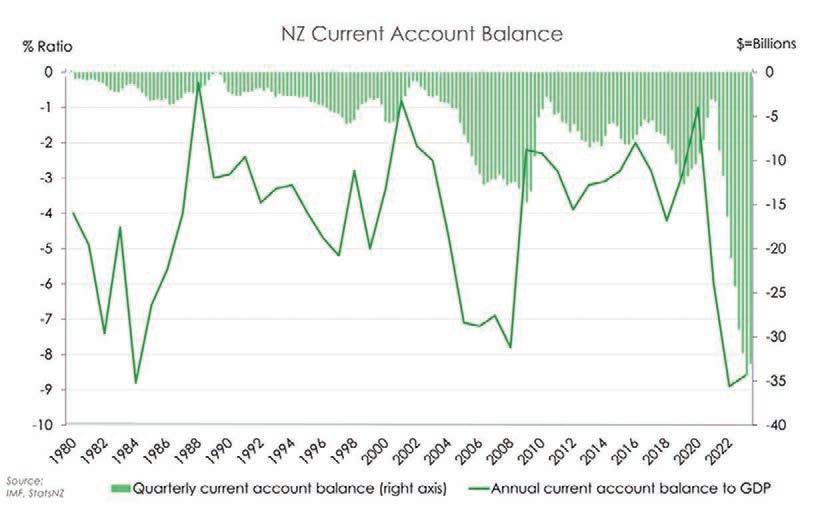
The incoming Lange government in 1984 inherited books with an annual deficit equal to 6% of GDP. The equivalent to a $21 billion deficit in today’s economy.
With a current account also up above 8%, and the cost of paying the interest on the debt rising to unaffordable levels, the government found itself running out of foreign reserves and unable to defend the dollar.
While the Lange government managed to reduce the size of the deficit down to 1% of GDP by the election of 1990, the total size of government debt continued to increase until 1991 and the ‘Mother of all budgets’, by which point net debt had reached over 50% of GDP.
So why am I worried history may be repeating today?
It is concerning just how many of our fiscal and economic indicators are today at similar levels to 1984. If
we use the old measure of net-debt to compare like-for-like, 2022’s net debt was higher as a percentage of GDP than 1983 (see insert). But just as worrying as the total figure is the direction of travel: in just four years net debt has doubled from 14% to 29% of GDP. This was a similar trend to what occurred before the 1984 election.
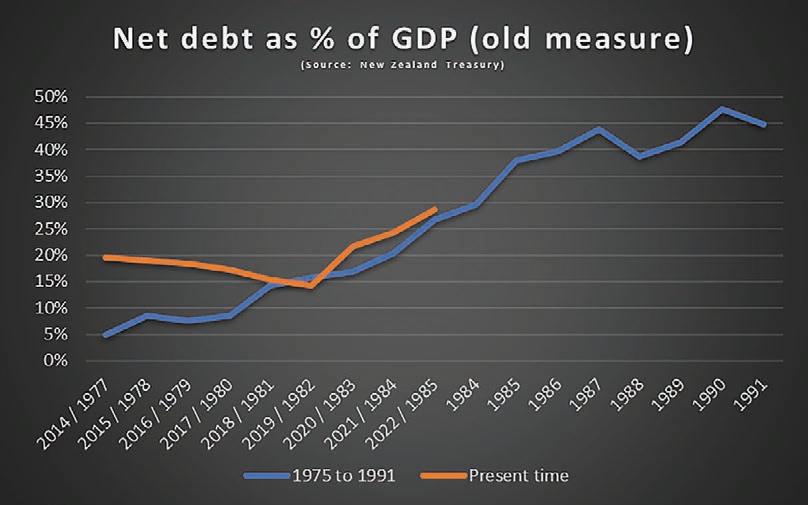
And the economic pain is still getting worse. Fonterra has downgraded its forecast twice since the most recent government tax
forecast. As business profits dive, government tax revenues follow.
Now, an astute reader would quickly point out a few key differences.
First, while interest rates are increasing, they are still much lower than they were in the 1980s. This means our debt levels are more manageable, for now.
Second, we also have a very different economic structure today than that of the 1980s. Our floating exchange rate means government doesn’t have to worry about running out of foreign reserves.
So, the economic surgery that was required to remedy the current situation will also be different to that in the past.
What is in common is the challenge of reforming our economy to rebuild productivity, vibrancy, and innovation. How we do this will need to be different.
First of all, we need to urgently reform our broken RMA system. We simply can’t be productive and prosperous when it takes a decade to consent any major new agricultural, industrial or infrastructure investment.
Change is also needed to our failing education system. No country can get ahead if it is not preparing the next generation to be innovative and ambitious.
And third, we need to change our policy approach to farming. Farming has been, and always will be, the heart of the New Zealand economy. Yet we have let ourselves accept a manta of ‘peak cow’, which, when the primary sector represents over 80% of your exports, is only one step away from ‘degrowth’.

Our government, processors and research institutions need to rapidly shift to asking themselves: how can we grow the primary sector in the next decade while managing the environmental impacts? How can we return confidence and investment to our farming sector?
In the short-term, this will mean reversing, amending, or slowing down some of the layers of regulation that farmers are currently tied down in. Removing policies that ban new conversions.
Removing the ban on live-animal exports that costs our economy $500 million per annum for no clear reason. Halting the plan for new freshwater rules notified in every region in 2024.
Paul Melville Federated FarmersAnd this has played out. We haven’t had any growth in production from dairy, sheep, and beef in five years. It is no wonder the economy is stagnating. If policies like emissions taxes and new freshwater reforms are implemented, it is forecast we could see over a 20% decrease in pastoral production by the end of the decade.
‘Degrowth’ indeed. At a time when the economy is already on the brink. Is this the future Kiwis want?


Over the next five years investment in water storage, embracing biotechnologies and replacing the RMA will further unlock growth.
While politicians may be campaigning on tweaks to GST or tax bands, know that whoever forms the Government in October will face hard choices very early. Faced with a structural deficit, the choice will be to either spend less or find a way to earn more.
Federated Farmers will make the clear case that it is possible to grow New Zealand’s prosperity through farming.
Over the next five years investment in water storage, embracing biotechnologies and replacing the RMA will further unlock growth.Paul Melville General manager of policy and advocacy for Federated Farmers IN THE RED: Feds general manager of policy and advocacy Paul Melville says NZ’s economic indicators are a big concern. WORRIED: Feds general manager of policy and advocacy Paul Melville.
THE Government appears to have finally cottoned on to a road infrastructure approach that Federated Farmers has hammered for years – skimping on maintenance and repairs of what we’ve already got only leads to bigger bills and disruptive access failures further down the track.
After a policy pivot driven by the Auckland floods and Cyclones Hale and Gabrielle reality check, Labour has finally published its draft Government Policy Statement (GPS) on land transport.
It sets out the government’s transport priorities and guides investments of more than $6 billion a year from the National Land Transport Fund, and another $1.5b from local government.
Maintenance is now listed as a strategic priority, alongside such things as reducing emissions, safety and an integrated freight system.
In papers from Transport Minister David Parker to Cabinet now made public, Parker notes increasing pressure on available funding because of historic underinvestment in maintenance by previous governments, and the increasing frequency of extreme weather events.
In his list of proposals to Cabinet colleagues, right up the top is: “… focus first on essential expenditure to maintain and operate existing assets and services.”
Later, he says: “Specifically identifying maintenance as a strategic priority is also an opportunity to directly recognise the interests and expectations of road users in regional New Zealand.
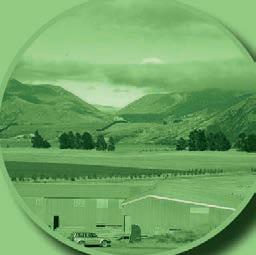
This ensures there is sufficient focus placed on operating and maintaining the existing land transport network, rather than solely concentrating on systemic change which, out of necessity, will start in the larger urban centres.”
What all this translates to is a significant bump in proposed funding for local road maintenance (the activity class that covers rural roads and bridges). From around $844m in 2023/24 it lifts to a range of $720m-$1080m in 2024/25, $890m-$1,360m by 2027/28 and $980m-$1,470m by 2029/30.
There are similar lifts in state highway maintenance funding, from around $933m this financial year right out to $1,280m-$1,960m by 2029/30.
spokesperson Mark Hooper agrees –with reservations.
“It’s a good bump, so long as the actual amounts are at the upper end of the forecast budgets.
“But even then, you’d have to question whether it’s going to be enough to catch up on years of under-investment, particularly with recent weather events having absolutely pounded rural infrastructure.”
While the government has put $6 billion into a separate Cyclone Resilience Fund it’s unclear how much of that will end up being spent on roads and bridges in rural areas.
Also unclear is whether there’s an element of “shuffling the deck chairs” in terms of the funding numbers.
The budget line for safety in the draft GPS 2024 is about 40% less than in the GPS 2021.
Roads in the regions have shared in safety improvements – is some of the boost in money for rural road and state highway maintenance and improvements merely dollars shifted across and re-categorised from safety?
Hooper said Federated Farmers agrees with Parker and the draft GPS that in terms of road and bridge repairs and upgrades, exact ‘like for like’ replacements may not be the best option, given the potential for more intense rainfall, flooding, etc.

the roading network every year at an annual cost of $1.5b-$2b. The draft GPS calls on Waka Kotahi to integrate improvement activities into the routine maintenance schedules where feasible.
“Again, with a limited pot of money, we’re wary of any move in the name of more expensive improvements vs repairs and maintenance that the priority becomes expensive highway and urban projects, at the expense of rural roads.”
Of course, all of this may be out the window if there’s a change of government in October.
Federated Farmers has argued that the increasing numbers of electric vehicle owners need to share in the costs of roading infrastructure – a change National is advocating and that Labour has also belatedly come around to.
Neil Holdom, the New Plymouth Mayor so infuriated by potholes and inadequate water table and culvert repairs he launched a nationwide petition calling for more maintenance funding, reckons the GPS “is absolutely a step in the right direction”.

Federated Farmers transport
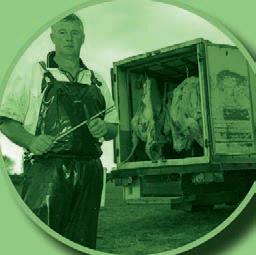

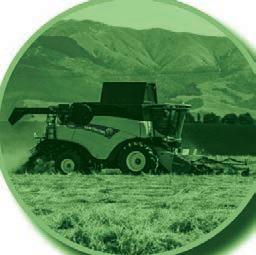
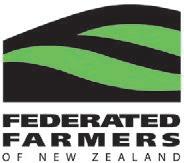


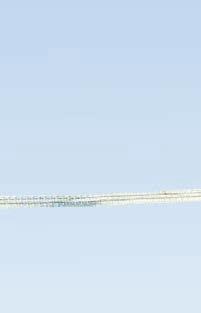
“Less vulnerable routes and more robust replacement infrastructure are worth looking at.






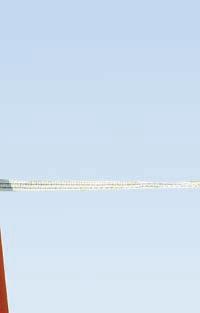

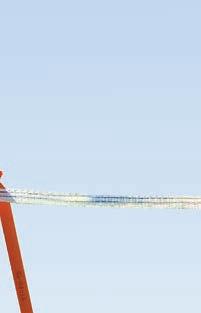

But this must not be used as an excuse to do nothing, leaving rural communities stranded or to relegate projects in those areas down the priority list.”
New Zealand currently maintains or renews around nine percent of



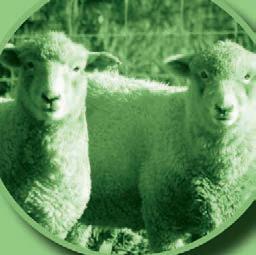

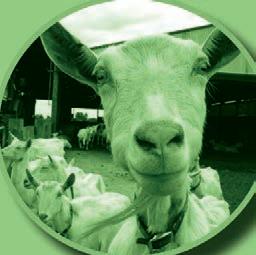



Overall, the draft GPS describes a 34% rise in the total budget when comparing 2021-2023 to 2024-2026 (i.e. $15.5b vs $20.8b).
To help meet that cost, the government is proposing a two cents per litre increase in petrol taxes and equivalent increases in road user charges (RUCs) for the first six months, another two cents in the following six months, then four cents a litre more in each of the following two years.
National is campaigning on a $24b ‘Transport for the Future’ programme, with more funding from private enterprise coming into the mix. Its plan includes a return to Roads of National Significant – 13 of them, such as the Auckland - Mill Road Stage 1, East-West Link, North West Alternative State Highway and Canterbury’s Belfast to Pegasus motorway, including the Woodend Bypass.
“Farmers will want some assurance that that such mega highway and motorway projects aren’t at the expense of maintenance and upgrades in rural areas,” Hooper said.
When it comes to farmer advocacy, there is strength in numbers. And that number is one.
With a limited pot of money, we’re wary of any move in the name of more expensive improvements vs repairs and maintenance that the priority becomes expensive highway and urban projects, at the expense of rural roads.
Mark Hooper Federated FarmersPOTTED HISTORY: Feds national board member Mark Hooper on a stretch of Taranaki road that has been patched many times.
FARMERS WEEKLY – farmersweekly.co.nz – September 4, 2023



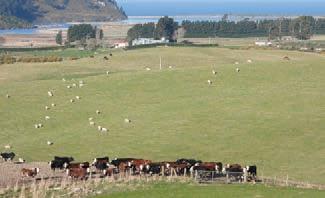


PGG Wrightson are proud to welcome you to Northburn Station, a breathtaking 13,177ha (STS) high country estate nestled amidst the pristine beauty of Central Otago. Boasting an awe-inspiring landscape, this remarkable property presents an unparalleled opportunity for those seeking an extraordinary lifestyle in one of New Zealand's most coveted landscapes. The original Northburn Run is freehold up to the top (1647m).
Northburn runs approximately 11,150 stock units of Merino sheep and cattle, on a combination of irrigated flats and terraces, developed dry land hill and oversown and top-dressed high country. Northburn presents immense development potential
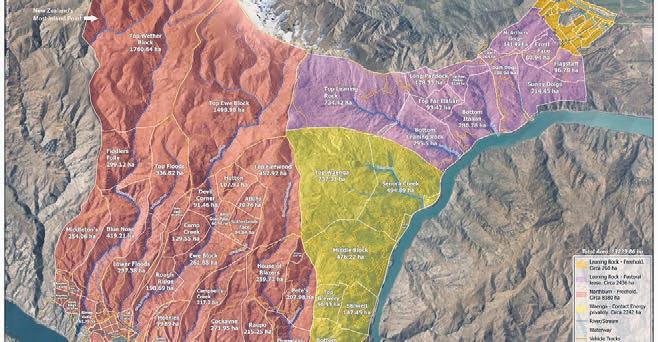
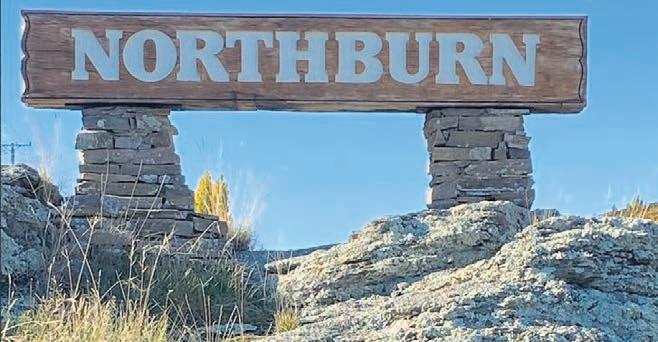
including the consented high country canyon swing operation and is a once-in-a-lifetime opportunity to own a prestigious high country station that offers unparalleled beauty, seclusion, and development potential. Whether you seek a private retreat or a visionary legacy investment along with proven award-winning merino ultra-fine wool flock, this extraordinary property is the pinnacle of high country living.
The property is currently leased to a proven high-performing local wool grower who farms the property conservatively. The property is offered for sale with this lease, which has five years to run.
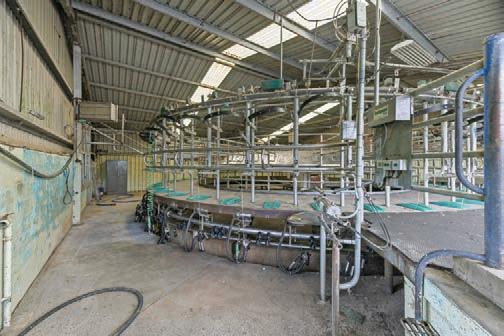
Otago Palmerston
DEADLINE PRIVATE TREATY
Plus GST (if any)
(Unless Sold Prior)
Closes 2.00pm, Wednesday 27 September
VIEW By Appointment Only
Mike Direen
M 027 434 0087
E mdireen@pggwrightson.co.nz
Trevor Norman
M 027 435 5433
E trevor.norman@pggwrightson.co.nz




5010 Hampden-Palmerston Road – 127 ha majority flat block with strong soils. Renovated 4 bedroom home. 4 bay and 3 bay sheds, 4 bay lean-to and 4 x 150 tonne silos. Strong cereal cropping history.

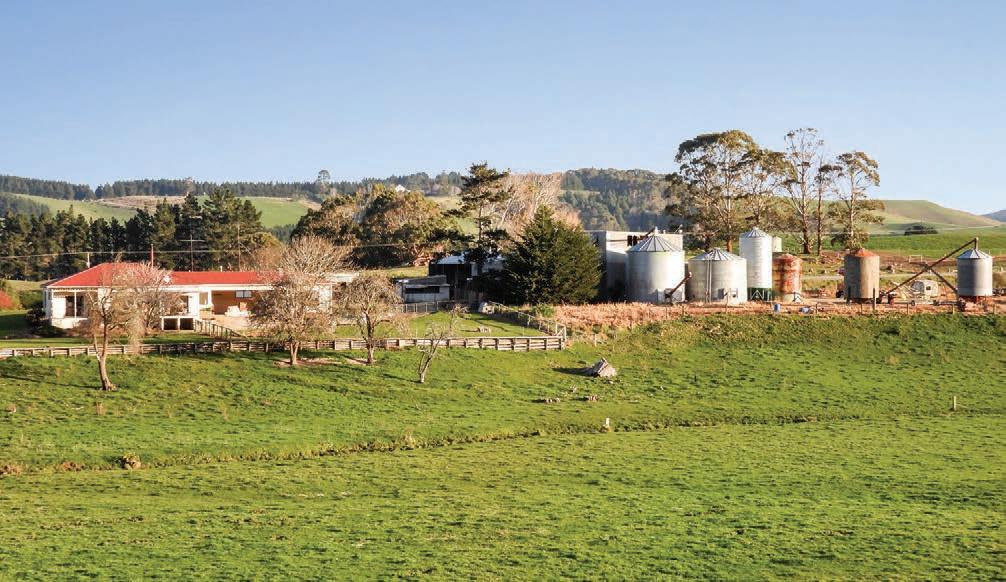
Fleming Road – 142.5 ha well balanced block divided by Fleming Road with 50% flat and remainder easy rolling contour, strong soils and good fencing. 4 bay implement shed and a 3 bay haybarn.

Chisholm Road – Approximately 100 ha block with woolshed and sheep and cattle yards (subject to survey) with flat contour and strong soils. These properties have multiple purchasing options with numerous titles.
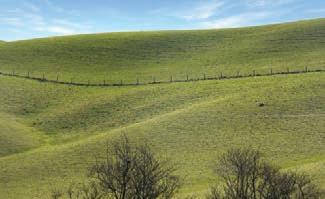





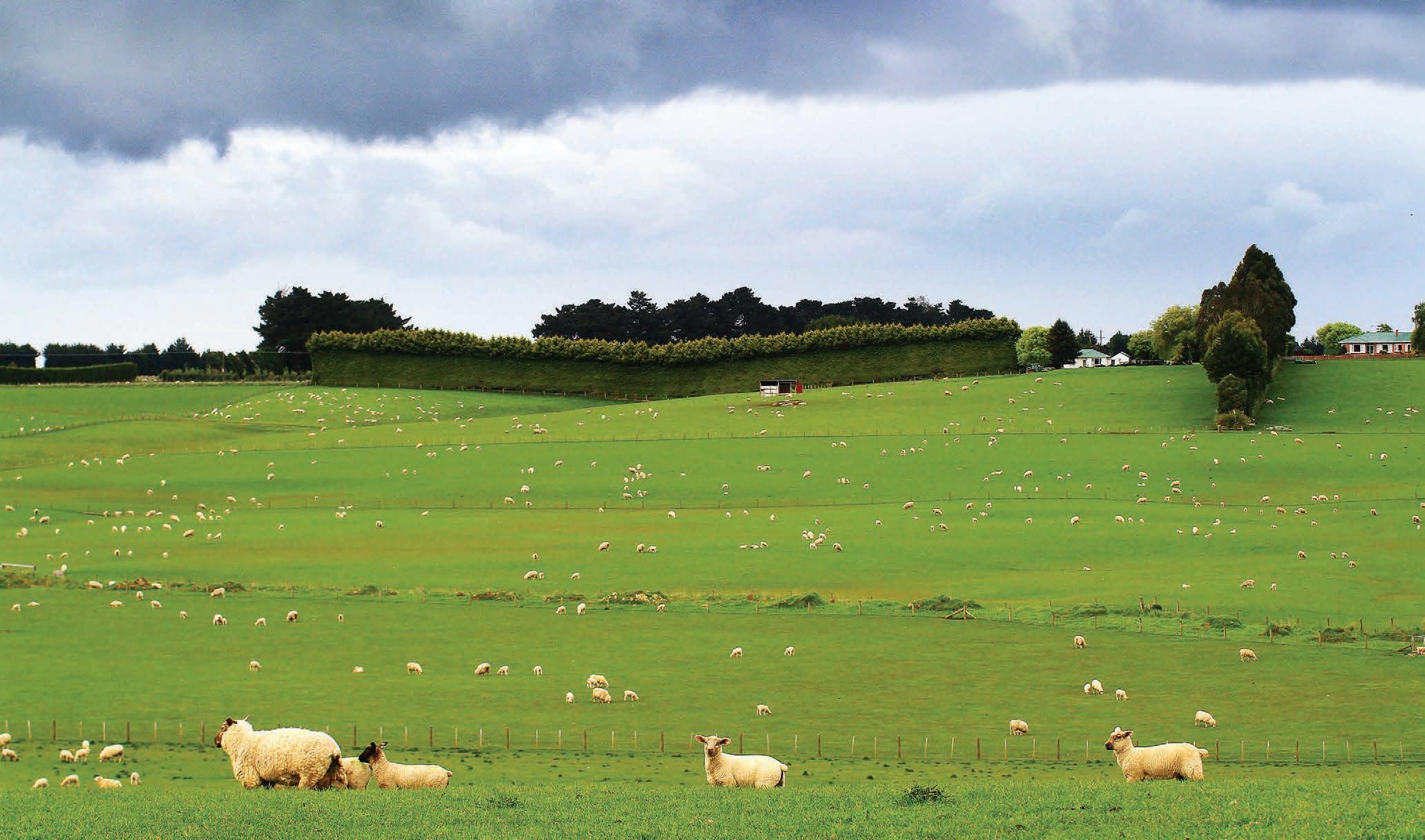
Marketplace 29
GOATS WANTED
ANIMAL HANDLING
ANIMAL AND HUMAN healer, also manipulation on horses and dogs.
Kaikoura / Blenheim / Nelson, September 4th-9th. Wellington / Manawatu / South Taranaki, September 11th-16th. King Country / Waikato, September 17-19th.
Hawke’s Bay / Wairarapa / Wellington, September 20th24th. Phone Ron Wilson 027 435 3089.

FLY OR LICE problem?
Electrodip – the magic eye sheepjetter since 1989 with unique self adjusting sides. Incredible chemical and time savings with proven e ectiveness. Phone 07 573 8512 www.electrodip.com

4X4 TAGALONG TOURS
your own 4X4 on a guided tour to discover more of the South Island.
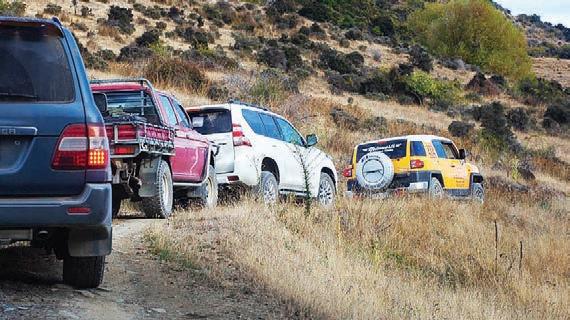

Dates: 2023 – Nov 13-16 2024 – Feb 19-22, March 4-7, March 11-14, March 25-28 April 8-11, April 22-25
Tour: 2 D’Urville Island and Marlborough Farms Tour
Other dates available for groups of 6 or more people on request Ph: 0274 351 955 E: info@southislandtoursnz.com • www.southislandtoursnz.com Under Woolshed/Covered Yards Cleaning Specialists www.underthewoolshed.kiwi
FULL,
Join LK0116202©

Farmers Weekly is celebrating its 20th birthday this year and we’re looking for someone new to join the party!
As an AgriHQ Partnership Manager representing Farmers Weekly, Dairy Farmer and AgriHQ Insights you’ll have great relationship building and customer service skills, be an awesome communicator, and will always nd a way to get the job done.

We’re looking for someone who is self-motivated, LOVES people, and is passionate about the food and bre sector. Sales experience is not necessary, but would be an advantage!
If this sounds like you, then we’re keen to talk. And for you to come and meet our innovative and energised team.
For more information about the role contact hr@agrihq.co.nz or visit agrihq.co.nz/careers

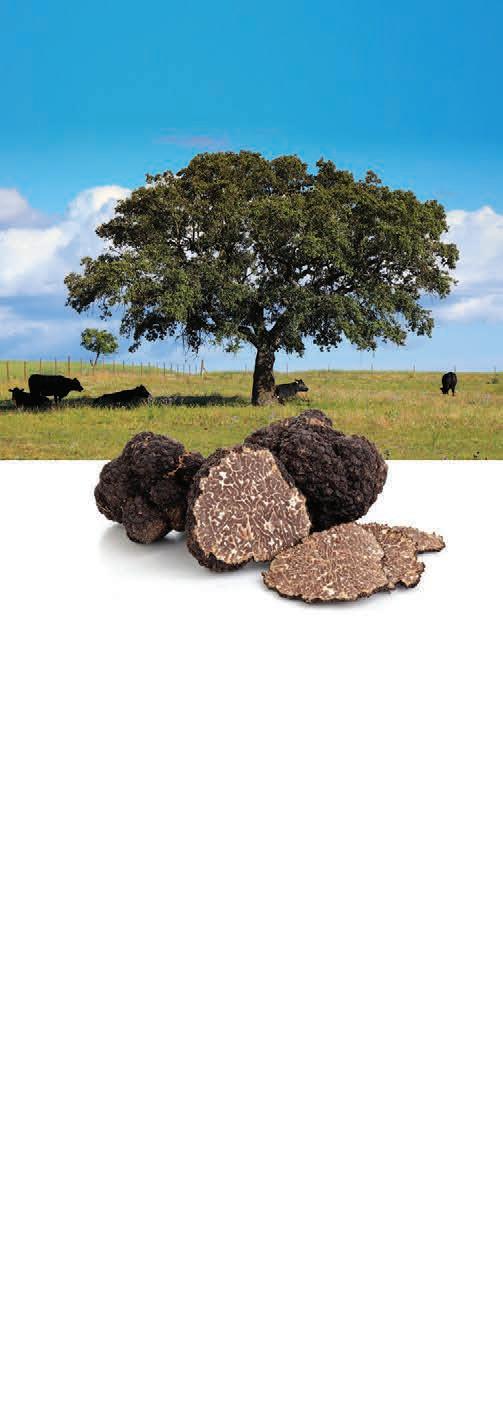
NOW WORKING IN HAWKE’S BAY / WAIROA / GISBORNE AREAS ✁ Contact Scotty to discuss all that needs to be done Ph 0800 27 26 88 • Mobile 027 26 26 27 2 • scottnewman101@gmail.com ✁ LK0116479© New Zealand’s Number 1 service provider since 2004 Digging out and remetalling cattle yards and calf sheds. Also specialising in flood damage and silt removal. To find out more visit www.mowermaster.co Phone 0800 422277 or 028 461 5112 Email: mowermasterltd@gmail.com Topper / Finishing Mower Genuine 11.5HP Briggs & Stratton Motor. Electric start. Belt driven. Cutting Height 30mm - 300mm LK0116485© $4200 GST INCLUSIVE MOWER MASTER TOWABLE MOWERS Find primary sector vacancies at: farmersweeklyjobs.co.nz To advertise phone Debbie 06 323 0765 LK0115404© Trees produce truffles at around year 7, producing up to 1kg a year by year 15. Currently black truffles are selling at $2,500$3,000 per kg, with high demand. It grows under them.

Extremely resilient. Fire resistant, stabilises erosion, frost & snow resistant to -9 degrees. Drought & heat tolerant over 40 degrees.
Add value far into the future. Trees last over 200 years. Cork harvest income at year 25, then every 10 years. Potential carbon credits at 30% with a minimum 1ha canopy cover. For tree availability call 021 327 637 or visit truffles.nz
GOATS. 40 YEARS experience mustering feral cattle and feral goats anywhere in NZ. 50% owner (no costs). 50% musterer (all costs). Phone Kerry Coulter 027 494 4194.
HORTICULTURE
NZ KELP. FRESH, wild ocean harvested giant kelp. The world’s richest source of natural iodine. Dried and milled for use in agriculture and horticulture. Growth promotant / stock health food. As seen on Country Calendar. Orders to: 03 322 6115 or info@nzkelp.co.nz
LEASE LAND WANTED
LK0116519©
CRAIGCO SHEEP JETTERS. Sensor Jet. Deal to y and Lice now. Guaranteed performance. Unbeatable pricing. Phone 06 835 6863. www.craigcojetters.com

ATTENTION FARMERS
For a delivered price call ....
0800 436 566

BALAGE FOR SALE
THIS SEASON’S QUALITY balage. 300 x $70 a bale, including gst. Located central NI. Phone 027 367 7832.
CONTRACTORS
GORSE AND THISTLE SPRAY We also scrub cut. Four men with all gear in your area. Phone Dave 06 375 8032.
DOGS FOR SALE
HEADING PUPS. Strong eye. Father tricolour, Bitch straight Black/white. Three dogs, one bitch. $350.00 each, good working parents. Phone 027 476 2579 / 07 871 9934.
ELECTRO-TEK ENGINEERING

LIVESTOCK FOR SALE
THE GULLIES WILTSHIRE & Low Input Rams. SIL; FE and worm tolerance. Richard Morrison Phone 021 626 513. richard@thegullies.nz www.thegullies.nz
RAMS FOR SALE
WILTSHIRES-ARVIDSON. Self shearing sheep. No1 for Facial Eczema. David 027 2771 556.
WANTED TO BUY
ZON BIRDSCARER electro-tek@xtra.co.nz

Phone: 06 357 2454
FARM MAPPING
MEASURE YOUR FARM’S e ective area with a practical and cost-e ective map. Visit farmmapping.co.nz for a quote.
GIBB-GRO GROWTH PROMOTANT
PROMOTES QUICK
PASTURE growth. Only $6.50+gst per hectare delivered. 0508-GIBBGRO [0508 442 247] www. gibbgro.co.nz. “The Proven One.”
GOATS WANTED
GOATS WANTED. All weights. All breeds. Prompt service. Payment on pick up. My on farm prices will not be beaten. Phone David Hutchings 07 895 8845 or 0274 519 249. Feral goats mustered on a 50/50 share basis.
SAWN SHED TIMBER including Black Maire. Matai, Totara and Rimu etc. Also buying salvaged native logs. Phone Richard Uren. NZ Native Timber Supplies. Phone 027 688 2954.
Advertise with us
STORTFORD LODGE
Wednesday 13th September – 10.30am
WAITARA STATION, Te Pohue
Lloyd & Sonia Holloway & Family,
• 185 R1yr Angus Steers
• 20 R1yr Charolais Angus x Steers
• 30 R1yr Angus Heifers
• 20 R1 Charolais Angus x Heifers
These are a quality line of November/December born homebred Angus Cattle with fantastic temperament. Tarangower bred that are farmed up to 4000ft above sea level.
TB status: C2
Contact: Sam Wright 027 247 9035


Call Andrea 027 602 4925
Friday 15 September
11.30am | Paeroa Saleyards
Comprising:
• 4 Recorded 2yr bulls Ave BW 387
• 30 Recorded yearling bulls Ave BW 393
1 Recorded Xbred 2yr bull BW 407
4 Recorded Xbred yearling bulls Ave BW 398 BWs to 460 — 18 bulls over 400 BW
Our vendors have supplied numerous bulls to the AI industry (Crescent & Little River) over many years and regularly have bulls in the top indexing sires in the country. In fact our vendors have supplied 24% of the sires on the current Jerseys RAS list.
A lot of bulls on offer are bred from or closely related to these highly sort after families who have supplied these AI sires.
The bulls are well grown, owner bred & reared on their farms so tick all the health security boxes.
Most of these bulls are G3 profiled and their A2 status is listed in the footnotes so the resultant offspring can be kept with confidence.
BVD tested and vaccinated. Deferred payment until 20 October 2023. For purchasers outside the Waikato arrangements can be made to hold bulls for a few days for transport.



Catalogues can be viewed online either at AgOnline or Bidr for a hard copy please phone.

Kent
Key: Dairy Cattle Sheep Other

26TH ANNUAL 2YR JERSEY BULL SALE
Monday 11 September 11.30am | 105 Tahaia Bush Road, Otorohanga.
A/C Tetley Jones Agriculture Ltd.
Comprising:
• 160 R2yr Jersey Bulls
Bulls ideal for both Heifer & Cow matings
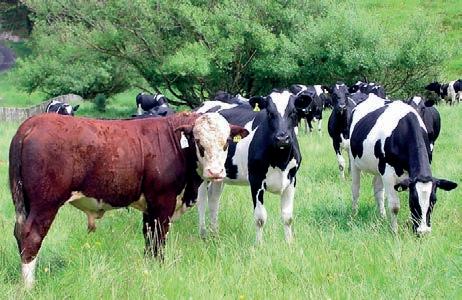
Come forward in excellent condition
• Formed on hills, fit & active raring to go
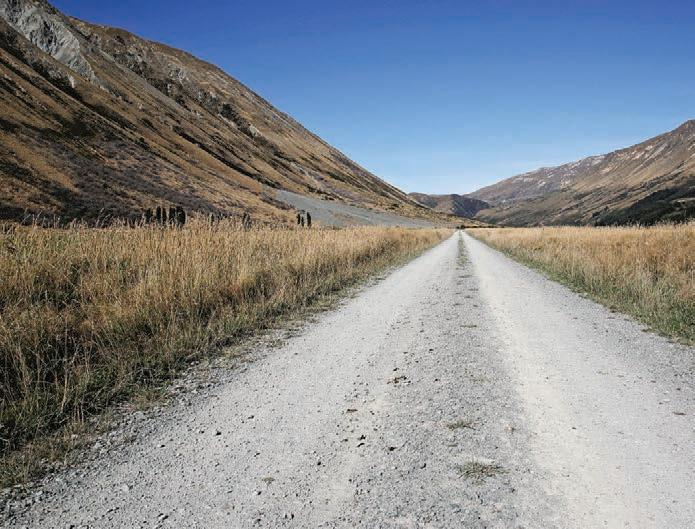
• Double vaccinated & booster shot for BVD
Delivery:
Option 1 – 50kms transport subsidy if purchaser takes bulls day after sale date.
Option 2 – Free grazing until 20 October, nominated delivery days (every Mon & Thurs) until 20 October, pick your delivery date.
Great opportunity to purchase quality Jersey Bulls for Herd & Heifers.

Shay Egan 027 473 5856
Dean Evans 027 243 1092
@fowlerfarmsbullsale
The biggest selection of top quality service bulls Auctioned in Taranaki this spring. 470 Wilford Road, Hurleyville, Tuesday 12th September at 11.00am
ORDER OF SALE:

A local bar was so sure that its bartender was the strongest man around, that they offered a standing $1,000 bet.
The bartender would squeeze a lemon until all the juice ran into a glass, and hand the lemon to a patron. Anyone who could squeeze one more drop of juice out would win the money.
Many people had tried over time (weightlifters, longshoremen, etc.) but nobody could do it.
One day a scrawny little man came in, wearing thick glasses and a cheap suit, and said in a tiny, squeaky voice, “I’d like to try the bet.”
After the laughter had died down, the bartender said okay, grabbed a lemon, and squeezed away. Then he handed the wrinkled remains of the rind to the little man.
But the crowd’s laughter turned to total silence as the man clenched his fist around the lemon and six drops fell into the glass.
As the crowd cheered, the bartender paid the $1,000, and asked the little man, “What do you do for a living? Are you a lumberjack, a weightlifter, or what?”
The man replied, “I work for the IRD.”



Store Lambs 30-45kg
Scanned In-Lamb Ewes (Late Mar/Apr Ram)
1YR Frsn Bulls 180-250kg
1YR Ang or Ang X Steers 200-260kg
2YR FRSN, FRSN X or Beef Bulls 360-500kg
2YR Beef Bred or Frsn/Here Steers 400-500kg

www.dyerlivestock.co.nz Ross Dyer 0274 333 381


A Financing Solution For Your Farm

E info@rdlfinance.co.nz

Sean & Jodi Brosnahan – 386 Wainui Road, Ohope Friday 15th September 2023, 12pm
These R1 bulls plus a selection of R2 bulls are from NZ’s most remote farming area. They are truly station bred from hill country and are mainly NZ genetics. They are of impeccable temperament, soundness, type. 100% grass only – Closed herd. TB = C10.
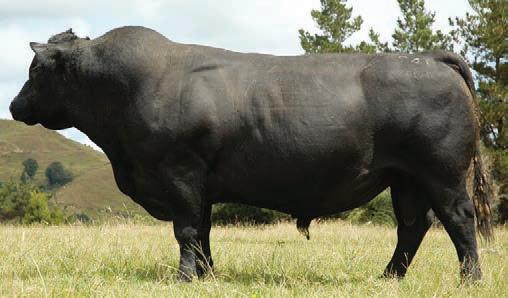


www.resurgamangus.com


Brent Bougen – Auctioneer 027 210 4698
Shaun Bicknell – 027 221 1977

THURSDAY 28TH SEPTEMBER 2023
Online BIDR sale 7pm – 7th September 2023
16 Yearling Bulls – mostly Polled
• Very quiet temperament

• BVD tested negative and vaccinated twice
A QUALITY SELECTION OF 30 IMPRESSIVE YEARLING BULLS WITH LOW BIRTH WEIGHT & EARLY GESTATION + HEIFERS WHICH ARE SOLD IN LOTS.
NON-TRANSFERRABLE



12 NOON, 662 RANGITATAU EAST ROAD, WANGANUI DON’T MISS OUT – ENQUIRIES TO:

• Some low birth weight bulls available
For sale information contact: Peter Maxwell, Auckland 09 524 9483 or 021 686 778 peter.maxwell@cornwallpark.co.nz

Cam Heggie, PGG Wrightson 027 501 8182 camheggie@pggwrightson.co.nz

Check out Poll Dorset NZ on Facebook nzsheep.co.nz/poll-dorset-breeders
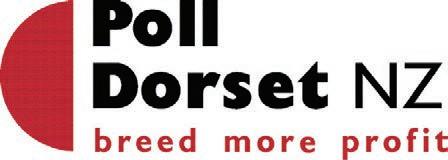




7TH ANNUAL SERVICE BULL AUCTION
DELAYED PAYMENT OPTION




A/c Piquet Hill Farms Ltd


Date: Wednesday 13th September
Address: 887 Te Akau Road, Te Akau (West of Huntly)
Start Time: 11.30am (under cover, lunch provided) will be available for online bidding
COMPRISING: 500 x Quality Hill Country Bulls
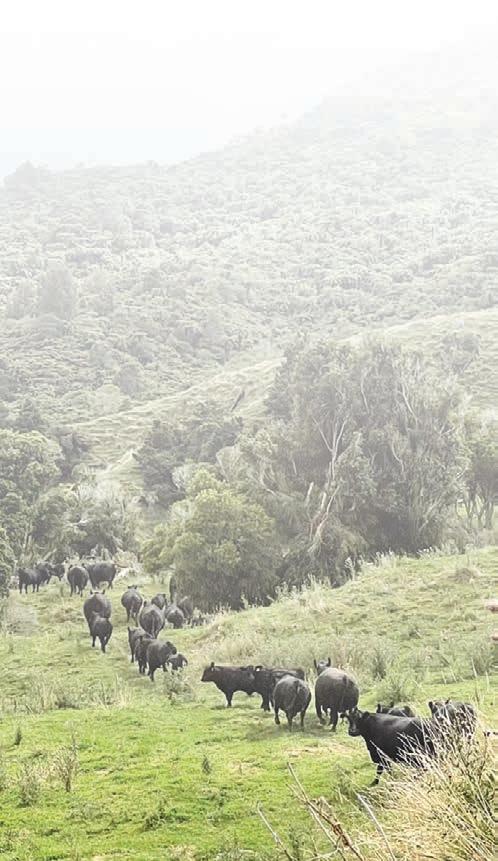
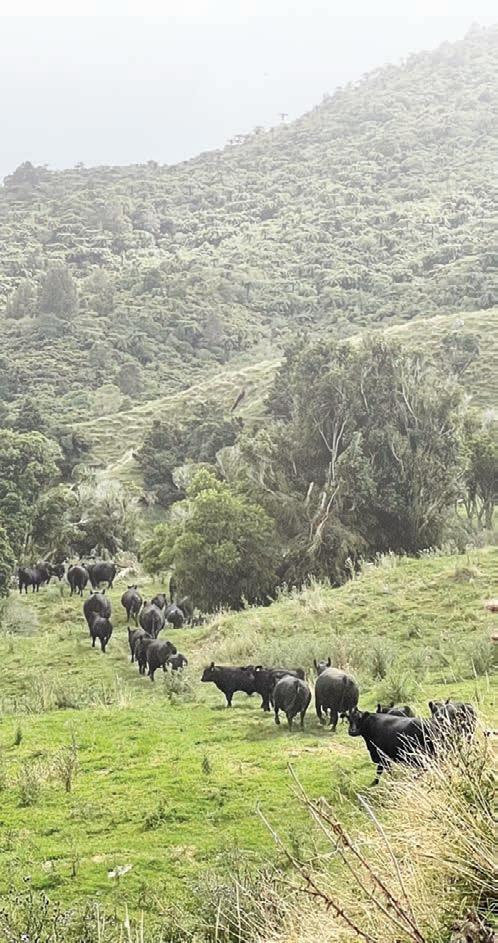







DETAILS:
100 x Hereford 2 & 3 Year
90 x Angus 2 & 3 Year
6 x Murray Grey 2 Year
130 x Jersey 2 & 3 Year
TBC x Friesian 2 Year 80 x Jersey 18 Month Suitable for Heifers
AUCTIONEERS NOTE:
• All bulls are TB tested, inoculated and BVD tested.
25 low birth, positive calving ease bulls for your heifer mating season Inspection and Enquiries always welcome. All bulls BVD vaccinated and tested. Lepto vaccinated. TB C10.
DEAN & TERESA SHERSON 675
• All bulls are double vaccinated for pink eye with Piliguard.
• Mycoplasma Bovis free property.
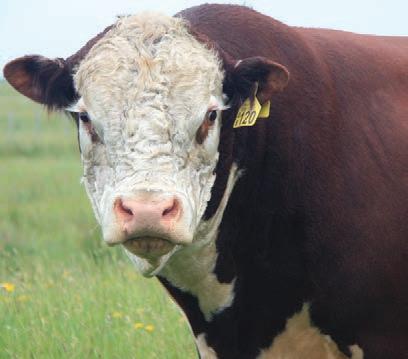
• Option to lease bulls at 40% of the knock down price at the auction. Freight paid both ways on lease bulls only.
PAYMENT/TRANSPORT/GRAZING:
Payment due 1st October 2023 or Deferred payment is available until 10th January 2024 at $50/HD.

Free grazing to the 20th November if required. Delivery available twice a week: Tuesday and Friday.

OUR VENDOR:
Will Jackson M: 027 739 9939
CARRFIELDS LIVESTOCK AGENT: Jack Kiernan M: 027 823 2373

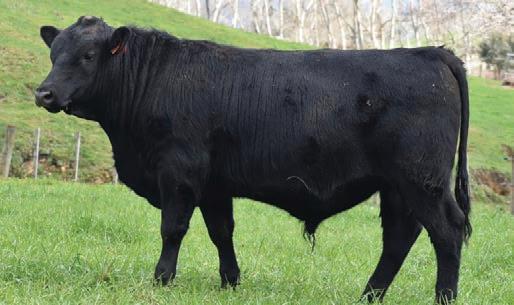

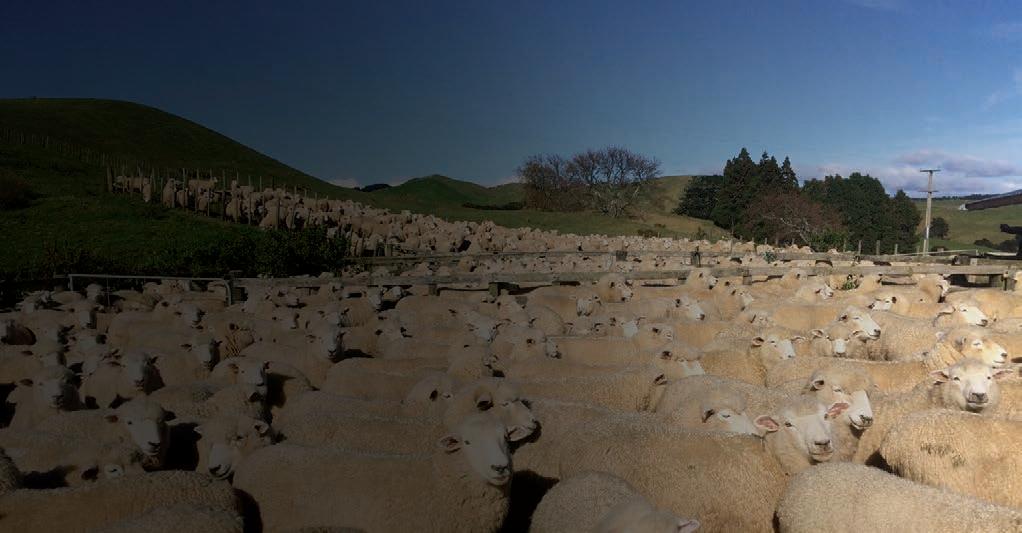










Tuesday 19th September 2023 at 12 30pm
To be conducted at Rolling Heights Farm



500 McDonald Mine Road, Waikokowai, Huntly Comprising of:
11 2yr Purebred Hereford Bulls
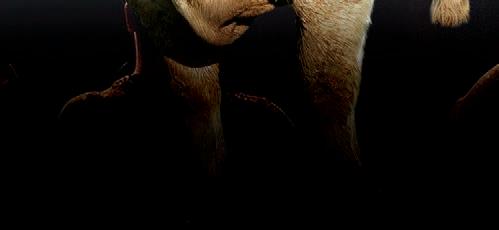

32 1yr Purebred Hereford Bulls
VALDA ROSE HEREFORD BULL SALE 4TH ANNUAL SALE
60 Hutchinson Road, Walton
Tuesday 12th September 2023 - 12 Noon
60 x Registered 1yr Hereford Bulls

50 bulls have been DNA tested and 10 are Recorded to one Sire
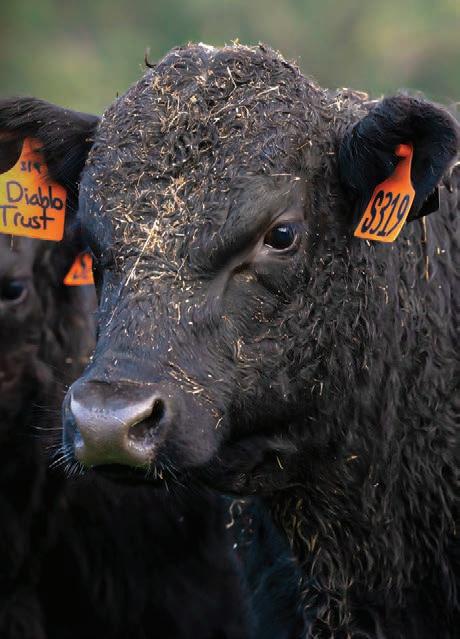
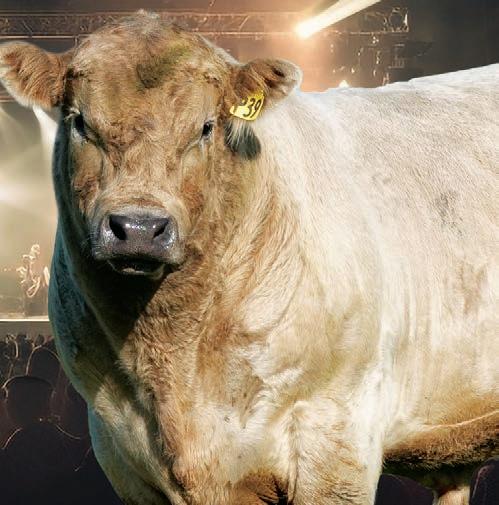
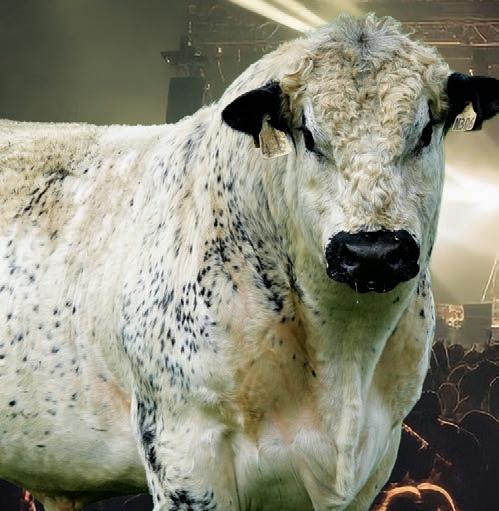
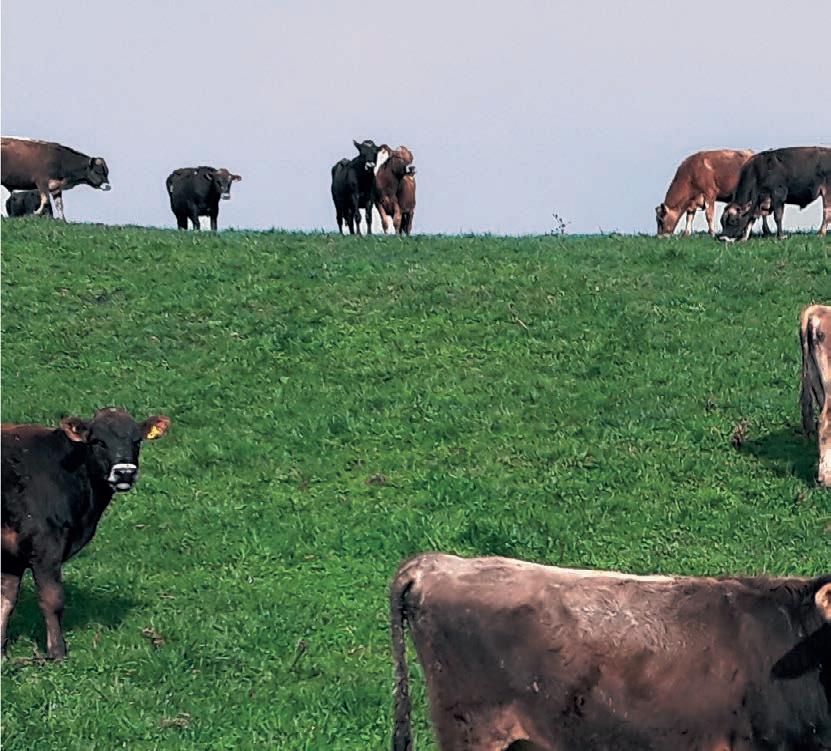
Exceptionally quiet and well grown low birth weight bulls.
To view full catalogue www mylivestock co nz
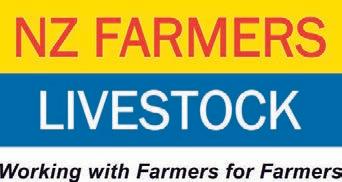
Live Streamed with online bidding available on MyLiveStock

Live Streamed with online bidding available on MyLiveStock (please register 48 hours before auction) www.mylivestock.co.nz
Top yearlings (460kg+) grown to suit heifer mating, cow mating or beef mating
VENDORS: Colin & Carol King P: 06 752 9863 | E: ccking@farmside co nz
Contact Vendor: Cory Norman 021 024 12686
NZFLL Stud Stock: Brent Bougen 027 210 4698
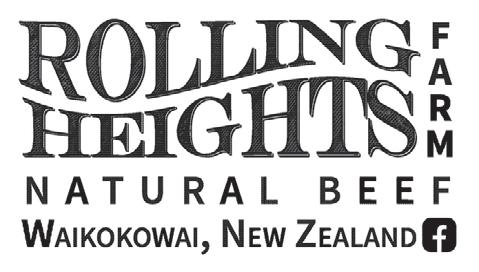
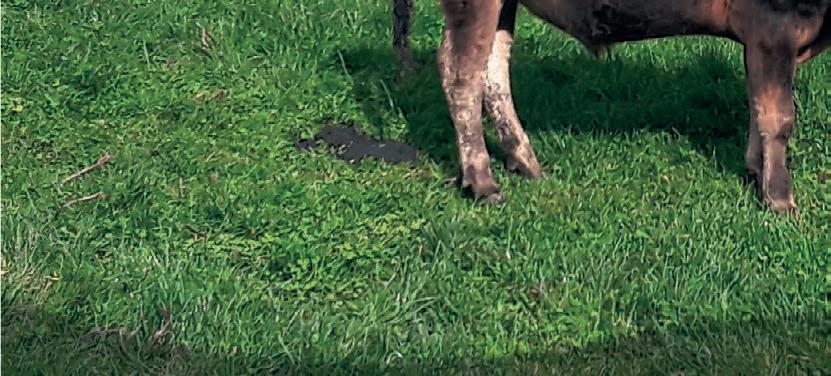


Specialist low birth weight bulls averaging birth weight EBV of 1.7, top 10% of breed, compared to the Trans Tasman breed average of 4.
trees from Cambrilea Riparian Services. Light luncheon & drinks provided. Signposted from Mobil Karapiro. SH1
Tuesday 12 September @ 12 noon 82318 State Highway 2, Pahiatua

Daimien and Tally 021 430 710

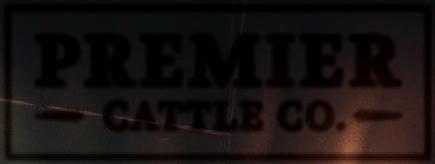
www.totaranuistud.co.nz


LK0116346©

"McFadzean bulls offer a large genepool for superior selection

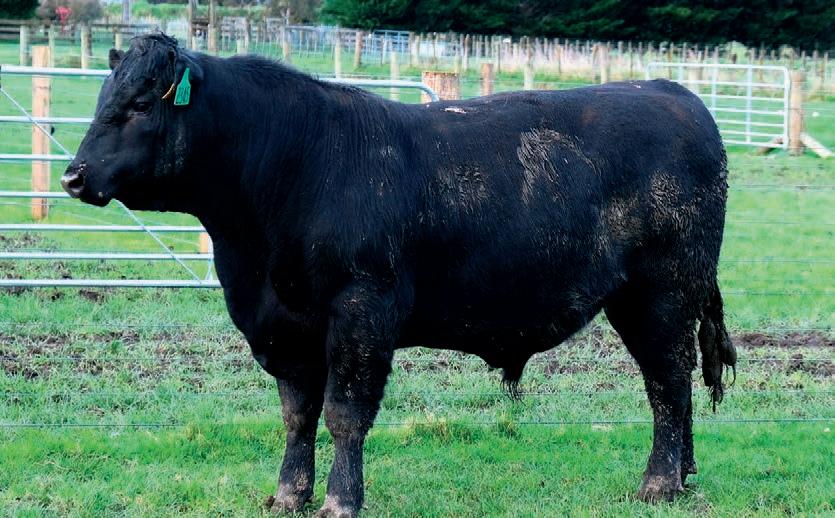
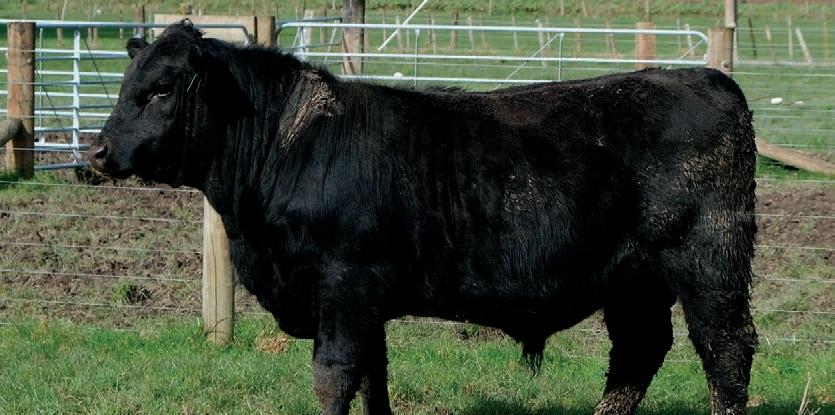

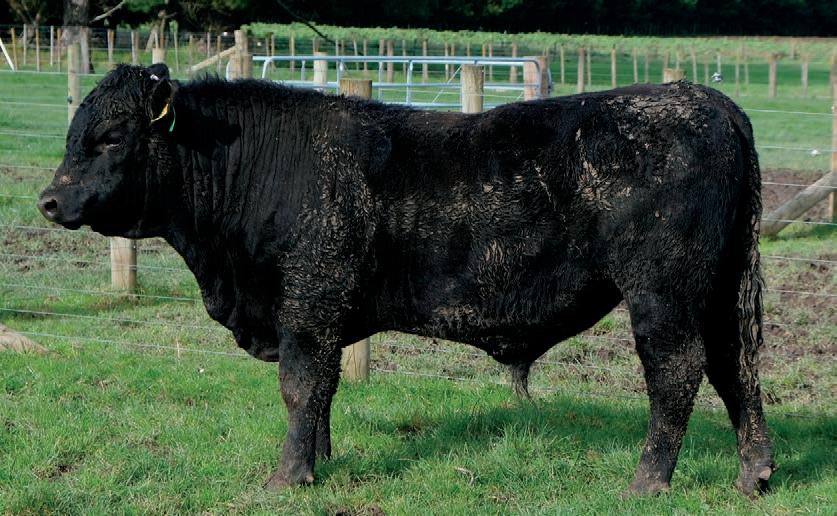
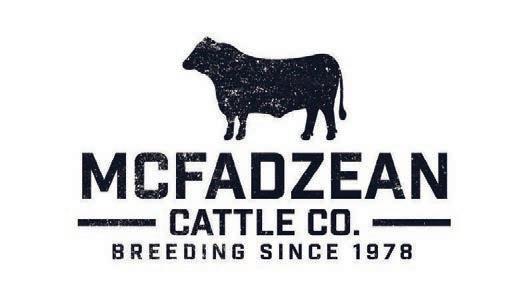



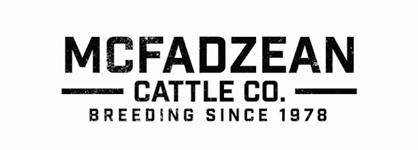
The Meat Makers are consistently providing the improvements in our cow herd.
They have a fantastic temperament and outstanding growth

They really stamp their mark on the weaners, increasing our weaning weight by up to 25-30kg


Repeat buyers for our 2yr olds pay us 30c/kg premium through the saleyards

Our heifers constantly scan 100% The sire bulls are easy to deal with during the off season "

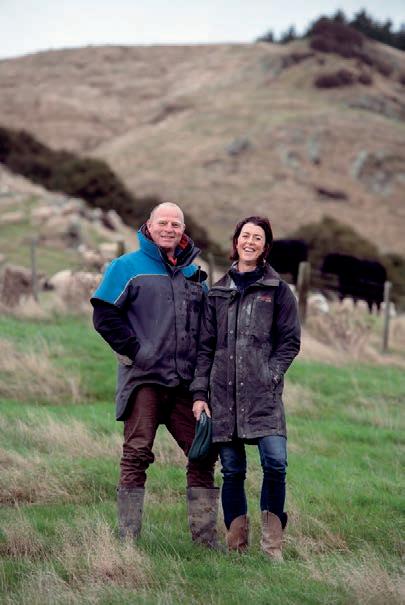
Farm budgeting for the new season offload has had time to factor in a dismal lamb outlook, but that’s about the only positive.
Mel Croad MARKETS LambSHEEP farmers have endured almost 12 months of depressed prices – and unfortunately those prices aren’t out of the woods yet.
The only positive this time round is that the warning shots were fired much earlier in the season, allowing clarity around short- to medium-term on-farm decisions.

Farm budgeting for the crucial new season offload period has had time to factor in the weaker outlook.

This is in stark contrast to last year, when lamb prices pushed to $9.60/kgCW in September as procurement pressure clouded market reality.
As market conditions deteriorated, farmgate prices fell hard, unravelling all expectations that the new season would be just as strong.
While winter finishers were
enjoying $211/head for 22kgCW lambs in late September last year, sheep breeders offloading 17.5kgCW new season lambs in mid-December were banking only $130/hd.



Those targeting the new season offload are accustomed to being price takers, but even last year’s steep drop was difficult to stomach.
Possibly, lessons have been learnt from that dark period late last year, because as soon as export markets started to stutter in June this year, the brakes came on any further pricing upside.
In the space of seven weeks, 75c/ kg was erased from farmgate lamb prices as meat companies aligned with the softer export conditions at play, rather than chase lambs.
Unsurprisingly, the change of tack in winter pricing signals led to a rush of lambs into processing plants.
In the eight weeks to the end of July, the New Zealand lamb kill surged to 2.015 million lambs

– a lift of over 215,000 lambs compared to the same period last year and 370,000 more than the five-year average for this period. Driving this upside was a 13% lift in North Island weekly slaughter rates through this period.
prices are on the cusp of lifting, but average export values for lamb and mutton continue to paint a much softer picture.
As processing numbers started drifting lower through August and the NZD dropped below US60c, farmgate lamb prices stabilised. Anticipation is growing that farmgate lamb prices are on the cusp of lifting, but average export values (AEV) for lamb and mutton continue to paint a much softer picture.
July AEV for lamb dropped by
almost $1/kg month on month and were $1.50/kg lower than a year ago.
Those sorts of stats combined with much weaker procurement pressure make it clear why farmgate lamb prices are currently sitting $2.50/kg behind a year ago.
Mutton prices have also hit the skids, tracking almost $3/kg behind this time last year.
On a per-head basis, farmers are receiving $70-$73 less for their cull ewes than a year ago.
Despite farmgate prices and export values retreating to levels last seen in 2017, ewe slaughter rates picked up as prices dropped.
Mutton slaughter rates tend to taper off between now and the end of September, but farmers are still going to feel this notable reduction in returns compared to previous years.
The key drivers pushing lamb and mutton prices lower are well known.
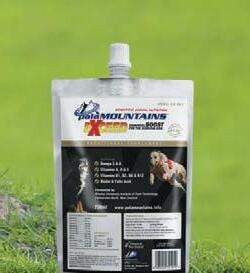
Increased Australian supplies and weaker pricing out of China

remain at the core – and there isn’t another market stepping up to take the pressure off.
If anything, China has shown slight upside in recent weeks, but it hasn’t been consistent or widespread enough to instil any changes to on-farm returns.
Key cuts like NZ lamb flaps into China have lifted to nearly US$6/ kg in the last week, which is a good improvement on July values. But this subtle upside hasn’t even got close to matching returns over the past couple of years with the deficit being upwards of nearly US$3/kg, indicating there is still plenty of ground to recover. While lamb is still selling globally, the emerging theme appears to be one of securing protein at cheaper prices than recent years.
The next few months are critical to understanding the scope and depth of demand for NZ lamb, with Christmas chilled trade and buying for Chinese New Year both approaching.
Anticipation is growing that farmgate lamb
Bidr opened up the buying bench at the Castlerock cattle fair on Friday August 25 and helped ensure a successful sale.
Nearly 1200 cattle were offered and featured top lines of traditional cattle. Just over 80% of the yarding were yearlings and the steers ranged from $3.70/kg to just under $4.00/kg while the heifers mostly sold from $3.30/kg to $3.50/kg.
Many of the most common injuries that put farmers out of action for a week or more, happen while handling livestock. From impacts. to slips and muscular strains, one bad moment can easily become a big drain on the business - or a life-changing disability.
So lets take livestock handling seriously, talk about our risks, yards and ramps, and come together, to set a new standard.
SIGN THE PLEDGE, AND JOIN THE CHANGE. AT farmwithoutharm.org.nz
| 128 cattle, 1630 sheep



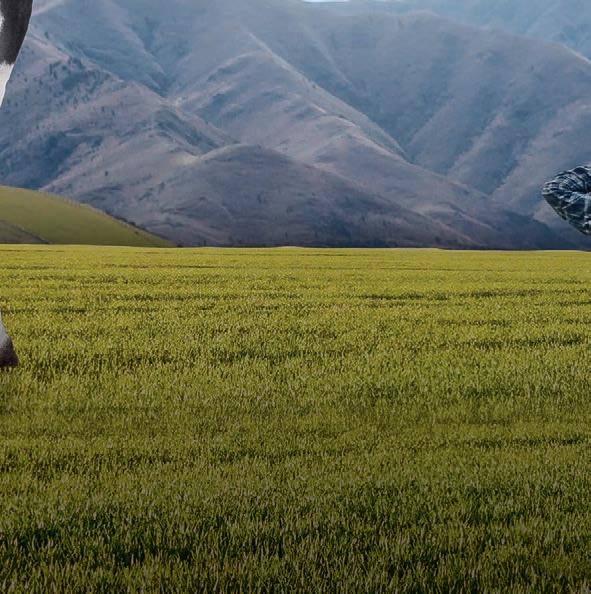
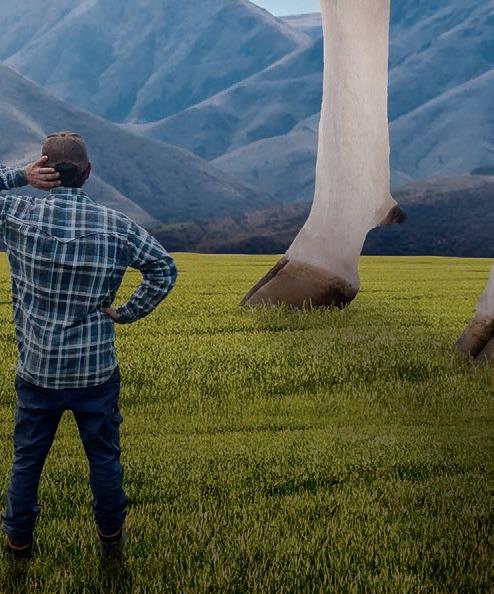


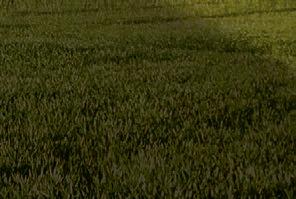
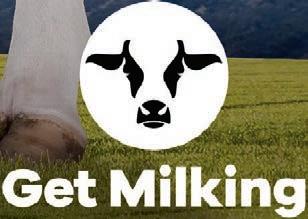




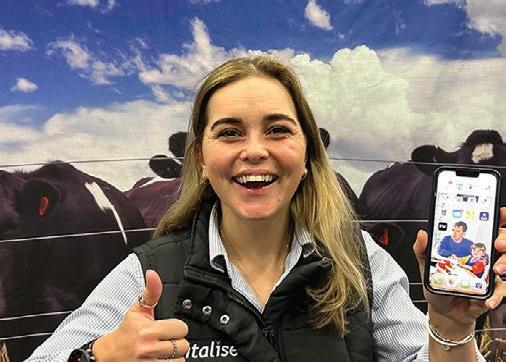

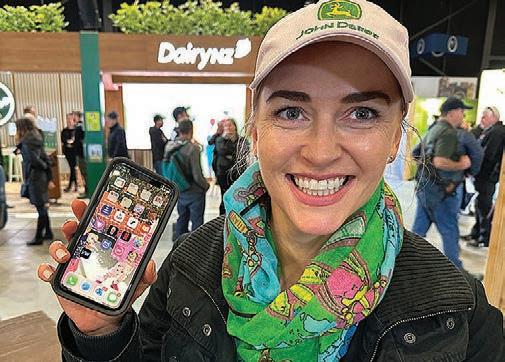




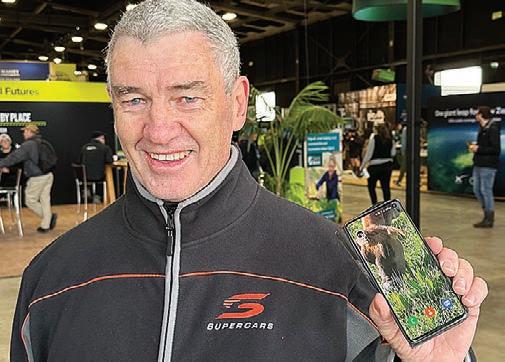

feed wheat ($/tonne)
($/tonne)
WMP futures - vs four weeks ago (US$/tonne)
Waikato palm kernel ($/tonne)
iPhone or iPad
• Open Safari. Other browsers, such as Chrome, won’t work for this.




• Navigate to farmersweekly.co.nz. Tap “Go.”
• Tap the Share button on the bottom of the page. It looks like a square with an arrow pointing out of the top.
• In the list of options that appear, scroll down until you see Add to Home Screen. Tap this. The Add to Home Screen dialog box will appear.
• Choose a name for the website shortcut. You’ll see the link so you can confirm it. Click Add when you’re done.
Android
• Open your web browser eg Chrome.
• Navigate to farmersweekly.co.nz.
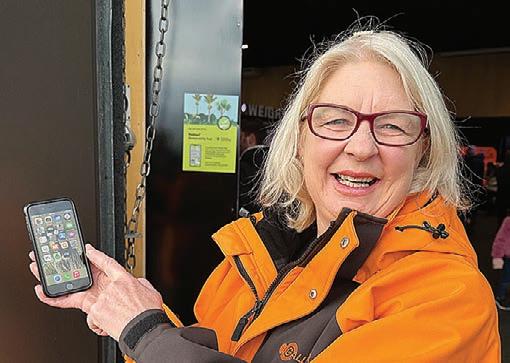
• Tap the menu icon (3 dots in the upper right-hand corner) and tap Add to home screen.
• Choose a name for the website shortcut, then your browser will add it to your home screen.
 Philip Duncan NEWS Weather
Philip Duncan NEWS Weather


SEA surface temperatures in the tropical Pacific are still exceeding El Niño thresholds and have continued to warm slightly over the past fortnight. Climate models indicate further warming of the central to eastern Pacific is likely this year, with these sea surface temperatures remaining above El Niño thresholds until at least early 2024.
So why isn’t El Niño officially declared here yet? Put simply, the warmer-than-usual sea conditions near South America need to also couple with the atmosphere here – yes, as far away as New Zealand and Australia.
That’s the part that’s still not quite there – although it’s getting much closer. Conditions around the southwest Pacific are just below El Niño thresholds, and trade winds and Pacific cloudiness have not yet demonstrated sustained El Niño patterns.
This means that, overall, atmospheric indicators suggest the Pacific Ocean and atmosphere
are not yet consistently reinforcing each other, as occurs during El Niño events.
El Niño typically suppresses spring rainfall in eastern Australia, and that is not yet happening to a significant enough degree. Here in NZ there are still some remnants of the recent La Niña, although August certainly put a big dent in that with temperatures the coldest they’ve been in some locations (like Auckland and Waikato) for 12 years.
What a difference, considering the first two months of winter and last two months of autumn were so incredibly warm.
Despite no official El Niño declared yet, that doesn’t mean the conditions aren’t already showing up.
The colder-than-average August, the magnificent snow base on Mt Ruapehu, the frequent frosts lately – and a drying out phase in the east – are all signs of El Niño moving in (and also signs of a normal weather pattern following years of La Niña).
The issue now is just how long it will take and how dry things will get.
Think of El Niño developing as climbing a mountain – once it’s announced and is officially with us, we still have to reach the peak and then climb back down the other side and that can take several months.
So, simply put, hints of El Niño are showing up now and the peak of it may not be until midSummer. Then we have to see conditions return to neutral as we go through 2024.
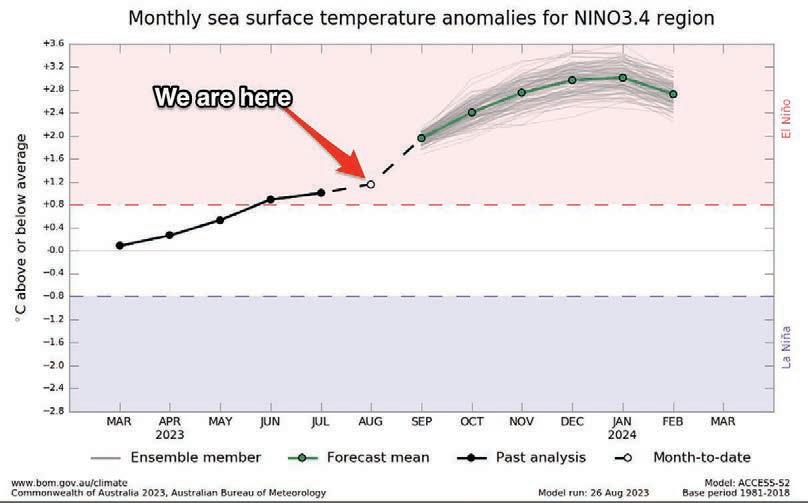
This means some areas in NZ may become especially dry over the next six months.



Places most at risk for dry weather will be the north of both islands, inland areas of both





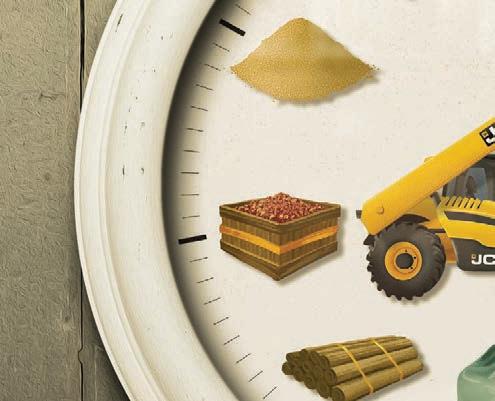
IT’S COMING: Sea surface temperatures in the tropical Pacific are still exceeding El Niño thresholds and have been warming slightly over the past two weeks.
islands and to the east of many ranges.
There is one big positive wild card: Our location on earth. With everyone south of Whanganui being inside the Roaring Forties belt of windy, changeable weather, even with an El Niño spring and summer developing we will still get the odd rain maker – though over the coming months we may find they occur less and less.

• Weak low pressure hovers over northern NZ early this week
• Fewer frosts nationwide

• Slightly milder this week
• Winds mostly northerly quarter
Some farmers think a telehandler is for the big farms or best suited to European or North American operations. But you’ll be surprised to know that telehandlers are the fastest growing on-farm utility category in the New Zealand market. You’ll also be surprised by what you can do with a LOADALL and how much it improves productivity on all types of farms. You won’t however be surprised to know that the JCB SERIES III is the world’s No.1 LOADALL.
You’ll wonder how you farmed without it!

JCBAGRICULTURE.CO.NZ



NOT YET: Atmospheric indicators suggest the Pacific Ocean and atmosphere are not yet consistently reinforcing each other, as occurs during El Niño events.